THE WINE MERCHANT.
An independent magazine for independent retailers Issue 140, October 2024



Sales are up 25% on five years ago, according to Liberty Wines study – though most indies have seen falls since 2022
The independent wine market has grown by 25% since 2019, according to a new report, which also reveals that the number of consumers shopping at indies increased by 10% during that time.
The study, commissioned by Liberty Wines, analyses card spending in 100 of the UK’s leading independent wine shops. It was carried out by Hospitality
Data Insights, which works with banks to build up a detailed picture of consumer behaviour.
Indies are slightly outperforming chains such as Majestic in terms of the growth they have seen in their wine sales, the report says, with supermarkets lagging a long way behind.
“This report gives us real optimism for the long-term future of indies,” says Liberty
Wines chief executive Tom Platt. “Not only is the indie market 25% larger today than it was in 2019, but the quality of wine sold is higher.
“Perhaps more importantly, the number of consumers shopping at indies is up 10% since 2019, due to an increase in younger shoppers. There is a real opportunity for indies to encourage these younger consumers to spend more over time

4 comings & GOINGS
Recent openings, relocations and closures in Indieland
14 tried & TESTED
Wines that caught our attention at the September tastings
21 bright ideas
Charging punters to help put wine samples through their paces
28 merchant profile
We pay a visit to north Norfolk where Satchells is still going strong
37 cheese masterclass
A report from our recent webinar with The Academy of Cheese
44 Jeroboams interview
It may have a £35m turnover, but it still sees itself as an independent
58 spotlight on spain
Three indies reveal what makes their Spanish ranges tick
64 focus on fortifieds
Port promotes its terroir while sherry aims for a younger crowd
83 Q&A: charles back
The Fairview owner remembers an early overdose of Chenin Blanc
too, particularly as wine consumption continues to shift towards the off-trade.”
The report says that the average age of customers in independent wine shops is now 55, compared to 57 in 2019.
Most sales in indies are to male customers, a statistic that is amplified among the bigger spenders. Men account for 52% of monthly spends below £20, and 79% of monthly spends above £120.
“Indies clearly have breadth of appeal across genders, but there is still work to be done in engaging female customers across age and spending groups,” the report says.
Independent wine merchants in the south of England “consistently outperform the market”, according to the data. Their peers in London and the north of England generally keep pace with the market, while those in the Midlands, Wales, Scotland and Northern Ireland track slightly below.
“There isn’t a clear reason to explain these trends individually, though a more
stringent approach to Covid-19 regulations in Wales and Scotland likely suppressed initial sales growth when compared to England,” the report suggests.
Although the study paints an optimistic picture of the independent trade, it acknowledges that times have been tough for indies in more recent years.
It finds that 88% of merchants have seen their sales decline since 2022, with 44% witnessing a sales drop of more than 10%.
“Sales have remained flat since 2022, about 25% above 2019 levels,” says Platt. “But this masks an undeniably challenging couple of years for indies, with costs rising significantly and volume sales falling.
“This reflects what we have seen in our premium on-trade report for several years. Consumers are drinking less wine in volume terms and, therefore, it is crucial to encourage them to spend on better wine to drive growth.
“The data suggests that indies have generally been successful in encouraging consumers to trade up, even though some of this spend on better wine has been eroded in the past couple of years by market challenges.”


winemerchantmag.com 01323 871836 Instagram: @WineMerchantMag

Editor and Publisher: Graham Holter graham@winemerchantmag.com
Assistant Editor: Claire Harries claire@winemerchantmag.com
Advertising: Sarah Hunnisett sarah@winemerchantmag.com
Accounts: Naomi Young naomi@winemerchantmag.com
Admin and reader liaison: Charlotte Gingell charlotte@winemerchantmag.com
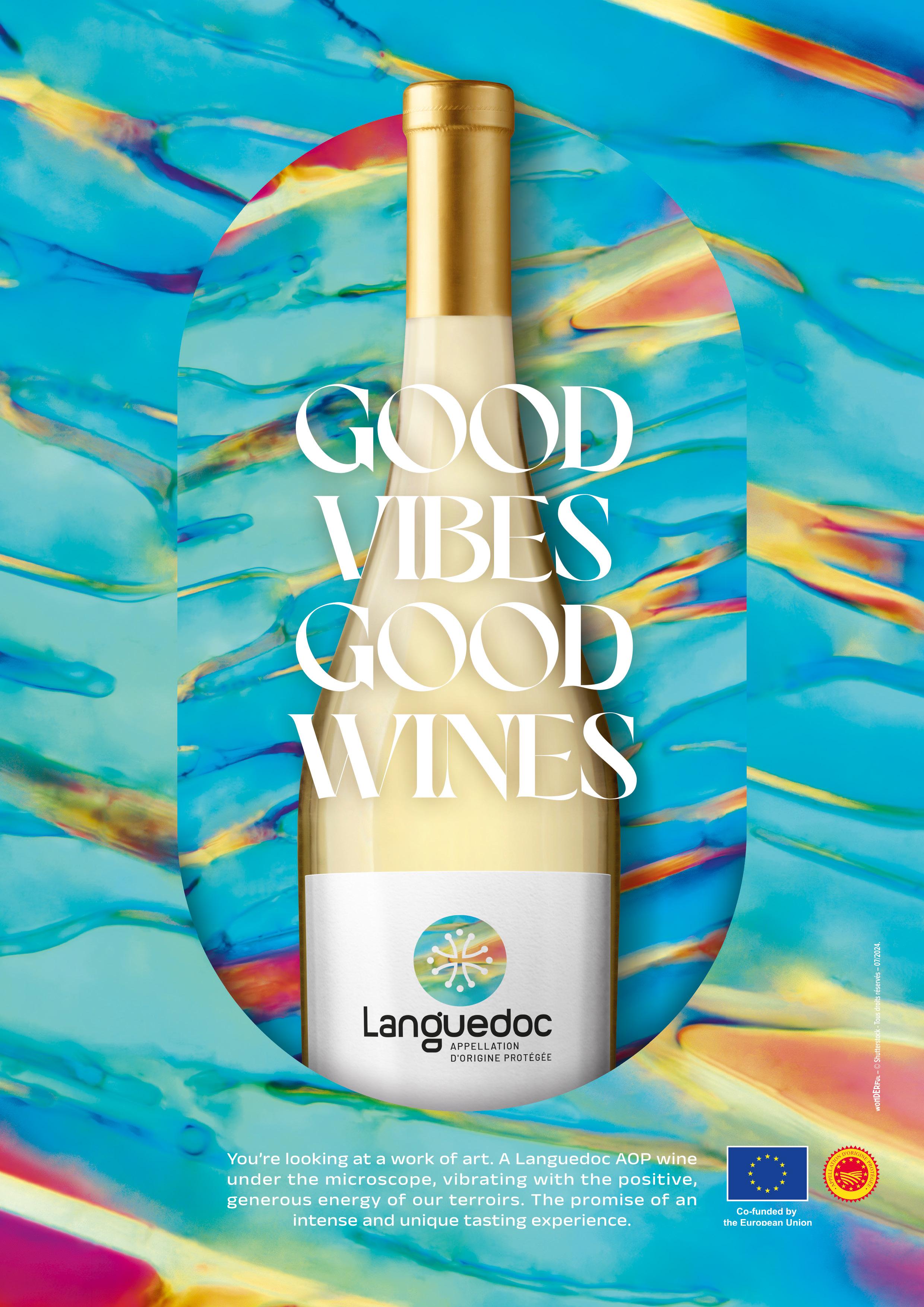
By WSTA chief executive Miles Beale


Reduced WSTA fees for indies
We hope you have all had a chance to visit the newly-created Indies Hub on the WSTA website. We want as many of you as possible to strengthen the industry voice by joining the WSTA. If you’re interested in WSTA Independent Merchant (individual) membership, we offer a couple of ways you can apply.
If you’d like to first discuss membership and how your organisation can benefit, please feel free to call the team on 020 7089 3877, or email indies@wsta.co.uk.
WSTA Independent Merchant (individual) membership is open to all independent merchants with a turnover of under £2.5m. It is most beneficial to those with one or two premises and/or those with direct-to-consumer online sales.
On October 30 the new Chancellor, Rachel Reeves, will deliver her first Budget. The WSTA has called for a freeze in alcohol duty for a minimum of two years, the wine easement to be made permanent and a commitment to ending duty stamps in our Budget submission to the Treasury.
An active community of industry businesses is essential in raising the significance of our sector with government more widely. We are advising wine and spirit businesses to write to their MPs to raise their profile in their constituencies. Contact samuel@wsta.co if you’d like general guidance on how to engage MPs. Keep an eye out and share press coverage on the WSTA social media channels.
Extended Producer Responsibility (EPR) will see the full cost of collection and recycling of packaging waste shift from local authorities to producers. Some of the legislation has already come into force, while other aspects are still to be agreed. We accept the policy in principle; but if industry is to meet the costs of collection, sorting and recycling it is critical that EPR is efficient, fair and transparent. Fees originally due in summer 2023 are now not expected to be finalised until summer 2025, yet obligated businesses have to pay them from April 2025. Companies will not have time to plan with any degree of accuracy the additional costs or set realistic prices, or revise pricing or contracts with retailers. We believe the Government should delay the introduction of EPR fees until April 2026. Find out more at wsta.co.uk
Faced with a huge rent increase at its premises in Beccles, The Suffolk Cellar has relocated to Blythburgh.
Having found a bigger site, an immediate opening was scuppered by a lack of internet, but now the manager, Alexander Nelson-Roberts, confirms the shop is up and running.
“It’s been a nightmare setting up,” he says. “It’s taken three months, so we’ve missed the whole of the summer, which has been very frustrating because summer trade here can be fantastic.”
Openreach said it couldn’t connect the premises – a barn – because it didn’t have a name and wasn’t registered with the council.
“We had to go to the owners and ask them to name the property, which then had to be registered with the Post Office so it could be given a proper address and a postcode,” explains Nelson-Roberts.
“This is a much better location because we are close to the A12 in a fabulous farm building with loads of character – it’s beautiful. And we’ve got lovely parking outside.”
The Cheese & Wine Shop in Darlington was due to cease trading at the end of September but will now continue under new ownership.
The business was established in 1999 and taken over by Katy and Claire Barnes in 2019. The Barneses had planned to close in September, naming family illness as a significant reason for their departure. They also reported: “August has been our worst trade in five years, and we’re down 10% year on year for this month, despite enjoying relative growth up to this point.”

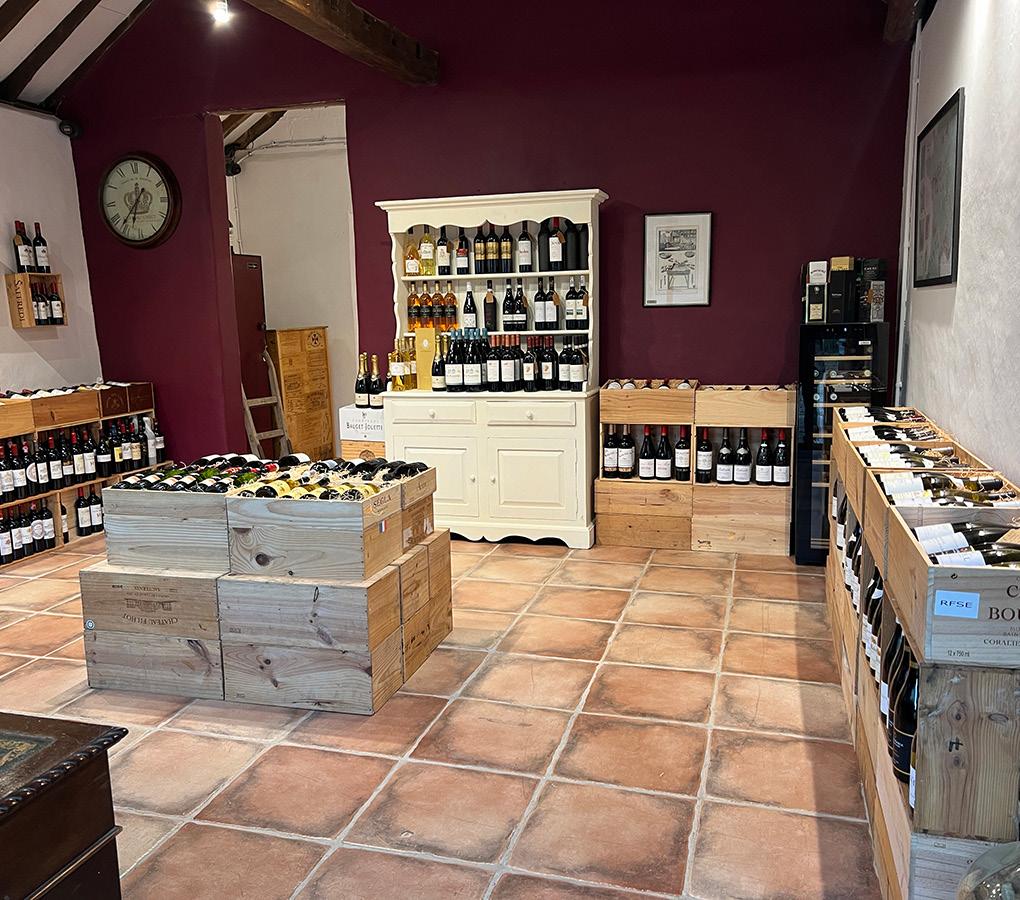
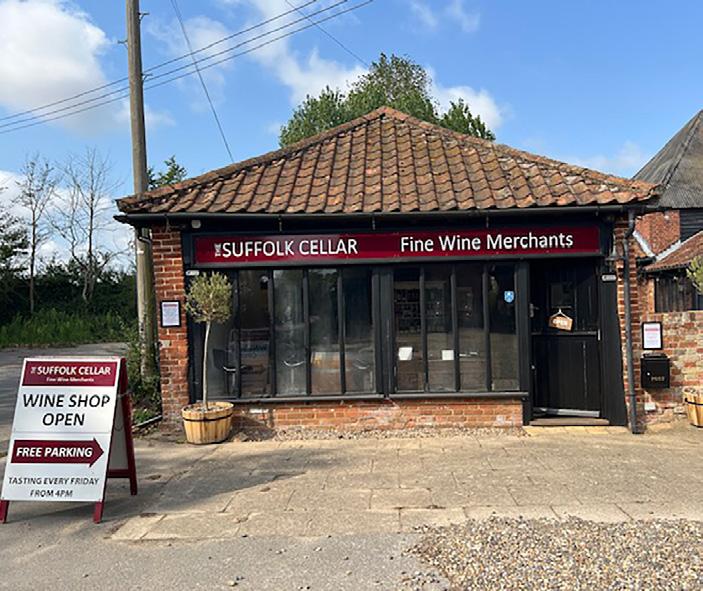
They said that new owners with “energy and resources” could make the shop “flourish”. This obviously struck a chord with a local couple who have swooped in at the final hour to buy the business. They plan to close during October to carry out a refurbishment and reopen on November 8.
• McNicoll & Cairnie in Broughty Ferry, Dundee, has closed. Owner Euan McNicoll established the shop in 2017 in the former Aitken Wines branch which he had been managing. He has reported that a lack of footfall and a massive increase in business rates has led him to close the shop and operate online only.
• Dunell’s Wines in Jersey will close its store in Gorey at the end of this month. After nine years trading in the village on the island’s east coast, the lease has come to an end. The shops in St Helier and Beaumont remain and managing director Neil Pinel confirms he won’t be looking for another premises.
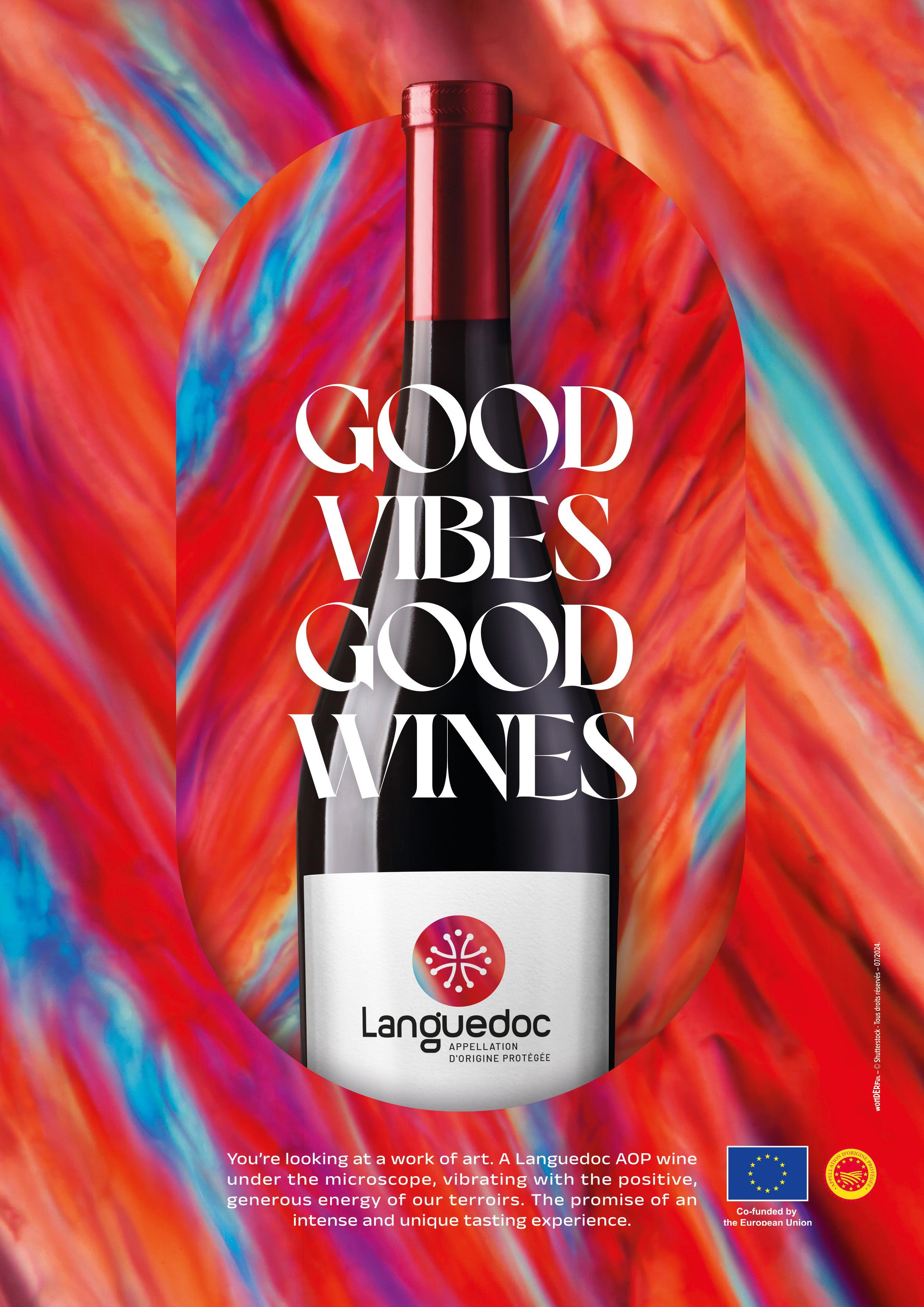

Hospitality company Henfox is investing heavily in Ashbourne, Derbyshire. In the past 15 months it has acquired six sites in and around the town, the latest of which has launched as deli and fine wine shop Howell & Marsden.
Operations manager Rhys Powell explains: “Over the past 10-20 years lots of businesses in the area have come and gone and there’s not the buzz there used to be.
“At Henfox we are reinvesting with the intention of bringing the area back to life; to save pubs, restaurants and hospitality businesses. Rather than them becoming houses, flats or even offices, we want to keep that hospitality vibe, because that’s what’s going to bring people back to the area.
“Four of the sites are in the small market town of Ashbourne and [in addition to Howell & Marsden] they include a café, a pub and a fine dining restaurant [The Machine]. We also have two highvolume pubs about 10 minutes outside of Ashbourne.”
All the sites Henfox has invested in are listed and, where possible, the company has drawn on any pertinent historical details to brand the new businesses. The deli and wine shop inherited its name from John Howell and Thomas Marsden, whose
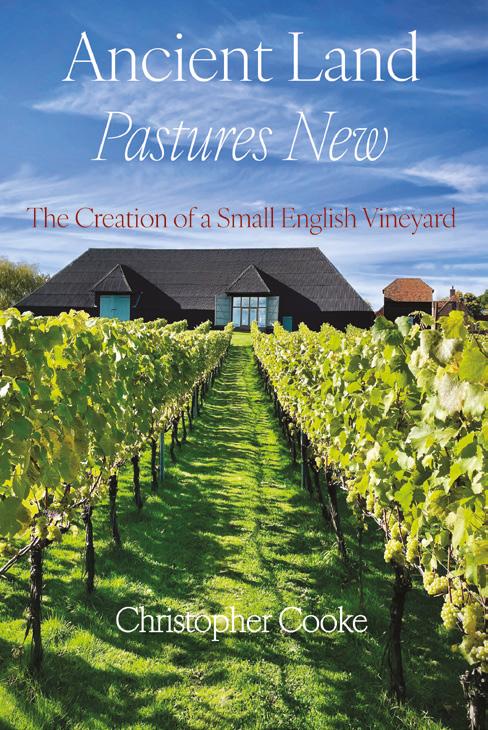

wine merchant and grocery business traded nearby in the 1800s.
“If we’ve not inherited a name, we look back at previous names of hospitality businesses that have been going for hundreds of years before, so it’s a nod to the history of the area and the community,” says Powell.
As the business continues to grow Powell is confident that Henfox’s fine wine element will spread beyond Howell & Marsden and The Machine to include the pubs. Currently a local wholesaler is going beyond its usual portfolio to supply the business with the wines Powell is handpicking, but in time he is likely to extend
Published by West Berks Press
hello@windingwoodvineyard.co.uk
Tel: 07798 885050
Winding Wood Vineyard Hungerford, West Berks
Copies available singly or trade terms for shop sales
Our wines: WineGB Awards 2024, Trophy for Best Sparkling Rosé Independent English Wine Awards 2024, Trophy for Top Sparkling Wine
his supplier base.
“At Howell & Marsden, the wine side is going down extremely well,” he says. “People tend to be buying a few [food] products, and then the team are pairing up a wine to go with that. The wine range will evolve every two weeks or so – we’re always bringing in something new.
“We like to see things grow and you never know, our next site could just be a wine bar. There’s definitely the appetite for it.”
Henfox is pausing further expansion while it “stabilises”, but estimates that its footprint will expand by two or three sites a year.
‘A joyful exploration, a cautionary tale, an instructional manual, and a heartfelt diary.’
Alex Taylor, Founder, Independent English Wine Awards
‘This book is at its best when you read it as a diary – chatty, informative, sometimes quite private, sometimes positively philosophical. And always honest.’ Oz Clarke OBE
‘Christopher writes with humour, insight and a keen sense of the dramatic about the difficulties of growing exceptional grapes in his small vineyard in Berkshire.’
Henry Jefferys, Wines in a Cold Climate
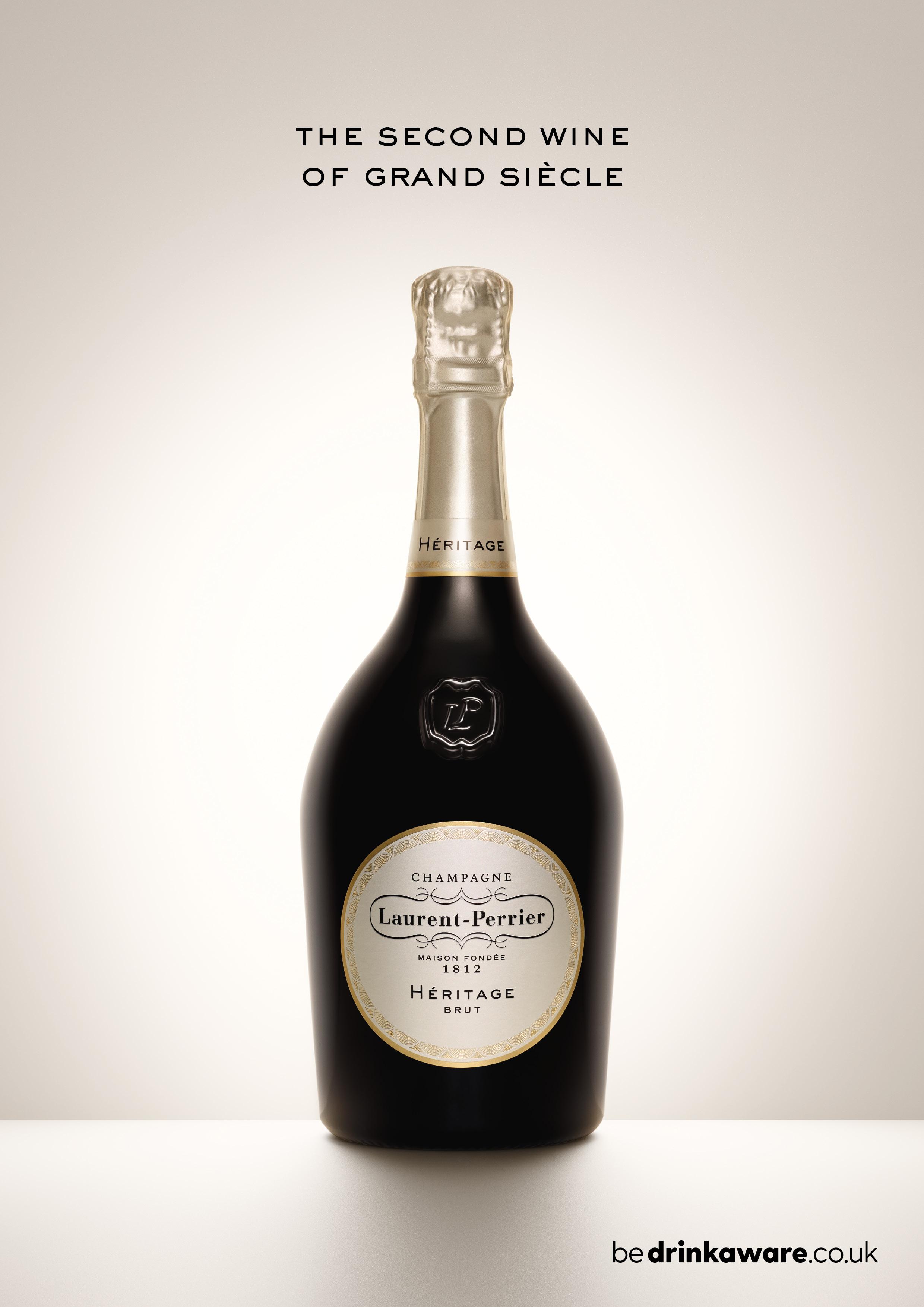


concord records

October brings some great album releases but also National Album Day on October 19. This has been running since 2018, with the idea of looking back on what your favourite album means to you and appreciation of the time spent constructing the perfect running order. This year the theme is great British Groups and there will be limited-edition coloured vinyl available in stores, plus non-related British reissues from Elvis Costello, Queen, Talk Talk and Talking Heads plus new music from The Darkness and Tears for Fears, which brings me to ... Songs for a Nervous Planet, a mostly live album recorded on 2022’s Tipping Point tour, featuring 18 classic TFF songs like Mad World, Pale Shelter and Shout, plus four new studio songs. I’m not generally a fan of live albums: I could count on one hand the number of what I call great live albums, but this could be up there. It’s the first live album in over 40 years of the band’s existence. Curt Smith says: “A lot of people don’t know that we are a good live band. They think it’s going to be two people with a couple of keyboards and a bunch of backing tapes, and that’ll be it.” That’s what I would have expected too; however, quite a few customers have seen the live shows and been blown away. Tears For Fears Live is released in cinemas the same weekend as the album, on CD and indies-only double cocoa cream vinyl.
Steve Tattam is owner of Winyl, a wine and record shop in Manningtree, Essex
‘I’m
Sommelier Daniel Jonberger has partnered with restaurateur Craig Lappin-Smith to open Crush, a hybrid wine bar and shop in Durham.
Jonberger says: “After so many years in high-end hospitality, I’m like a child in a candy store. I know I can buy 12 bottles of something because I like it, but I’ll see how it goes with my customers. I will go wrong, it’s trial and error, but it is my own way of going forward and playing with flavours and different wines and growers.”
The range will change frequently, not just to allow Jonberger to indulge his palate, but because a lot of his stock is sourced from small parcels.
He is working with suppliers including Yorkshire Vintners, Wanderlust, Diogenes the Dog, Hallgarten & Novum, Tarquin de Burgh and Dreyfus Ashby.
“I have a keen interest in small parcels from South Africa,” he says. “I’ve been

working with Richard Kelley [at Dreyfus Ashby]. He finds these small parcels and emails me saying, ‘I found this – do you want it?’ and now I have the freedom to say yes, because it’s my own business.
“I’ll also be looking at Argentina, Brazil and Uruguay because I know they have some exceptional wines.”
Crush opened in late August and Jonberger says that his customers already have a favourite wine. “Juliette from Consolation Wines in Roussillon is 100% Roussanne, which is usually a bit more of a hard sell, but everybody loves it. People are asking for it and I’m almost sold out of it every week,” he says. “It’s fantastic.”
Sundays will be set aside for wine tastings and events, the first of which took place last month and Jonberger said he’s already booked in five for next year.
“I’ve been dreaming of doing this for the last 10 years,” he says, “and even if I’m working hard, I’m working for myself, so I’m very happy.”






The Pursuit of Poppiness (formerly known as Morrish & Banham) in Dorchester has closed.

retailing and wholesaling as Morrish & Banham in an online capacity.
“It’s good to go back to our roots,” says Banham. “My wife Caroline and I own this company 100% and we’re looking forward to engaging with our customers online, but at events, dinners and pop-ups too.

The Zombie cocktail seems fitting for October, but the original 1930s recipe is, perhaps appropriately, a complicated beast, containing three types of rum, three juices (grapefruit, pineapple and lime), falernum, absinthe, grenadine and salt. Stick with the original by all means – both Monin and Marie Brizard produce falernum, a syrup based on ginger, lime and almonds – but this simplified version delivers the essence of the Zombie experience for a fraction of the price and faff.

2.5cl dark or spiced rum
2.5cl white rum
15cl pineapple juice
5cl lime juice
Teaspoon of grenadine

Shake the rums vigorously in a shaker filled with ice. Strain into a tall slim glass also containing ice. Pour in the grenadine to give it a suitably bloody colour. Garnish with a wedge of orange.

The business was initially set up by Mark Banham in 2015 and operated as a traditional retailer, until last year when Banham joined forces with The Electric Pub Company, a move which entailed a complete rebrand.
It relaunched as a bar called The Pursuit of Poppiness, an event which coincided with the company’s acquisition of Bride Valley Vineyard, which was established by the late Steven Spurrier.
Banham and The Electric Pub Company have now parted ways and he is again
“We hope at some point we’ll return to bricks and mortar, but if we do, I think we’ll do it in a much different way.”
• This month will see the opening of Carmen Street Wine just off Cheltenham Road in Bristol. It has been developed by the team behind the restaurant Caper & Cure, and promises seating for up to 24 “for lunches, wines, oysters, Guinness and bottles to purchase and take away”.
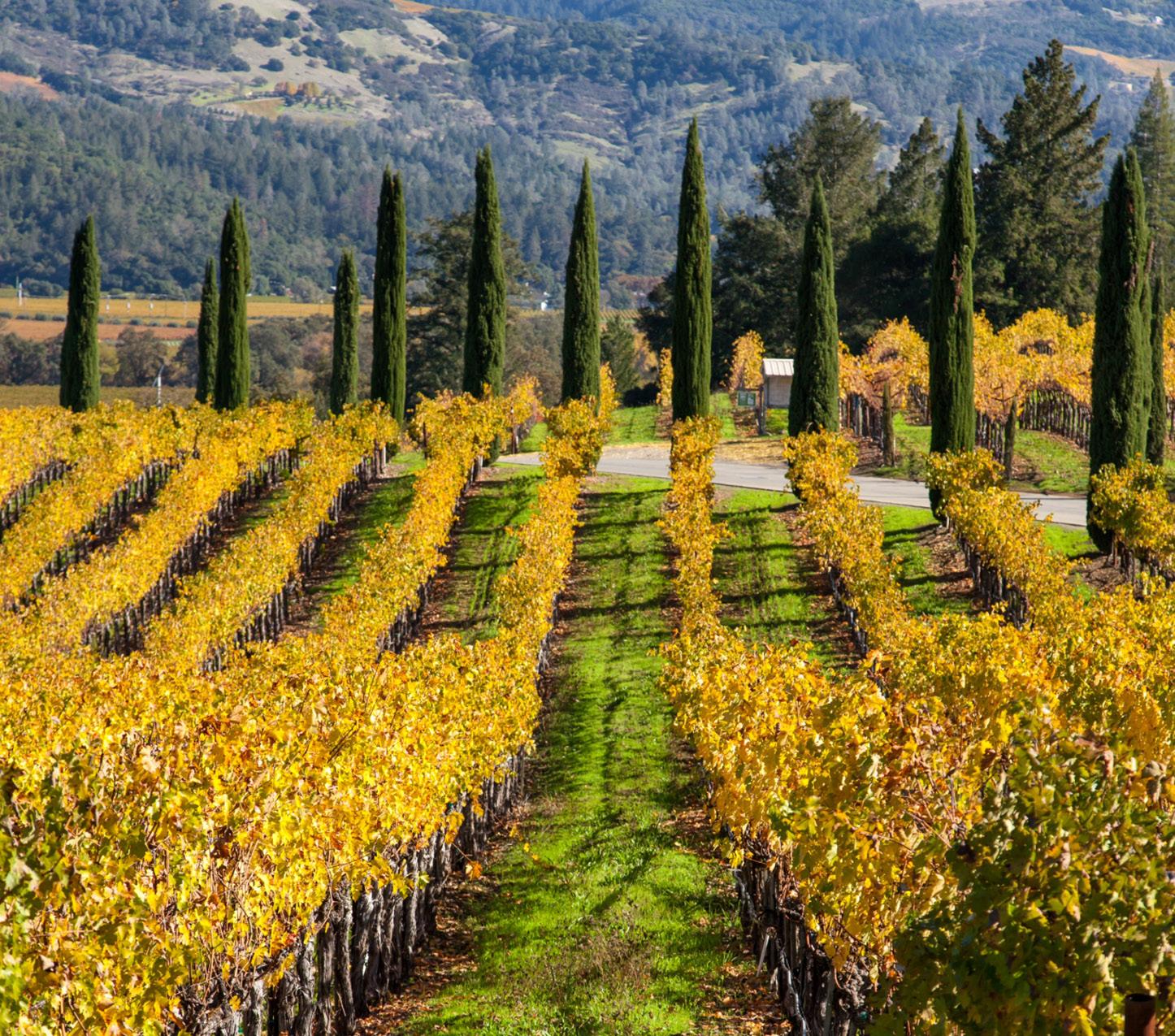
In collaboration with the Californian Wine Institute, The Wine Merchant is preparing for the 2025 edition of its annual California Collection.
A hand-picked range of 50 wines selected by a panel of independent judges will be featured in a supplement published with the March edition of the magazine. The judging, led by David Williams, will take place in January in London. Entries must be in by December 20. For more information contact claire@winemerchantmag.com.
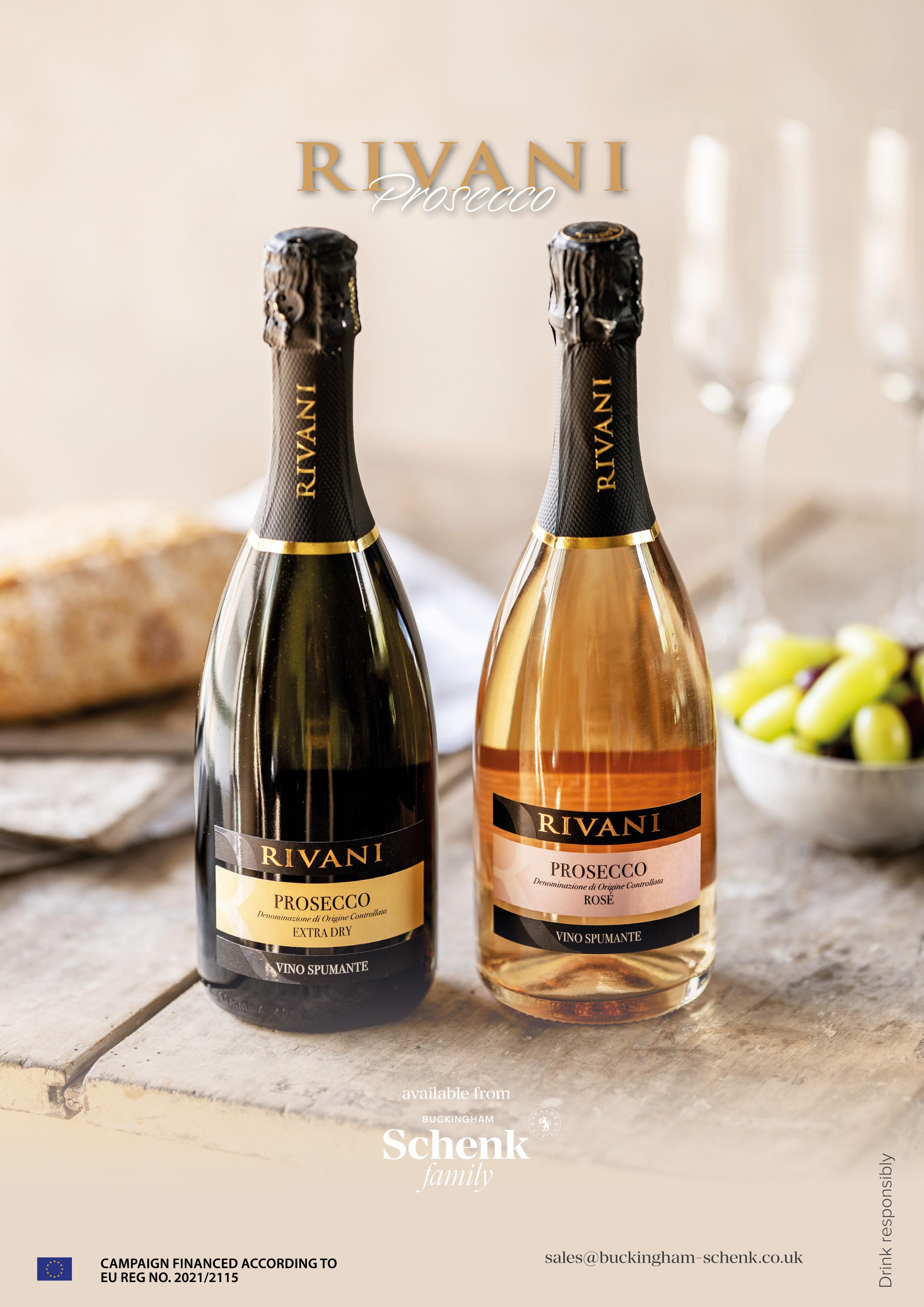

I don’t understand why indies close at random times. Maybe it’s me that’s odd
We have a fair amount of newish businesses in town. Many of these new enterprises, although essentially retail, are “eventdriven”. Now that strikes me as hard work. The lovely little shop next to me is about the same size as mine but it also has a store room and a cellar, which I envy. The downside is that this non-retail space comes at a price. The rent is double mine.
It is a cookery book shop and the business plan is based around ticketed events. There’s a big table in the middle of the shop (not the unused cellar) and the idea is that a cook can do a demo of her recipes. The snag is that there are only
eight places at around £10 a time. I would struggle if my business was based around taking a cut of 80 quid every now and again.
It is a beautiful looking shop, though. She’s often closed with no notice and has a least three staff covering her days off. Sometimes she closes during the day because she’s got an event in the evening and has to clear the table of stock.
Maybe she has a second income herself because if a shop can’t cover its costs, it is not a business, it is an expensive hobby. They never appear that busy and there are only so many cookery books you can eat.
The florist across the road retired recently because she was only taking five

weeks a year off. Almost immediately the unit was re-let to a new business –a pottery painting café. It’s the young owner’s second shop so there must be profit in it. They don’t appear to have set opening times; they open when they have customers.
Opposite me is a large unit which is now filled by a retro gaming shop. They appear to be doing really well, although their customers all look like they could do with a bit of exercise and fresh air. They have recently developed a space at the back where kids can play on their consoles for a fiver, or you can rent the whole room for kids’ parties. They are often closed unexpectedly and sometimes for days at a time.
Maybe this event-driven formula is the way of the future. To me, as an oldfashioned retailer, it does look like it’s a lot of effort, though. Retail isn’t that hard, is it? You put stuff people want on the shelf, tell them when you will be open, open when you have told them you will, and hope they come in and buy it. Job done!
There is a garden shop in a little precinct area in town. It’s still there and doing well under new ownership. The original owner was a pain. His business was failing. He blamed it on everything he could imagine, from parking costs to the Christmas lights.
One Christmas I decided to have a look for some gardening-related presents. There was a big A-board on the High Street pointing to his shop and saying it was open. I was surprised to find it closed. I asked him why, and he explained that he couldn’t do the other stuff he wanted to do and open the shop. I ventured that maybe that was why he was failing. Apparently not. I never bothered going back.
The shop the other side of me was unexpectedly closed the other Saturday with no notice and no explanation on the door. When I asked if she was OK, she told me she’d gone camping.
I am paranoid about closing. In the past 16 years I can count on the fingers of one hand (I was born in Norwich) the number of times we have closed when we would usually have been open. It is normally an event that both Alice and I have no option but to attend, like when I got married a
couple of years ago. My suggestion to the now Mrs P that maybe I could just open until midday didn’t go down well. More recently my younger daughter got married in Yorkshire, so we had to close on Friday and Saturday. On both occasions the closure was advertised at least two weeks in advance on the shop front and across social media. I think everyone understood.
When we were quite new I got a call to say my partner of the time was dying. It wasn’t unexpected, but the timing was. Looking back, I’m ashamed to say that I made sure my daughter Alice could cover the shop before rushing home to the deathbed. I took some time off and we did close for the day of her funeral … but that was on a Monday. We closed for my mother’s funeral, too. I think everyone understood. OK, other than weddings and funerals, we have been known to close for the odd jolly but that is never on the weekend. I figure that if someone needs something and you are unexpectedly closed, they will go somewhere else. If their experience isn’t dreadful you may not have just lost a sale, you may have lost a customer.
I once heard a story about convenience stores in a London suburb. There were lots of them and they all closed late but at different times. One then decided to open 24/7. Their trade trebled. All of it was during their normal hours but people knew that they would be open so didn’t risk driving somewhere else that might be closed.
I really don’t understand how independent shops can justify closing at random. Then I thought that maybe it’s me that is odd. Maybe they have more interesting lives. Maybe they don’t have a vineyard and vegetable plot behind their shops. Maybe they don’t see their shop as a sanctuary, having inherited 11 stepgrandchildren.
I still think it is better to open when you say you will. It’s not rocket surgery, is it?
David Perry is the owner of Shaftesbury Wines in Dorset

I enjoyed reading David Perry’s Irregular Thoughts (The Wine Merchant, August). He communicates the everyday challenges of a small business owner so well.
He exemplifies the sorts of choices that hundreds of thousands of small businesses need to make every week. A small business can’t do everything and be everything to everyone.
David’s main concern, the thing he identifies as the root problem when selling online, is fully justified: not having real-time inventory.
He’s right when he calls out ring-fencing stock to sell online and counting it down manually as not being the best workaround for the root problem. Counting anything down manually, least of all stock-on-hand positions, is a terrible idea that sooner or later will prove costly in all sorts of ways.
Segregating stock is potentially the thin edge of a wedge that, against one’s better judgement, leads one into a different business serving a different addressable market with higher operational overheads that eat into precious margin.
Where David isn’t correct is the implication that having realtime inventory is out of reach. It isn’t.
When we built Wine Hub we were very clear-eyed about the problems the wine trade needed us to solve. The swathe of sector-specific considerations aside, one of the problems we set out to address was the fear and reality of overselling whilst managing paths to growth.

For a bricks-and-mortar business that means in-store, over the phone/by email and online; what software providers sometimes refer to as omnichannel. For omni-channel to work, you need to master all dynamic stock-related information (including product definitions and rich content) in one place.
We refer to that as data mastering. It means one system takes control of all your sales channels, feeds stock and product information, determines channel pricing (should you wish to price differentially), tax options and computations according to different delivery options, and availability (without salami-slicing stock) – and immediately depletes your mastered position as bottles or cases sell through one channel, and updates the stock positions through all other channels.
The ecommerce feed can be quite simple or handle a variety of more complex scenarios. If you’re a bottle shop where everything is sold duty-paid including VAT, that’s nice and simple (however the stock is held).
If you’re offering wines as in-bond or duty-paid, want to show certain wines as on allocation only to pull in fresh demand, sell through Vivino or want to meet demand of overseas buyers, that’s all good too. It’s about knowing your market, determining what you want your serviceable addressable market to be and shaping your proposition accordingly.
Once that’s decided and you’re clear about what you’re going to do and what you’re not going to do, the rest is practical detail, an example being how you price and fulfil online orders – such as next-day delivery out of LCB Sawston and your shop.
Nick Martin, CEO, Wine Owners
A recent addition to the Thorman Hunt portfolio, Ramón de Ayala also makes a majestic Gran Reserva, but this ethereal Crianza, with its soft, understated cloves and vanilla, deserved its share of the limelight at the autumn London tasting. It’s pure Tempranillo, from Rioja Alta and Alavesa, with freshness and verve.
RRP: £15.99 ABV: 14%
Thorman Hunt (0207 735 6511) thormanhunt.co.uk
The 3ha terraced vineyard in the lieu-dit of Combard had been adandoned since World War I before the Barge family rescued it in 2000. Replanted in 2007, it now yields this impressive, unfiltered Syrah/ Viognier blend, which is somehow both rustic and suave, with violet aromas and deep, dark fruits.
RRP: £96.99 ABV: 13.5%
Liberty Wines (020 7720 6158) libertywines.co.uk
Chenin is such a shapeshifting variety that every fresh bottle holds the promise of something unexpected. So it proves with this Clare Valley example, which has a rich, musky and faintly exotic edge. It’s a result of whole-bunch pressing, fermentation in oak, on the lees, and full malolactic. White wine should never be over-chilled: in this case, it would be a crime.
RRP: £33.45 ABV: 12.5%
Graft Wine Co (020 3490 1210) graftwine.co.uk
Boutinot’s Cairanne reds have a big fanbase but this white blend – 70% Grenache Blanc, 20% Roussanne and 10% Clairette – is just as impressive. Fermented and briefly aged in oak, it’s satisfyingly rich and rounded, with stone fruit and floral notes, but with a fresh mineral seam that gradually reveals itself.
RRP: £15-£16 ABV: 13.5% Boutinot (0161 908 1300) boutinot.com




From Larry Cherubino comes another Western Australian wine that punches way above its price point. Mindful oak wraps vanilla around lusciously ripe stone fruits while a cool, racing acidity adds wonderful freshness to the creamy, mouth-coating texture. Dangerously moreish.
RRP: £16.65 ABV: 13% Hatch Mansfield (01344 871800) hatchmansfield.com
In Gallura, north eastern Sardinia, where the searing heat is tempered by sea breezes, Vermentino arguably finds its most complete expression. In this example we find a characterful balance of wild flora, orange rind and pithy pink grapefruit with a mouth-watering, salty minerality.
RRP: £14.97 ABV: 14% Hallgarten & Novum Wines (01582 722 538) hnwines.co.uk
It’s hard not to like Pecorino. Generally more interesting than Pinot Grigio and less in-your-face than Sauvignon, it’s a crowd-pleasing variety, in this case giving pretty notes of flowers, peaches and apples. A summery wine that should be a hit with the seasonal affective disorder crowd.
RRP: £15 ABV: 13.5% Buckingham Schenk (01753 521336) buckingham-schenk.co.uk
In Puglia, Nero Troia is often the overlooked sibling of Primitivo and Negroamaro but it’s perhaps the most interesting of the three. Leather, spices and liquorice lace menacingly around sticky black cherries; vibrant, sun-drenched fruit expands on the palate as polished tannins and a lick of acidity keep everything in order.
RRP: £31.25 ABV: 14%
Astrum Wine Cellars (020 3328 4620) astrumwinecellars.com






Thom Fowler’s career has involved stints at Majestic and Waitrose, but his experiences in the independent trade are the ones that have brought him the most joy.
“It became very obvious that working within the independent sector was definitely for me,” says Thom. “It’s much more suited to the way I work, and I’ve made my decision to stick with it.”
Simon Hill and Liz Coombes, owners of The Artisan Wine & Spirits Company, employed Thom as their shop manager 12 months ago, a decision that Simon says has allowed the business to grow.
“It was a step for us in terms of an increased staff cost,” says Simon. “But it’s given me and Liz a great opportunity to work on the business. It’s so easy to get bogged down working in the business, but if we can take time to step away and have more of an overview, we can manage things and plan much more effectively.
“Aside from that, the other great thing about Thom is that he has masses of enthusiasm as well as knowledge. He researches every new wine that comes in – he’s like a sponge.
“The customers love him as well so I’m quite happy to sit back and let Thom go and charm them all. He’s great at hosting events and he came up with the idea for our Cocktail Academy. That’s been brilliant for us because although the spirits take up only 10% of our shelf space, they account for 30% of the revenue.”
“I love events,” Thom says. “Unfortunately, I like the sound of my own voice a bit too much, so if I can gather a group of people to listen to me waffle on about wine, then that’s my happy place.
“Seriously, I am lucky to be working with the best people, because Simon and Liz both share the same view as I do, which is making sure that every customer coming into the shop leaves with the right bottle for them.
“One of the things that has stuck with me most through my time in the wine industry is how important it is to make sure that wine is accessible to everybody. Customers shouldn’t leave the shop thinking ‘I spent too much,’ or ‘I don’t think I got quite the right value.’”
When it comes to tasting events, Thom says it’s

important to understand his audience.
“Do they want a fun, interactive informal tasting, or do they want a serious, informative lesson to learn about things? It’s all part of the enjoyment of being in front of people and sharing that knowledge. With the cocktails you’ve definitely got to command the attention of your guests – because with three full-measured cocktails people really start to enjoy themselves.
“From the get-go, my goal was to have an umbrella knowledge of as many things as you can imbibe as possible and then sort of specialise in one subject. But I think through the years, I’ve just managed to obtain enough knowledge to store away in the back of my brain until I need it again. So maybe you could say that I’m a jack of all trades and a master of none, but I’m passionate about it and I’m very lucky that I get to work in this trade.”
Thom wins a bottle of Hambledon Première Cuvée NV, courtesy of Mentzendorff
If you’d like to nominate a Rising Star, email claire@winemerchantmag.com




Many indies gave the autumn trade tastings a swerve – and we should all understand why
When poor weather affects a region’s growing season, the official vintage report invariably declares that “volumes are down, but quality is high”. Organisers of the early autumn trade tastings have doubtless been clutching for a similar form of words.
There’s no disguising the fact that attendance at London’s September trade events was lower than we’ve come to expect, even allowing for Covid complications. It would be surprising if anyone makes the claim that they welcomed more independents than they did at last year’s tastings. From what I saw with my own eyes, and what I’ve heard from tastings I didn’t manage to get to, numbers were noticeably down. Familiar faces were conspicuous by their absence.
This doesn’t necessarily reflect badly on the suppliers who put on these events. In fact, it seemed to me that most organisers had worked harder than ever to make their tastings as navigable, comfortable and efficient as they could. (Admittedly, this would only be evident to those who actually came along.)
So why the apparent apathy? There are several possibilities to consider. Here are the ones that seem most plausible, at least to me.
Let’s start with staffing, which is a perennial issue for many indies. Finding someone you trust to run your shop in your absence is a real challenge. Finding the money to pay them the going rate is often a bigger one. A merchant I spoke to
at a recent London masterclass had shut his shop for the day in order to attend. It shows admirable commitment to the cause, but it’s not something he could afford to do very often.
Then there’s the fact that most indies these days are working harder, and longer, to keep the tills ringing. For hundreds of them, that means organising more midweek wine events of their own, either in-store or off site. It all absorbs time and energy on the exact days that trade tastings are most likely to be taking place.
The state of the market doesn’t help, either. Growth is in very short supply this year for indies; many are flatlining in terms of revenue, or achieving very modest increases, as their costs continue to soar. Against that kind of backdrop, owners tend to stay put and roll up their sleeves rather than venture too far from a

teetering business. Heading off for a trade tasting can feel like a luxury – perhaps even a dereliction of duty.
As the marketing chief of one of the bigger importers admitted to me recently, a tough trading climate doesn’t encourage independent merchants to broaden their horizons. People who might usually be open to new suppliers, new wines and bigger orders tend to batten down the hatches. They stick to tried and tested lines they are confident of selling and are nervous about sitting on too much stock. Cash flow becomes all-important. Hunting expeditions at trade tastings, not so much.
Generalising about the independent wine trade is always a risky occupation, and there will be some retailers for whom much, or all, of the above does not apply. But at The Wine Merchant we speak to dozens of indies each week as part of our efforts to encourage attendance at our own events, and these are the themes that recur (along with complaints about expensive and unreliable trains, and general time poverty).
On a more positive note, suppliers have undoubtedly become much better at bringing their offer straight to the independent trade. We hear frequent reports from indies about reps who can be relied upon to arrive, by appointment, with a thoughtfully selected range of wines that can be tasted in a considered way and stand a fighting chance of being listed.
It’s true that trade tastings can often be terrible places to taste wine. Too much noise, too much heat, too many bodies, too little information. But with one exception, which it would be unfair to name, that was not my experience this September. Ironically, my favourite events were the ones with the fewest attendees per square metre. Tasting is so much pleasanter without the need for sharp elbows.
But I hope more indies feel able to get along to next spring’s tastings. The pros outweigh the cons – and sociability, and serendipity, have always been central tenets of the wine merchant creed. However inconvenient it may sometimes seem, we all need to get out there.


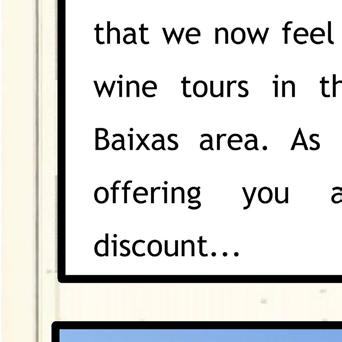
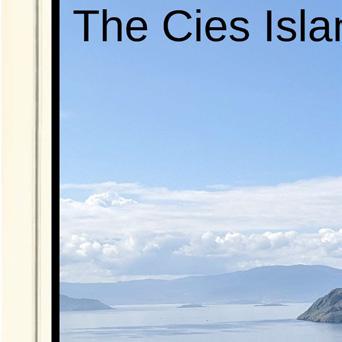




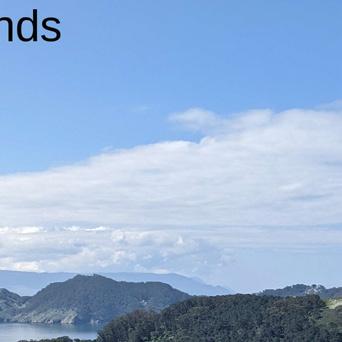

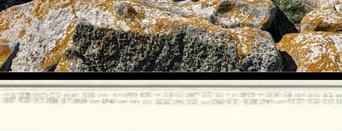

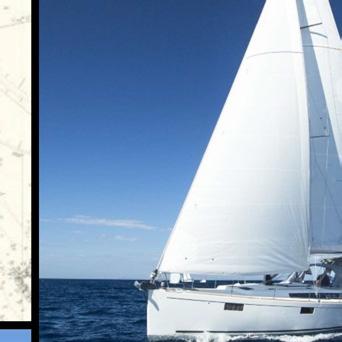


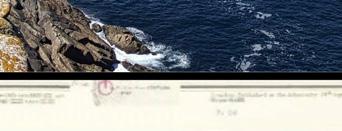
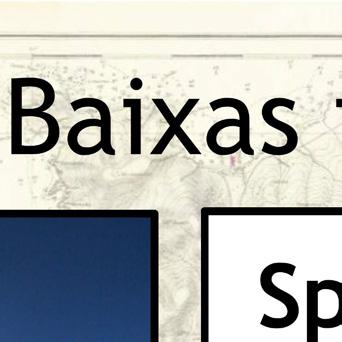


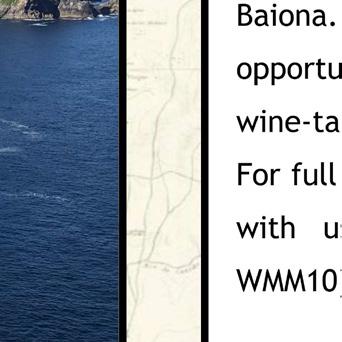

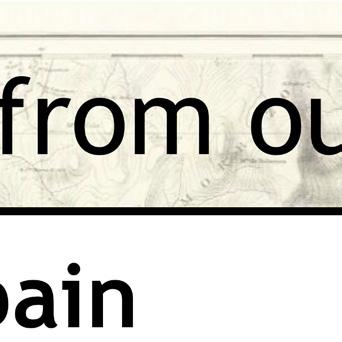
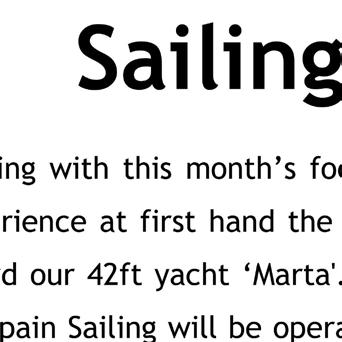

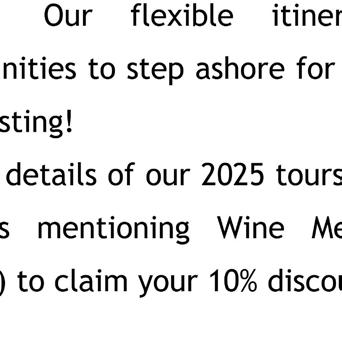



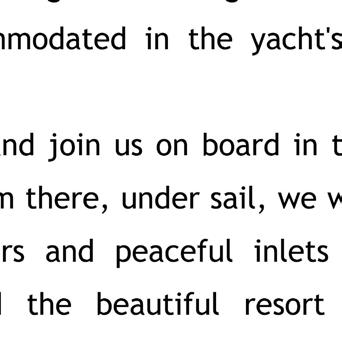





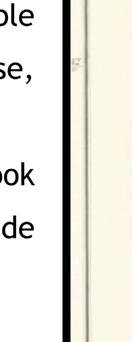

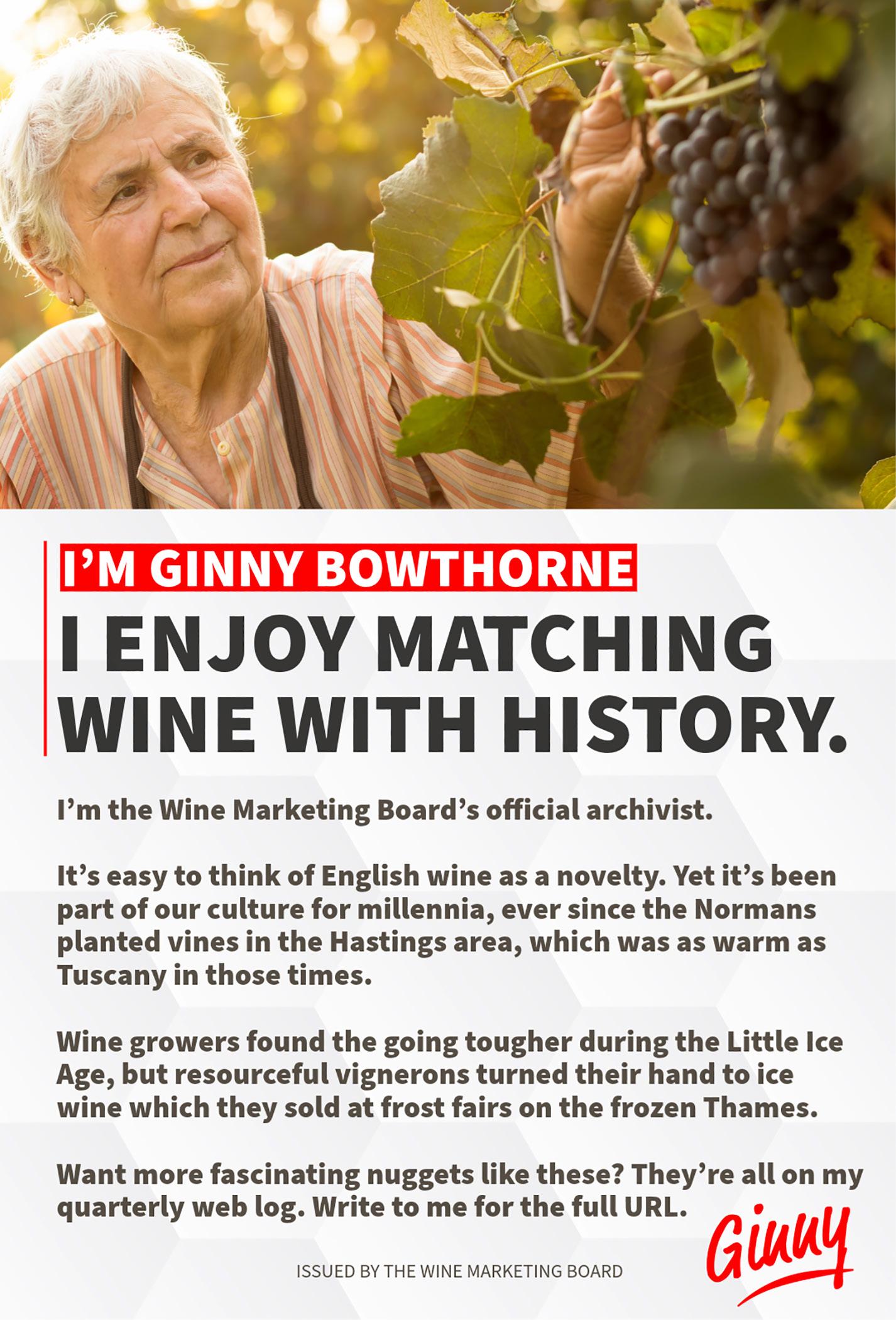

customers we could do without
Well we used to buy a lot of sparkling wine, wife can’t get enough of the stuff, but it’s so damn expensive so guess what I did? You remember Sodastreams? Yeah? So I dusted off the one we had in the cupboard under the stairs, bought a couple of new canister things off Amazon and then did a few experiments … got some £4.85 Chardonnay from Lidl, nuked it a few times in the old fizz machine: pretty bloody good! Same thing with their £7.49 Picpoul: even better! Admittedly the bubbles tend to disappear quite quickly so you have to drink it pretty sharpish, but that’s never going to be a problem for Angela! I mean it wouldn’t give the winemakers at Moé et Chandon any sleepless nights but I bet my DIY Champers would give most English sparklers a run for their money, and all of your Italians … tell you what, let’s organise a blind tasting in here one Wednesday night and let your customers decide … and when my wines come out on top, maybe you can start selling Sodastreams! Yes? Are we on? Also, have you ever tried adding Ribena to Rioja? I know, I thought the same, but listen to this …

1. From which European country might you find a wine with the word espumante on the label?
2. In which year were the first commercial vineyards planted in Marlborough? (a) 1953 (b) 1963 (c) 1973 (d) 1983
3. Palo Cortado occupies a place on the sherry spectrum between which two other styles?
4. Plumpton College, which offers a wide range of wine courses, is found in which English county?
5. Who is the resident female wine expert on the BBC’s Saturday Kitchen show?
Answers on page 72
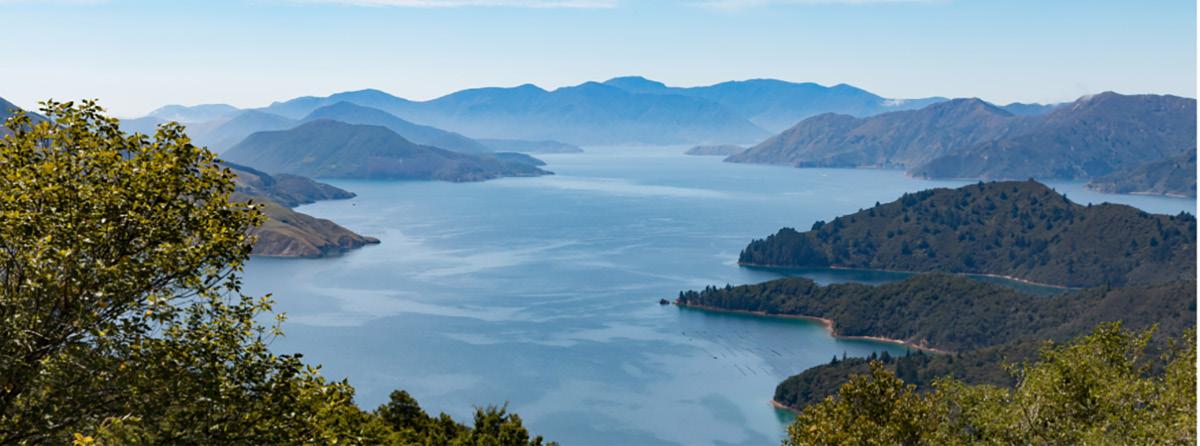

In a nutshell: A tasting with a difference: give your customers what they want by asking them what they want you to give them.
Tell us more.
“It’s an extension of the wine bar that we do on a Friday night. We do a special event once a month and the Friday Focus Group is a relatively new addition. It’s a chance for the regulars to try a few samples from a supplier and tell us whether we should buy them or not. They feel like they’re contributing and are a part of the selection process.”
Do they pay or is it a freebie?
“I charge £15 for five tasters. It’s proved to be really popular. The last two nights we did with Boutinot and Alpine Wines and the reps came along and talked through all the wines like a proper tasting, but in the informal setting that is the wine bar.”
How many people are involved?
“I can have anything from four to 50 in the shop. It tends to be regulars who are on the mailing list but it’s open to anybody. And we find with the Friday events that we are getting new people.”
How formal is the feedback process?
“I give them a tiny tasting sheet, with the name of the wine and not much else. It’s not a blind tasting, but the idea is that they’re new wines that I haven’t got in the


shop, so they won’t have tried them before. There are some boxes and they can write as much or as little as they wish. It could just be a tick or a cross – but guessing the RRP is the main thing.”
Has anything surprised you?
“When I ask them to say how much they’d pay they nearly always over-estimate what I’d work out the RRP to be, which is quite an interesting outcome … unless they hate it, in which case they really undersell it, but that very rarely happens.”
Do you charge more than you might have done as a result?
“Well, the beauty of it is, of course, is that they’re all new wines: I can set the price without any precedent, so it’s proved to be quite a good thing for me commercially.”
What impact has it had on listings and sales?
“I sold out of one of the Alpine Wines immediately: a Waldschütz Grüner Veltliner from Austria. As a result of the focus group, I’m going to buy the rosé and other wines in that range. I’m getting all of the Boutinot wines because all five had positive feedback. One was Linea Kármán, a Spanish rosé, a style that’s always been a tricky sell for us. We do social media posts of the wines with the hashtag #fridayfocusgroup.”
Sounds like it’s been a worthwhile exercise, then.
“Nine times out of 10 I pick the wines I think people are going to like and I’m going to buy anyway, but it’s always good to get feedback. I’m sure I’ll continue it.”
Gemma wins a WBC gift box containing some premium drinks and a box of chocolates.
Tell us about a bright idea that’s worked for you and you too could win a prize.
Email claire@winemerchantmag.com

Oliver Gauntlett
Eynsham Cellars Oxfordshire
Favourite wine on my list I always dread this question, but right now I’ll say Clos de Lôm Malvasia from Valencia. This is a wine that whenever I open it, it is enjoyed. That goes for people who are in the wine trade or not.
Favourite wine and food match
Egri Bikavér (Bull’s Blood of Eger, Hungary) and roast duck.
Favourite wine trip
This has to be the first trip I went on with Domaine Laroche to Chablis in 2010. The hospitality and the wine were, as expected, fabulous. But the main reason is that the experience made me feel welcome as part of the indie trade.
Favourite wine trade person
Jimmy Smith. He was my WSET tutor when I worked at Threshers back in 2008. His enthusiasm for wine education has gone on to help many more of our team since then.
Favourite wine shop
Nickolls & Perks in Stourbridge, West Midlands. It was one of the very first wine shops that I discovered, with its fabulous old cellar full of treats. I used to visit it when seeing family, although admittedly I haven’t been in that neck of the woods for a long time, unfortunately.
The Wine & Spirit Education Trust has seen a 15% increase in candidates for its Level 4 Diploma course globally.
A total of 134,000 candidates took a WSET qualification last year – the second highest number of annual candidates to date – with the Diploma course showing the biggest increase across its programmes.
The total figure includes 1,962 candidates from 19 countries who took a Diploma exam during the last academic year. Top markets for the Diploma were the UK, USA, Hong Kong, Japan and China. WSET, September 18

Laudun, located on the west bank of the Rhône river, has been promoted to cru status.
The move comes after decades of lobbying from local growers.
This upgrade is the first of its kind in nine years. Laudun has 591 hectares under vine and places a high importance on white wine, accounting for 30% of production.
The Drinks Business, September 20

Nearly 10 years after Taittinger and Hatch Mansfield joined forces to purchase the Chilham site, Domaine Evremond has opened its first bottle of sparkling wines.
The estate, officially opened this week by The Duchess of Edinburgh, totals 380 acres of which 150 are under vine. Chalky, limestone soils mark potential for highquality Pinot Noir and Chardonnay. BBC News, September 26
Torrential overnight floods battered the Tuscan wine region on September 23. Images shared by wine critic James Suckling showed the devastating damage of some unfortunate sites. However, growers overall feel they have “dodged a bullet” as the famed estates of Tenuta San Guido (Sassicaia), Ornellaia and Antinori are among the majority that have emerged unscathed.
The Drinks Business, September 26
Leading nutritionist and health scientist
Tim Spector, who set up the Zoe app and was a leading commentator during the Covid pandemic, has spoken about his passion for a couple of glasses of wine a day.
Spector, who is a professor of genetic epidemiology at King’s College London, said in an interview with The Times about the health benefits of drinking wine, how when drunk in moderation it can assist with reducing the risk of heart disease.
He drinks using a 80/20 rule, where for 80% of the time he sticks to dietary principles, and then for 20% of the time, he will indulge in whatever he chooses. In this context, Spector allows himself a couple of glasses of wine.
The Drinks Business, September 24
A small-scale farmer in northern Malawi, Emily Nkhana, used to discard over-ripe bananas or just let them rot, but she has now found a profitable use for them – banana wine.
She is part of a group of women who have come together at a cooperative to improve their economic conditions through farming.
Overripe bananas are peeled, cut into small pieces and mixed with sugar, yeast, raisins, water and covered with lemons.
The mixture is then left to ferment for several weeks, transforming the banana pulp into a potent, aromatic wine, containing 13% alcohol.
“It’s very good quality wine. You have to drink it while seated so you can enjoy the sweet flavour,” Ms Nkhana says.
BBC News, September 12



�Five years ago, I would definitely have said emperor’s new clothes, but since then the trend has expanded beyond the confines of the capital, and into the home counties. My much younger and brighter staff have dragged me kicking and screaming into a new camp, and it’s definitely a growth category these days, albeit from a low base.”
Stefan Botfield
The Wine Cellar, Bedfordshire
�I’m firmly in the emperor’s new clothes category to be honest, along with cloudy, funky and unintentionally fizzy wine. I personally really don’t like it as a style. It’s just not pleasant. I see bearded hipsters working in trendy bars persuading gullible customers that they should like this awful wine, otherwise they are in danger of not being cool and down with the latest ‘must be seen drinking’ thing. Chester is full of such places.”
Sam Jackson
Chester Beer & Wine, Chester




�Definitely a growth category. This is a valid style in its own right, supported by an incredible history. Sure, we have seen loads of gimmicky wines out there trying to tag along, some rather successfully even. From the more serious ones, I find those made from aromatic varieties lend themselves best to the style: Muscat, Gewürztraminer, Torrontes … gastronomically, skin contact wines can do things no other wines can do.”
Nic Rezzouk H Champagne winner H Reserve Wines, Greater Manchester
�Orange wine initially sparked interest in the UK as a seemingly new category, but it actually has a history dating back thousands of years. The key to its long-term success is educating the public about its variety and unique, rich background, as well as winemakers producing high-quality examples. If we can achieve that, orange wine could grow to stand alongside white and red wines as a lasting category on our shelves.”
Gosia Wegier Dulwich Vintners, south London


The tourists can take or leave my wines. They’re really only interested in one thing
Agroup of 70 islands, 20 of them inhabited. A scattered population of 22,000. Ninety minutes by sea then two hours by road to the nearest city. (And that’s only Inverness.) A climate that’s cool and windy in the four-month summer and dark and windy in the eightmonth winter.
I love it. But how to make a living? Our resident population can hardly support a quality-minded independent wine merchant, especially as the county consistently ranks as having one of the lowest median wages in the country. The answer is diversification. Partly into
selling wine wholesale to the islands’ small restaurant sector, and partly into selling other products in our shop: spirits, cheese, deli goods and home-brew gear. If I didn’t have to complicate my business to survive, I would probably (like David Perry) keep it simple and concentrate on my passion: wine.
The necessary accommodation with reality hits me most painfully in the summer. Orkney’s been a destination for summer visitors since the mid-19th century, when trains to Thurso and steam ships from Leith started bringing people here for pleasure rather than trade or

plunder. In the past two decades the trickle of tourists has grown into a flood. Every hotel and self-catering is full all summer, and well into the shoulder months.
Kirkwall is the busiest cruise port in the UK, with around 200 liners between April and September. Minibuses emblazoned Tartan Travels or Nessie Treks arrive from Glasgow and Edinburgh. Specialist groups come to focus on archaeology, knitwear, birdwatching, folk music and goose shooting.
A good proportion of these visitors come into my shop. And none of them is looking for wine.
“Welcome to Orkney,” I greet them. “And welcome to Kirkness & Gorie. Where’s home for you?”
“France,” they reply. “A small town. Nobody knows it. Arbois.”
“I know it!” I cry, leading them excitedly them over to admire my Vin Jaune and Vin de Paille selection (all right, one of each.)
“These reds from Ploussard and Trousseau are fascinating,” I rave. “But my real favourites are the whites. Like this sous-voile Savagnin from Désiré Petit: it’s amazing with a slice of Comté …”
But they’ve already drifted off, mentally and physically, and are staring at our whisky shelves. It’s understandable: if you live in Jura, surrounded by Jura wines, why would you be interested in seeing yet more on your Scottish holiday? Whereas whisky, Scotch whisky, single malt, that’s what you came for. It’s LOCAL.
Because it’s local to me, I take whisky for granted. I grew up with it, not in the sense of drinking it at an early age, but in seeing my father and other male relations have a dram on special occasions. We passed distilleries on our way to visit friends or go on school trips. I remember our village boy scout troop going on a tour of a distillery once. Surely we 12 and 13-year-olds weren’t given a dram at the end of it? I don’t remember … so maybe we were. Whisky was just another agricultural product of the rich Aberdeenshire soil around us, along with oats and barley, potatoes and turnips, beef and lamb.
My parents and their friends enjoyed comic songs about the stuff, by local
performers like Scotland the What? I heard them so often I can still recall the words:
I love Scotland’s glens, and whatever else we lose
Please leave us our glens, our glorious glens
Our mountains are grand, Ben Lomond, Ben Nevis too
You can have all those bens, but leave us our glens
Glenfiddich, Glendronach, Glenlivet, Glen Grant
Can you do without them? If you must know, I can’t
Put a drop in the glass of Glen Spey or Glentauchers
It’s a perfectly bearable way to drink water.
All of which made me, a contrary kid, turn against whisky and towards wine, which I’d started to read about in stories by Ernest Hemingway and recipe books by Elizabeth David. I was bored with tatties and neeps and whisky: I longed to live in a world of cassoulet and oysters, Burgundy and Rioja. And 40 years later here I am doing just that. Until the blessed tourists –who pay the bills and so must be deferred to – insist on dragging me back into the world I grew up in, rather than the one I dreamt of.
Never mind. We have a new member of staff starting this week. Born and bred in France, he takes wine entirely for granted and has no special interest in it. Luckily, a school trip to Scotland when he was a teenager included a visit to a distillery, and he’s passionate about whisky. Well, someone has to be.
Duncan
McLean is proprietor of Kirkness & Gorie, Kirkwall
I was bored with tatties and neeps and whisky. I longed to live in a world of cassoulet and oysters and Burgundy

Not all wine drinkers are strapped for cash these days. While many are foregoing their midweek Malbec or penny-pinching on their Picpoul, word reaches us of a Surrey merchant who was asked by a customer to facilitate a tasting at Cheval Blanc for a private group. The booking involved negotiating a landing slot at Bordeaux airport for a private jet, and a helicopter to the Right Bank to save an hour of road travel. Bridges are for losers.

Vagabond’s insolvency in the spring had a happier ending than it might have done, when Fortress Investment Group, which owns Majestic, bought nine of the branches and safeguarded 171 jobs. Since then, Vagabond’s two airport sites have also been sold, preserving more jobs.
Stephen Finch, who founded Vagabond in 2010 when he opened a small indie shop in Fulham, was forced out of the business last January, missing out on the payday that had, for many years, looked like a racing certainty. Other senior members of the
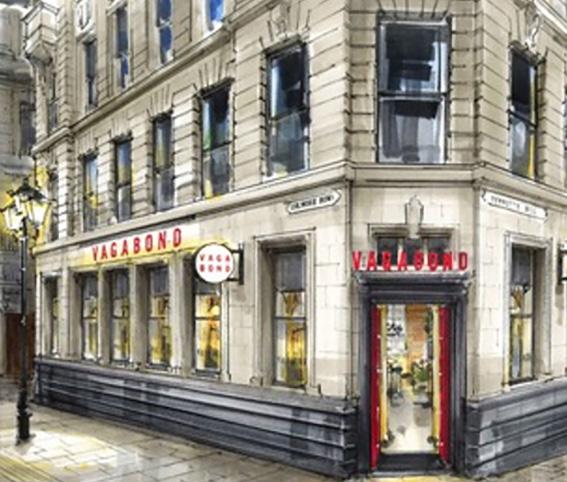
Vagabond team found themselves with worthless share options when the firm hit the buffers.
Could things have worked out differently? Although the value of Fortress’s deal with Vagabond’s administrators has not been disclosed, it’s thought to be in the region of £6.5m. According to one source, Imbiba –the investment group which had a controlling stake in Vagabond – turned down a £15m offer from Fortress in late 2023, despite Finch’s recommendation to accept the deal.
Cat Eccles, newly-elected Labour MP for Stourbridge, came under fire last month for skipping her parliamentary duties in favour of a drinks reception at local indie Nickolls & Perks.
Instead of voting on axeing the winter fuel allowance for OAPs not in receipt of pension credit, the MP opted to support the Stourbridge Business Development District event hosted by her friendly neighbourhood wine shop. In fairness, the N&P event was all business rather than a knees-up. Starting at 5.30pm and wrapping up at a sedate 6.45pm, there were just 15 minutes allotted to “drinks and networking” at the beginning and end of the session, according to the agenda.
Sure, the wines on show were pretty exciting, but some of the energy in the room at Graft’s recent trade tasting at One Marylebone was down to the playlist. Our man on the ground describes it as thumping, vaguely threatening hip-hop, apparently the personal selection of MD David Knott. It was in stark contrast to the sugary ballads favoured by outgoing marketing director Nik Darlington, who once told this publication that his favourite artist is James Blunt. “We used to tell him he had the music tastes of a teenage girl,” reveals one Grafter.
1. Establish a strong identity
Once you’ve defined your goals and target audience, pick the colours, fonts and layout that suit your brand, and stick to it. Websites like Canva offer plenty of free resources that you can even redesign. Create templates for events and wine tips, for instance, that allow you to switch out text and images quickly. This not only keeps your feed more consistent, but helps your audience recognise your content immediately. Vary formats, from videos to carousels, and remember: less is more. Keep longer texts for captions, and use five or six relevant hashtags to increase visibility.
4.Take the audience behind the scenes
People are naturally curious, so show them what happens behind the counter. Give your audience a glimpse of a day in the life of a wine merchant, how events are organised (which will also help build momentum until the day itself) or products selected. Share your successes, as well as your mishaps, with humour: a wine bottle broke? Treat it like a funny episode of a sitcom and show it off online.
5 Engage to build a community
Social media is like a 24/7 networking event: find a few minutes a day to communicate with your audience online. Engagement is becoming the top growth driver on social media, so it is important to reply to comments and messages, like posts and participate in conversations on other accounts to build loyalty. Use polls or quizzes to involve your audience directly and make them feel part of a community.
Your shop window is bigger than you think: 83% of Gen Z say they have bought food or drink after seeing it on social media. Just like a shopfront, socials should be aesthetic, highlight products and events, and reflect your values to drive and enhance the in-store experience.
Iris Fabre presents six tips to make your social media marketing efficient and time saving without spending any money
2. Capture the moment
Snap photos when you receive new products and host events, and post soon after. Content becomes old news fast, so posting while it’s fresh keeps your feed relevant. Trends can be a great inspiration, but don’t feel pressured to follow them all, and only jump in if you can do so quickly and it aligns with your brand. Your account’s aesthetic and value to your audience is what matters most to perform well.
3. Put your team in the spotlight
Faceless marketing is out: customers want to see the humans behind a brand. Showcase your staff to build on the trust customers already have in your team. Whether they share their favourite wine or participate in a fun challenge, keep it authentic and impactful to resonate with your audience and strengthen the personal connection customers have with your store.

6.Encourage user-generated content
Promote your socials in-store, encourage customers to tag your shop online, and repost stories mentioning you. There’s nothing people like more than seeing other people endorsing a product or a place, and it won’t even affect your feed’s aesthetic. With TikTok and Instagram increasingly being used as a search engine, your customers’ posts can expand your reach, offering an opportunity to team up or repost their content.
Remember: social media is about consistency and immediacy. You don’t have to post every day but stay authentic and committed to it. Track what has performed well or not at the end of the month. You can easily access data on your accounts and look for metrics such as engagement rate, reach and impression. The algorithm works in mysterious ways and social media management involves quite a lot of trial and error, but that’s the first step to cracking the code.


Get involved with Sherry Week for a chance to win an allexpenses-paid trip to Jerez
The 11th edition of Sherry Week will take place on November 4-10 in more than 30 countries, so it’s an ideal time to focus on the category and showcase the diversity and versatility of these great wines.
Last year’s Sherry Week saw more than 3,000 events take place internationally. This year, independent wine merchants across the UK have even more reason to get involved with a competition to win an all-expenses-paid trip to Jerez in 2025 for a truly immersive experience in the region. The trip includes exclusive VIP visits to three bodegas, a Michelinstarred pairing experience and luxury accommodation for two nights. For more information about the competition and to enter, visit sherry.wine/sherryweek.
Register your own sherry events, popups and masterclasses free of charge and become part of the movement by using the hashtag #SherryWeek.
Understanding more about the food-matching potential of sherry is the gateway to appreciating the nuance of these uniquely produced wines, and food is also a popular route to tackle those generational misconceptions about this often-underrated category.
A programme of events designed to celebrate its pairing potential could encourage customers to try something new, and at an attractive price point.
From seafood to rich meat dishes, ripe cheeses or sweet pastries, sherry can elevate any gastronomic experience. A chilled glass of fino or manzanilla with a plate of olive and slices of manchego is perfection, but have you thought of matching fino and sushi?
En rama is an inspired wine match for fish and chips. The yeasty notes of manzanilla, time-aged under a layer of flor, pair particularly well with sourdough pizza. Amontillado is good for hard-topair dishes like asparagus and aubergine and is also a safe bet for spicy Thai or Vietnamese food as the complexity stands up to the heat.
The different styles of sherry, from sweet to dry and the wide range of aromas including almond, caramel and apples, provide plenty of scope for discussion and engagement with customers.
There are free Sherry Week merchandise kits available for 150 venues in the UK, to support any promotional activity. Whatever your programme of events, don’t forget to register.
www.sherrywineweek.wine events@sherryweek.wine


Hybrid wine retailing is regarded as a relatively modern affair. Satchells Wines takes no part in the contemporary weaving together of retail and wine bar, but the oldest shop in the north Norfolk village of Burnham Market has a history of splitting its wine space with other types of business that goes back to the 19th century.
Frederick Valentine Satchell – born on February 14, of course – was an iron founder by trade, and divided the premises between wine and agricultural hardware when he opened in the 1880s.
Later, one of the couple who ran the business during the 70s and 80s was a Royal Academy artist, and the part of the shop that had once been piled high with Frederick’s bits and bobs was used to sell art materials instead.
Max Graham-Wood was the next owner, buying it in 1990, and he’s still there today.
It’s a straight wine merchant these days, with a very old-school vibe (it has a claret room), catering to the indigenous local rural population and secondhomers from the Smoke, attracted by the village’s serene charm and the stunning coastline just a mile up the road.
As an 18-year-old Max spurned university, opting for a working education in the vineyards of Beaujolais, Provence and Bordeaux.
“My father was a very enthusiastic amateur, a claret man,” he says. “I was always brought up with decent wine in the house. I thought the wine business sounded attractive; I didn’t fancy being a stockbroker or whatever people chose in those days. I presented myself in Beaujolais by appointment, with a tent and cooking equipment, and then just went from one [vineyard] recommendation to the next, occasionally coming back home, thrashing my poor Mark I Ford Escort, to get clothes and money.”
The educational wine trail eventually led to South Africa as well, before Max returned to the UK, working for a wine merchant in London’s St James’s district and as assistant manager for Hedges & Butler’s shop in nearby Regent Street. There was a spell selling advertising for Decanter in the 80s, before the move to Norfolk, initially to help another merchant set up a wine warehouse in King’s Lynn.
In the 34 years since buying Satchells, the team has expanded from one to two, with Max’s assistant of the past eight years, Oliver Nelson, more
Max Graham-Wood bought a long-established north Norfolk business in 1990. It no longer offers agricultural hardware or artists’ materials, and the decision to concentrate on wine sales, to locals and holidaymakers alike, has proved to be a wise one
“It’s difficult to count the chimney pots because half the catchment area is in the North Sea. But it’s worked out very well”
The Burnham Market premises has sold wine since the 1880s
By Nigel Huddleston
conventionally trained to WSET Diploma level.
There was never any thought of changing the name, says Max.
“I think there might be one remaining Satchell, but if there is they’re very old,” he says.
“It’s not been in the family hands probably since the 1950s.
“But it’s been Satchells since it started, so to carry on the originality of that was more important than calling it Maxwell’s [his full given name].”
Oliver adds: “It’s been around a long time. You still get the odd farmer that finds a bit of old plough embossed with Satchells. It would be daft to change it because the name is so well known and historically linked to the village.”
Burnham Market is, says Max, “a lovely village”. He recalls: “When I was looking for somewhere to invest, my father said you’ve got to count the chimney pots. It’s difficult to do up here because half of the catchment area is the North Sea. But it’s worked out very well. I’m still here and still busy.”

What has changed about the business in your 34 years?
Max: It was pretty much an off-licence when I bought it, not a full-blown wine merchant like it is now. I ship quite a lot of my wine myself. I’ve got a specialist claret room because most of my customers are fairly traditional and like traditional styles of wine. When I took over it was quite a lot of lowest common denominator, entry-point stuff. After a while I thought it wasn’t terribly exciting or profitable.
I started doing a bit of wholesale at one point but it never turned out to be particularly profitable. The money was always in retail – retail customers tend not to go bust on you and they pay their bills. What I do is swap wine for money. I give people wine and they give me money, and then everyone’s happy.
You’ve avoided the modern trappings of a wine bar or Enomatics.
Max: We haven’t got the right location to go hybrid because there isn’t enough year-round footfall. We’ve thought of having a bank of Enomatics but … when we’re busy, we’re very very busy, but when we’re quieter around January/February it’s very quiet.
The layout of the shop is completely different. There wasn’t a fridge. There wasn’t a display cascade in the middle of the shop and no shelves on the back wall. Most of the display was one bottle and the rest was down in the cellar. It was a busy shop but literally just supplied the village.
Has that footprint expanded?
Max: In those days the north Norfolk coast wasn’t what it is now. It’s now an area of outstanding natural beauty and changed from somewhere you might have gone to, to somewhere people
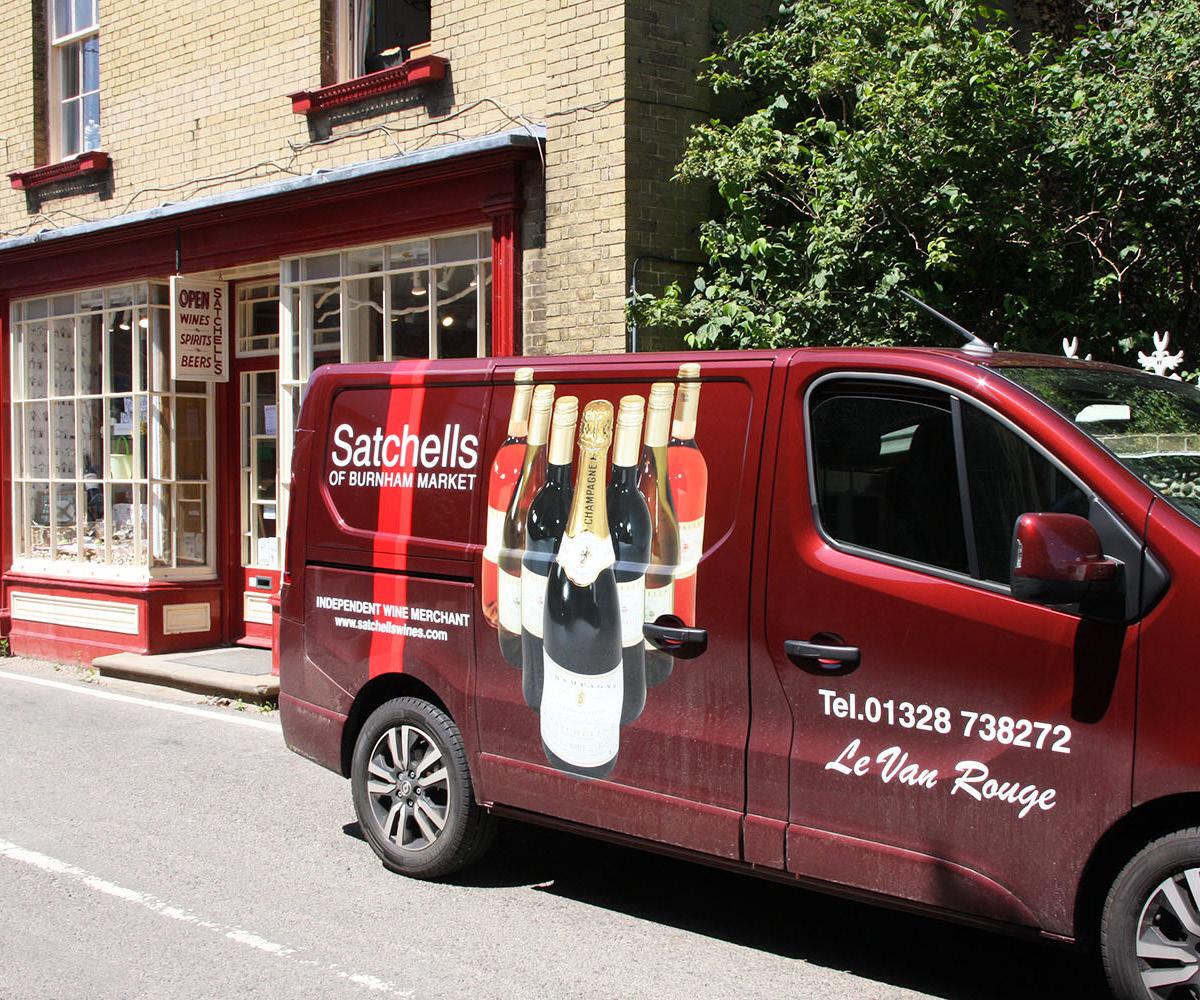

really really want to go to. It’s more of a tourist destination. I wanted to make sure that the business was not just focusing on the people of Burnham Market. I wanted to sell on a 20-mile radius to King’s Lynn and Norwich and Swaffham, and get commissions for weddings and 21sts and things like that, to see if we could get a bit more business, rather than waiting for the odd farmer to come in for a bottle of gin and six bottles of wine.
How did you go about that?
Max: I can’t remember, it’s too long ago. I can’t remember what I had for breakfast. I think I got some electoral rolls and sent something out – and put leaflets in newspaper deliveries, which people had in the days before tablets. I think it was in 1991 that I thought what I needed was for everyone who came in to go on a mailing list – which in those days was an actual mailing list, involving envelopes and stamps.
That was also the first year I did a set-piece Christmas tasting in the shop. I was quite surprised by how many people turned up. That went from strength to strength and now we have two: one in the summer and one at Christmas, both in the shop. The summer tasting is about 17 wines and the Christmas one is about 34.
How has the product range changed?
“In 1991 we had an actual mailing list, involving envelopes and stamps”
Max: In my early times there wasn’t an awful lot of new world. There wasn’t an awful lot of Italy, to be honest. There was a bit but it was pretty bog standard. Five years ago we had a proper red Burgundy department and it was all proper,
drinkable, affordable wine. Nowadays the stuff they send out is neither – it’s too young and too expensive – and so one of the things we’ve done in the past year is to take the five shelves of red Burgundy and reclassify it as “global Pinot Noir”. All the Pinot Noir is now in that space and the unaffordable expensive stuff is at the bottom.
Oliver: It’s allowed us to introduce Central Otago, Oregon and California and a few bits from Germany that have more bottle age but are more affordable. We’re selling a lot of them and it’s revitalised our Pinot Noir sales, which is good because the Burgundies were getting a bit ropey.
Max: I’m very keen on everyday language on signage, with a bit of humour. Nothing too stiff. It’s all laid out in countries. I will organise it in styles, such as light reds and big reds and chunky reds, only over my dead body.
You kept elements of that old off-licence range, with bigger brands in beer and spirits.
Max: Yes. We don’t sell cigarettes but we do sell fine cigars. We don’t sell bars of chocolate but we do sell boxes of nice chocolates.
“Trends do get here from London but they take a long time. The resurgence of Riesling has only just reached us”
We do sell Gordon’s but we don’t sell an awful lot of it, but we can’t not sell it, or Baileys or Kahlúa or whatever. If local people want something like Baileys they might drive to a supermarket and then buy their wine while they’re at it, and we don’t want them to do that.
Do trends move differently in rural Norfolk?
Oliver: Trends do get here from London but they take a long time. The resurgence of Riesling across London is a good example. It happened there five years ago and it’s only just reached us. People have got used to it and this year we’ve gone from having three to about 10.
Do the tourists and second-homers shop differently from the locals?
Oliver: People are on holiday and want what they know and feel safe with, but they’ll buy two bottles instead of one because they’re on holiday and they drink a bit more. If they’re someone who normally drinks £40 bottles of wine, they might well buy two at £25 and spend 10 quid more overall. We do incredibly well with slightly alternative

choices – baby or poor man’s versions. If we have a Puligny-Montrachet producer we might also have the Bourgogne Chardonnay from them. It says Puligny-Montrachet on the cork and it’s almost like a second wine from Burgundy to them. In the claret room we do extremely well with second wines. They’ve got their comfort zone, even up to silly prices, but if you can make a link into it … Max: They’re here on holiday and they don’t want to be challenged by their drinking. They don’t mind that when they’re at home and can take the time, but when they’re up here they’re switched off and in wind-down mode. They don’t want to be taxed by something fancy but they do want something decent and we tailor our sweet spot on price to accommodate that.
Max: There’s very little under a tenner that we’d want to put ourselves to, so the first sweet spot is £12-£15 but I would think that overall our main market is £12-£25 or even £12-£30. We’ve got plenty of stuff over £30 and a bit under £12, but to be honest, with the duty rates at the moment, I’m struggling to find anything that gives value for money under £12. So much of it is duty and packaging and labels and bottles and shipping. By the time you put some wine in you’ve only got about 10p’s worth in the bottle. It’s difficult to see how that ends up as a drinkable good-value product. So we don’t go too low.
Max: About 90% of our claret is shipped direct. We can offer better pricing than going through an agent. They ship it, put their margin on, put the managing director’s fancy car on, and the plush carpets in the office – and we don’t. We get much better pricing and we can lay our hands on slightly older stuff if necessary.
Our house wines are shipped from Cote de Duras, just outside Bordeaux – a red, a white and a rosé. I’ve shipped our house Champagne for 30 years now, working with a small family company called Baron-Fuenté. Inexpensive Champagne has a tendency to be a bit green and fizzy, whereas this has got 10 months’ ageing beyond the legal minimum, so it’s a bit softer and nicer to drink. It’s a staple of almost every party in Norfolk.
We ship direct from Burgundy, from the Loire –and from Provence in the summer. I first shipped
“I’ve shipped our house Champagne for 30 years now, working with a small family company. It’s a staple of almost every party in Norfolk”
from Provence in the long hot summer of 2003. I ordered three pallets in six weeks. The owner rang me up and couldn’t understand how I was getting through so much of the stuff with only one shop. I think that was the one time we taught London how to do it. I was big in rosé before anyone else caught on.
Have you led the way on anything else?
Max: Yes! I was calling my deals a mixed six long before Majestic. It’s 10% off a mixed half-case. It’s been going great guns here for a long time – and then suddenly Majestic started using it. I thought oh, I should’ve trademarked it and made them pay for it.
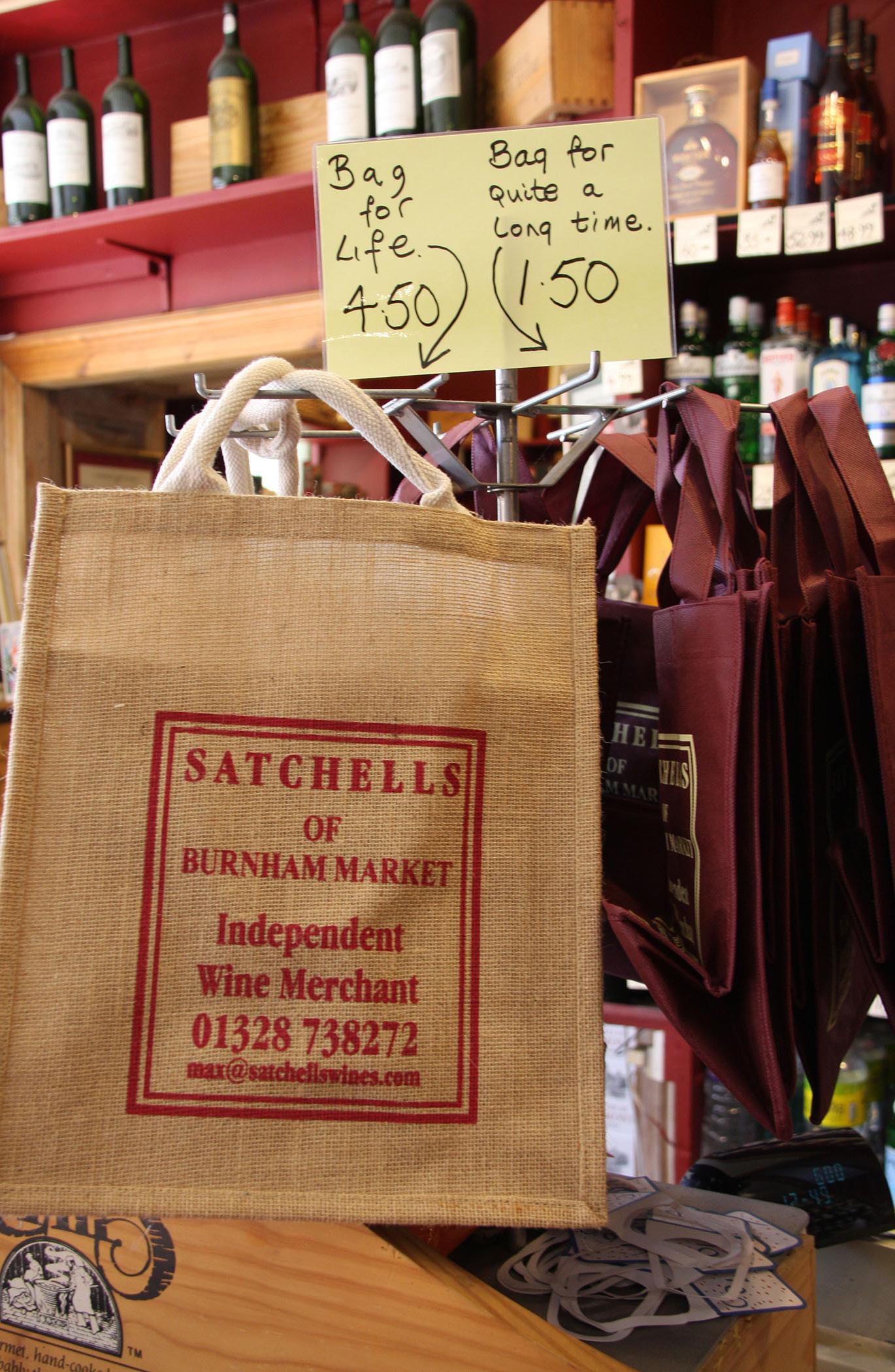
Oliver: We’re a proper traditional old-school merchant selling wines for people to take home and drink. We do an awful lot of mixed sixes. Halfa-case sales or more is the bulk of what we do.
Max: There’s an article each month in The Wine Merchant, Not You Again, and we do have quite a few Not You Again moments. One was: “How does this mixed six work then?”. I started off saying, “there’s a clue in the name”.
Oliver: Some people really don’t get it even when you explain it. They think they buy six and pay the cheapest price of the six for all six bottles. Noooo! You don’t buy Nero d’Avola at £10.99 and then a bottle of Latour and pay £10.99 for the Latour. We have tickets on bottles on the shelves saying “cold”, to show a wine’s also in the fridge. The amount of people we have saying “well, that’s not cold…”
Apart from the Christmas and summer tastings, are there other events through the year?
Oliver: We do private tastings every now and then. They fell off a lot during the pandemic and they’re only recovering now.
Max: The concentration of population around here isn’t tight enough to be able to say, “next week we’re going to do claret and the week after we’ll do Rhône”.
Oliver: We’re on first-name terms with a lot of second-home owners but they’re only here every other week. If they could tell us their schedule it would be very helpful.
Max: People coming up here don’t want to be challenged. They want to come in, have a nice little chinwag with one of us, take the wine away and go and sit in their house or garden. They don’t want to traipse out at seven in the evening for a couple of hours to learn about something. It’s very much relaxation mode: most of them are switched off.
How important is online?
Max: We do it but our offering is neither the topdrawer stuff nor the lowest common denominator. It’s not cheap or really expensive, and there are plenty of companies doing the same who have IT departments and dedicated staff. It’s not something we’ve ever spent a degree of time or money on.
Oliver: We’re only a two-person business and online can be pretty much a full-time job. The trouble is at the moment that with almost every other invoice, there’s some sort of price increase which has to be updated – it’s not even six-monthly

– and it makes the workload on the website very heavy for not a lot. And most of the companies who sell the bulk of wine online in the UK are in higher population areas or near the M6 corridor. Shipping from here is expensive and we can’t offer the discounts they can.
Outside of your direct shipments, what’s your supplier base like?
Max: Johnny Bingham at Delibo is very proactive and massively enthusiastic once he gets his teeth into something. He’s very good. We use ABS, through which we ship our own claret.
We use Boutinot a bit, Hallgarten a bit, Hatch a bit, Liberty a bit, though we do quite a bit less with Liberty than we used to. I’m a member of Vindependents, so we get quite a bit from them. Vindependents has some very good wines, it’s just a bit slow. They used to be in bond at EHD but are in transition to LCB, which is where all my other stuff is, and that should sharpen things up a bit.
Is exclusivity high on your list of buying criteria?
Max: I don’t want anything that’s widely available. If I come across a new wine, the first question is: “Is it in Majestic?”. We used to do quite well with a claret that started selling to Majestic. People would point out it was cheaper there, but I’d ask what vintage it was. Majestic would be selling the filthy 2013 and virtually giving it away and we were selling the 2015, which was much better and more exciting. “Yes, it is five quid more.”
I don’t want to buy a load of the same stuff from Boutinot or Hallgarten because a lot of other people do that. In order to be passionately independent, as I am, I want to take my own decisions, and not have four or five wines from the same estate because it’s easy. That’s casual lazy buying. I strive to get what we need but not necessarily all from the same place – and it doesn’t automatically reappear next year if the vintage isn’t right.
“People coming up here don’t want to traipse out for a couple of hours to learn about something. It’s very much relaxation mode”
Do you have personal great passions in the wine world?
Max: I think because of my father I’m a dyed-inthe-wool claret man. If I went on Desert Island Discs my luxury would have to be an everlasting bottle of Château Latour ’82. When I finished it, it would refill through the night and I’d drink it again.

David Williams reports from the WiseWineFuture 2024 conference in Tahiti, where a range of speakers from different corners of the wine world came together to help shape “a wiser wine future”
Now in its 17th year, WineWiseFuture’s 2024 edition was held for the first time in Tahiti, with 2,000 guests flying in from 100 countries around the globe for what the organisers promised would be WineWiseFuture’s “first carbon-neutral year”. As ever, proceedings kicked off with a panel discussion addressing one of the year’s key themes: Death or Glory: Wine’s Ticking Demographic Timebomb, a discussion of falling wine consumption and the category’s shrinking and ageing consumer base.
Moderator Doug Viable, Vice President in Chief, Content and Communications, Shock Bottle Media Org, set the scene with some graphs and pie charts, and a stark pronouncement: “Let’s face it, the wine
‘The demographic timebomb is literally ticking, right here, right now. You can hear it. It’s loud. Tick, tock, tick,
tock’

trade has done a terrible job of attracting new consumers, and time is running out to get them on board. The demographic timebomb is literally ticking, right here, right now. You can hear it. It’s loud. Tick, tock, tick, tock – or maybe even, TikTok, TikTok! It won’t stop on its own. We in the wine business need to do something to switch it off – and fast!”
Young Canadian influencer Lucy Green,
better known by her social media handle Lucy Juice, agreed. “I am quite young, and it’s been a long time since I saw the wine business do something to attract young wine drinkers like me. If they want to attract me and other young people, they need to talk to us in a language we understand – a young people’s language on social media or other places, such as nightclubs or rock concerts, gyms, places like that, where young people like me like to spend a lot of our young time.”
For famously contrary British “wine disruptor and word-scientist” James Jameson, the young are only part of the answer, however. “By all means target the youth in all their beauty, it can do no harm. But I know of a Californian producer with strong ties to Silicon Valley that has come up with the truly avant-garde solution. I’m not at liberty to give you full disclosure, but let’s just say that, if you add up all the wine drinkers who have ever existed but who are sadly no longer with us and compare it to the number of wine drinkers currently alive in the world today … well, are we looking in the right place for the next
generation of serious wine lovers?”
After a six-hour networking lunch featuring a sustainable 24-course tasting menu with matching wines prepared by a dream team of 20 star chefs, including the Roca brothers, Joel Robuchon, Daniel Humm and René Redzepi, among others, and with each bringing their full kitchen and wine service teams, plus equipment and ingredients sourced in 50 countries, the event continued with a lively 30-minute discussion of the climate crisis: Can’t Stand the Heat? Is it Time for Wine to Get Out of the Vineyard/Kitchen?
Moderator Brianna Bru, Vice President Content Features and Audience Engagement, Shock Bottle Media Org, kicked off the session with some graphs and pie charts, and a rousing call to arms.
“It’s getting pretty hot in the world’s vineyards right now. Too hot to handle. It’s burning in here! So, so hot. But it’s not too late, even at this late stage of the day, when the vineyard’s skin is burning and blistered, and it is desperate for something to drink. But we in the wine business need to do something to turn that heat down –and we need to do it fast!”
New Zealand wine producer Brett Blanc of Intangible Wines in Marlborough agreed. “We have led calls for an industry-wide, international standard to enable largescale wine producers to work towards sustainability targets in a range of areas, including reasonable and achievable climate obligations, all while ensuring that we can continue to produce and sell highquality premium wines to a broad portfolio of export markets in exactly the same way we always have with no cost implications,” Blanc said.
Dwight Aydia, CFEO, EMEA, Euphemenergy Worldwide Solutions, also painted an optimistic picture. “Our research shows that wineries who are

able to transition to our CleanestCarbon programme perform much better on a range of metrics than those who don’t,” said Aydia. “A full suite of options can be found in your welcome pack.”
For James Jameson, it was a matter of “forcing the wine business to break out of its lateral, or perhaps literal, but certainly

linear thought-processes. The problem may feel intractable, but in essence, it’s as old as time. I like to refer to something the 5th-century Chinese military strategist Sun Tzu came up with in his Art of War “Forgive me if I quote him at length. ‘If your enemy is secure at all points, be prepared for him. If he is in superior strength, evade him. If your opponent is temperamental, seek to irritate him. Pretend to be weak, that he may grow arrogant. If he is taking his ease, give him no rest. If his forces are united, separate them. If sovereign and subject are in accord, put division between them. Attack him where he is unprepared, appear where you are not expected.’
“That’s precisely what the wine trade needs to do in its war on the climate crisis. It’s not a matter of ‘if’. Just a question of working out how, when and where and what and who and why.”
It was a fitting way to end another fascinating, thought-provoking event. Roll on WiseWine Future 2025!
Champagne AYALA cellarmaster Julian Gout joined the company in 2018 – taking on his current role in 2022 – after spells at Selosse, Taittinger, Henri Giraud and JM Vergnon. He tells us about micro-vinification, AYALA’s quest to be more sustainable, and experiments in winemaking
How would you describe the AYALA philosophy?
To be as close to the wines as possible, in the purest way, with minimum intervention. The fact that everything is done in-house contributes to the respect and expression of each terroir. We can create a cuvée which embodies our style with more than 70 crus, which is unique. We take the time to “raise” and age the wines, and they are left for as long as possible in tanks on fine lees.
Tell us something about your microvinification process.
We have more than 120 vats, ranging from 5hl to 200hl, and this enables us to separate each cru, grape variety and year. This is how we respect the purity of each terroir and its inner expression. This allows us to tailor blends to create the wines we want.
How is Champagne performing on sustainability?
The appellation is pushing for no-herbicide use by 2030 and a strong reduction in our CO2 footprint. We were the first viticultural appellation to do a CO2 footprint audit, in 2002/3, and a firm plan was established in 2005 to reduce it by
25% by 2025. The ambition is there, but it takes time to put things in place. It’s a slow process, but there is progress.
What part is AYALA playing in all this? Our vineyard is undergoing organic certification and will be certified in time for the 2025 harvest. We also have a programme to help our 100 family winegrower partners to at least sign up for Sustainable Viticulture in Champagne (VDC) or High Environmental Level (HVE) certification.
We decided to build our new winery in-house, using existing buildings. It’s more costly but enables us to lower our carbon footprint and reduce transportation of wine in trucks.
We’re also working on reducing the weight of bottles. Very positive results have already been obtained, but we need to know how those bottles will behave in three years’ times.
Do you have room to experiment?
We launched our revised blends and new bottles in 2023, with a strong statement in the winemaking: a minimum of 50% Chardonnay in the wines, a maximum of 6g/l of sugar and a higher percentage of reserve wines – a minimum 40% in
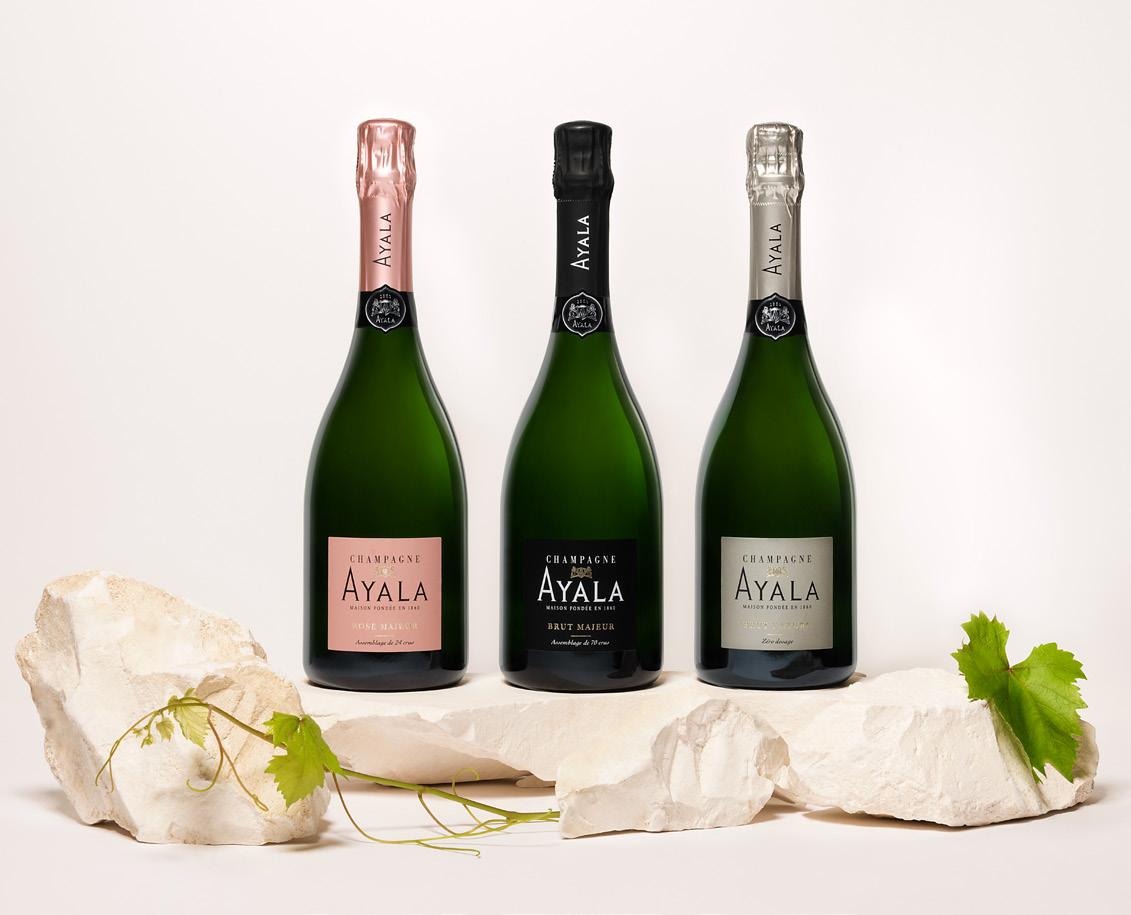
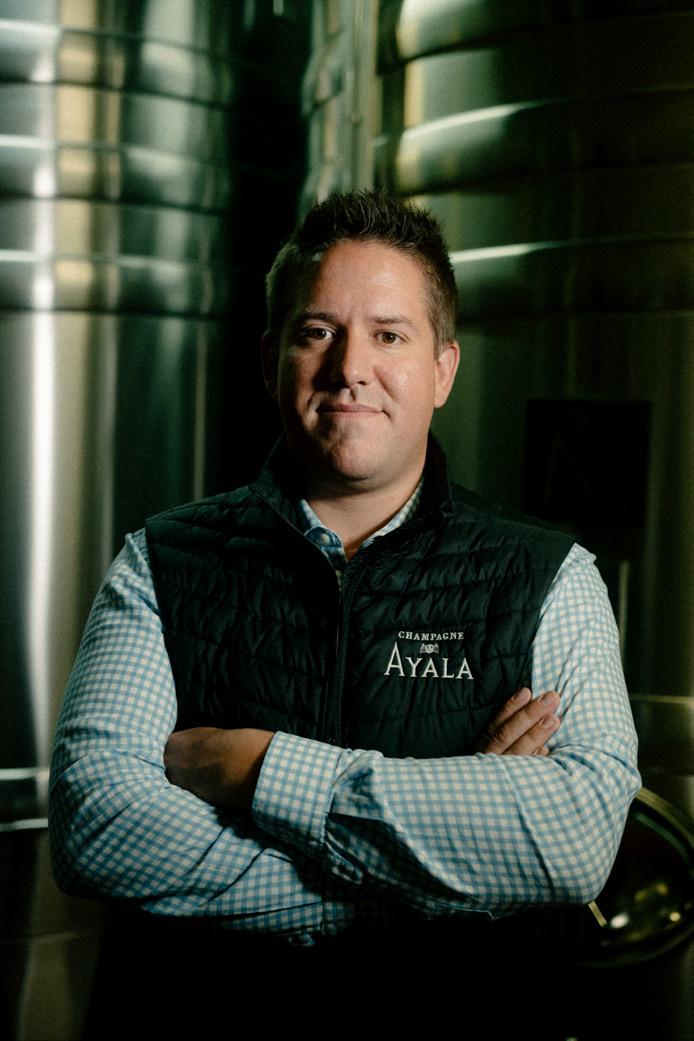
In association with Mentzendorff
the Brut. This is a strong commitment to quality and a very important step for us. My main priority is to pursue this path, which both respects and improves the house style. But we do experiment, with our stainless steel eggs, hybrid barrels of two-thirds oak and a third stainless steel, forgotten grape varieties and smaller tirage for specific cuvées showcased in the Collection Series.
We also do lots of experimentation in the vineyard. We have created a group with our partners to better understand soils, resilience, grass coverage and so on.
What most excites you about your work?
Tasting finished cuvées, as it is the result of a long process of craftsmanship, hard work and patience. It’s always thrilling to see the final result. I look forward to continuing to improve the wines and get the recognition the house deserves.
AYALA Brut Majeur
This is really the entry into the AYALA style through multi-crus and multivintages. It is the expression of both purity and balance, which is the hardest thing to achieve.
AYALA Le Blanc de Blancs A/18
Our signature cuvée showcases our know-how and mastery of Chardonnay, the house's signature variety, and the purity of the Grands and Premiers Crus contributes to the blend after an impressive six years on the lees, with an extra-brut dosage. This is an elegant and complex wine, with so many layers to it, to be enjoyed on its own or with food.
AYALA Collection No 16
The wines in the Collection series are geeky, more unusual wines, linked to our commitment to the future and all the experimentation we’re doing at AYALA. This particular edition is a Blanc de Blancs, which has a unique blend of 50% Chardonnay as well as 50% of the more “forgotten grape varieties” including Petit Meslier, Arbane and Pinot Blanc.
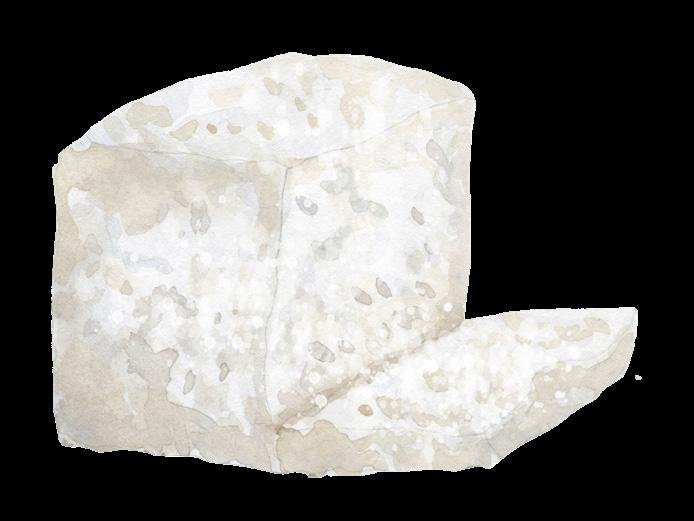


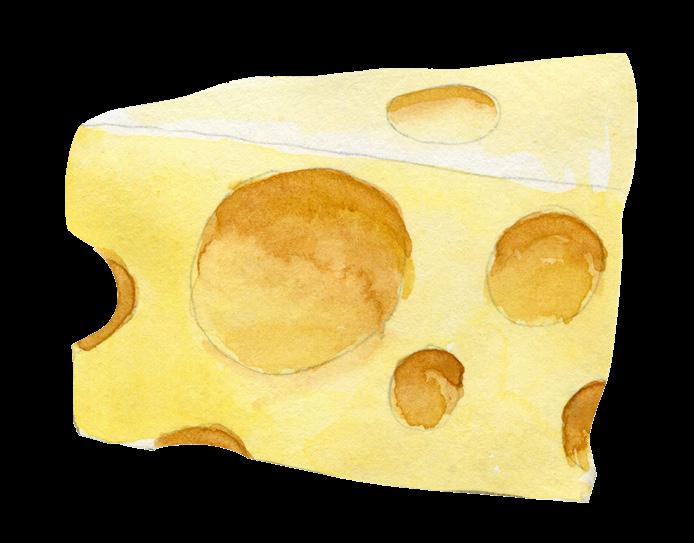





Coverage from our September webinar for indies starts here

Many independents will have thought at some point about adding cheese to their offer. Whether it’s for retail or to serve in-store with a glass of wine, there are issues to consider in terms of safe handling and storage, not to mention the question of product knowledge.
The Wine Merchant’s recent webinar, led by Charlie Turnbull of The Academy of Cheese, himself a former independent retailer, pointed merchants in the right direction.
As a wine retailer, you may ask why people would buy their cheese from you. “For the same reason they’re coming to you to buy your wine,” says Charlie.
“You’ve got a ready-made market of people who are interested in cheese because there’s that natural crossover between wine and cheese. You will have a better, more interesting offer than the supermarket, and you will know more about it. It’s about increasing basket spend, getting them through the door more frequently and getting new customers.”
Cheese, just like wine, is a premium product that people enjoy purchasing in a way that involves a level of engagement that supermarkets can’t replicate. As with wine, indies cannot hope to compete with the supermarkets, but by offering something different can create a USP.
“People will keep going to the supermarkets,” says Charlie. “They are going to buy Cathedral City, so you’re better having an offer that is distinct and evolving, and in your style, rather than trying to compete.”



Charlie identifies three key areas that independents can lean into with their cheese offer. He suggests that a high percentage of customers will already associate indies with gifting. If a customer is buying a bottle on their way to a dinner party, it’s easier to “use your existing footfall to the best advantage” and upsell to include a well-paired cheese. “It could also be gifting as part of a hamper or a nice boxed-up offer,” Charlie says.
“We found that customers will come in and routinely buy themselves 250 grams of their favourite cheese as a treat – and then there are the extra options of biscuits and chutneys, all very easy to buy in small quantities at wholesale prices and put by your counter.”
Charlie reports that the “mainstream” sales for him as a cheesemonger were generated from people wanting a number of cheeses to create platters to share with friends and family. “That’s where we get our biggest sales. People are buying four or five cheeses and they’re spending maybe £4 to £8 per cheese.”
As for serving cheese to accompany on-premise wine sales, it doesn’t have to be complicated. “There is the opportunity to pitch a cheese offer proportionate to your business, from using prepacked stuff that you cut and serve, up to the best cheese restaurants that have a really substantial offer,” says Charlie.
“My personal favourite is the most basic platter that comes out with maybe four slices of salami and a couple of cheeses. It feels very affordable [for the customer] and they can enjoy it with a couple of glasses of wine.”
Any cheese reaching the end of its retail shelf life can be moved through to the food service. “That definitely works, but you need good management,” Charlie advises.
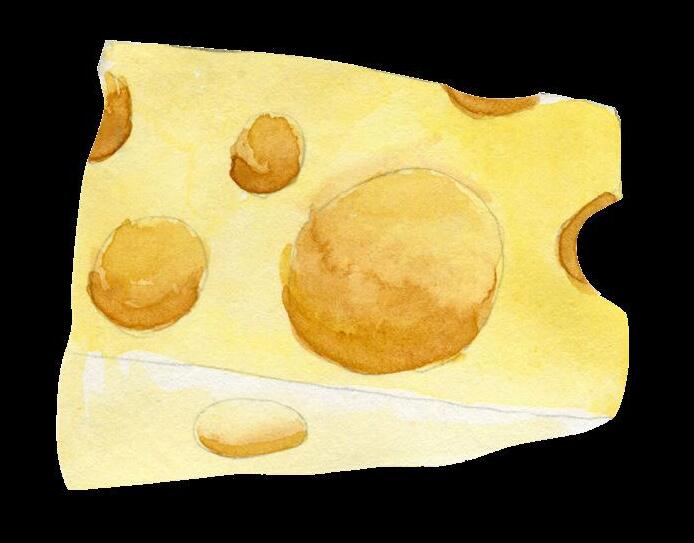
Most artisan cheese sellers will have cheeses that they cut, wrap and serve. It’s quite a specialist job, with a dedicated staff member who can cut, wrap and serve. It needs a fair amount of kit, takes up quite a lot of space and each sale can be quite time consuming, so it’s a commitment.
If the budget doesn’t stretch to that, there are a couple of other ways to introduce cheese retail. “Pre-packed cheese has lots of benefits if you’re starting out,” says Charlie. “You could buy a small pick-and-go cheese fridge – there’s all sorts of fridges out there. Pre-packed cheese is going to have a longer life, there is no need for specialist environmental health knowledge, and it’s probably going to be slightly cheaper because there’s less wastage. It’s easier to go into hampers and boxes, but the range will be much smaller and the packaging can be ugly.”
Alternatively, there’s what Charlie describes as the half-and-half option. “You buy cheese that you like, cut it and pre-pack it in your own wrapping paper and put that out to sell. If you go into Whole Foods at High Street Kensington you will see they have loads of cheese that they have cut and wrapped themselves, so it’s an established route.”
As Charlie says, the downside of pre-packed cheese is that it can look ugly, so if a retailer has gone down the half and half route or the complete cheese counter offering, having bespoke wrapping has its benefits.
“Cheese likes to be big for as long as possible,” he says. “So if you have a big Parmesan and you cut off a slice, that slice is going to taste better than something that’s been vacuum packed for a month and a half. If you get to cut and wrap the cheese, you’re going to have your own paper, perhaps with your monogram on it. It’s going to look great. It’s going to feel special.
“We have really strong evidence that customers like the process of unwrapping the cheese in their own home. It’s like a little present and if they will leave it on the sideboard partially wrapped for their guests to see that they bought the cheese from ‘the posh wine shop’’ not Waitrose.”
It’s worth stocking a cheese from your neck of the woods. “Customers will pay more for a local product,” says Charlie. “They see the benefits of supporting local, the benefits of short food miles and they feel connected to the product through your connection with the cheesemaker. If you’ve got a little story about the local cheeses, that’s a softer, easier sell and tourists will be doubly interested in local products too.”
Local doesn’t necessarily equate to tasty, warns Charlie. “Some producers might be at the beginning of their journey and cheesemakers need four or five years really to get a cheese to be at the top of its game.
“British beer is a really good match for British cheeses, so look at the excellent small producers of British Cheddars and start building an offer around your beer. If you’re looking for cheese to match your European wines, pitch into the terroir. So for Burgundy, look at cheeses like Delice de Bourgogne, and you can start guiding your customers towards making purchases to correspond with what they’ve already bought into.”
British cheeses may not have a history of matching with wine but Charlie is confident that it is possible. “You have to be a bit more creative about finding the right things,” he advises, and your relationship with your wholesaler will definitely come into play when selecting the right cheeses for your business.


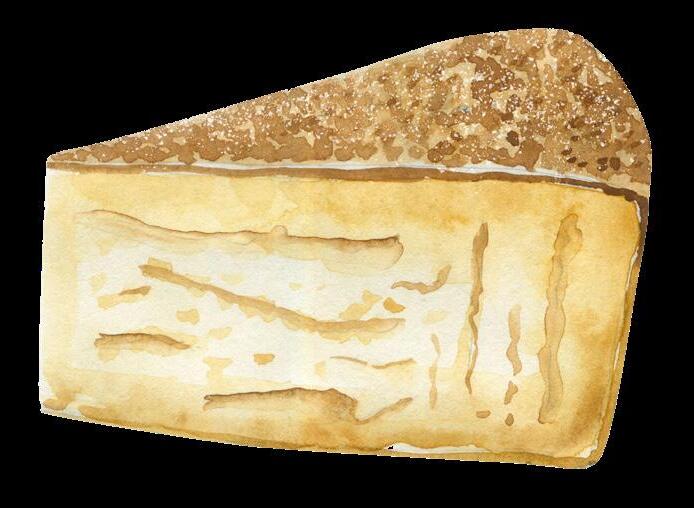
Before taking the plunge, perhaps try a couple of cheese events in the shop as a one-off. Christmas is the perfect time for indies to promote a perfect definition of a cheese board. Another seasonal idea Charlie highlights is quite a theatrical but effective one he saw in a shop in Ireland. “They plugged an upside-down bottle of port into a massive Stilton and had it on display. It really got customers’ attention and got people talking,” he says.
“Doing a board of the month is good too. I have done cheese and wine tastings forever, and if you have five cheeses, you end up choosing five wines, but that’s never going to happen in someone’s house. The reality is one wine and a cheeseboard, so you can select a wine and build a cheeseboard around that one wine.”
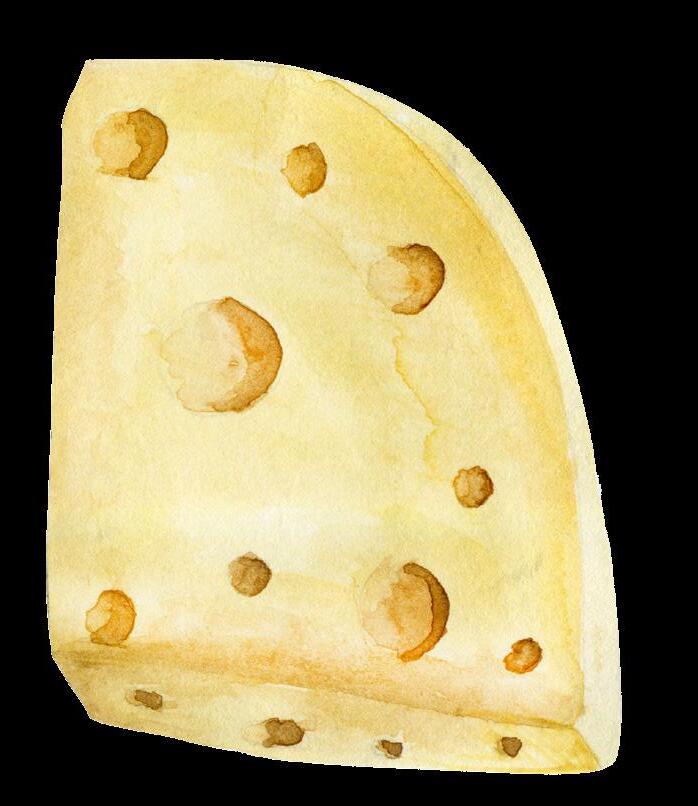
Liquorice Wine & Deli, Shenfield, Essex
“Instead of just going small with a little counter, we decided to go big from the start. We decided to go open a cheese room.
“Our cheese room isn’t huge; it’s about two metres square and we have 50 cheeses in stock at any one time. We didn’t do any prepacked at first, but we have added a few now.
“It’s been really successful. I do think that had we still had a stand-alone wine shop, it’s unlikely we would still be trading. I am lucky we have space to be able to expand.”
Jo says the initial outlay was £25,000 but it paid for itself in the first year.
“I use three suppliers and they all deliver next day and they’re all the best you can get,” she says. “We use the best French supplier, the best English supplier and then we have one other for other cheeses. I’m always bringing in experimental cheeses as well.
“In the past year we have introduced a grab-and-go section. Our best-selling cheese is Baron Bigod from Suffolk and we do a small version of that which goes into our grab-and-go offer.
“We’re always looking at different ways of marketing our cheese. We do a cheese of the month and we get supplier support to just change it up and to give the customers something interesting to try.”
The Academy of Cheese was set up 10 years ago and works on a very similar model to The Wine & Spirit Education Trust.
There are four levels of certification that lead up to Master of Cheese, a title that is expected to be awarded for the first time next year. Level 1 can be accessed via self-study, virtual study or in the classroom environment: each option costs £135. This certification provides a hands-on introduction to the world of cheese and comprises nine modules including buying and distribution, presenting and serving, regulation and good practice as well learning about 25 iconic cheeses.
The No 2 Pound Street Cellar, Wendover, Buckinghamshire
“We started off in 2010, as a hybrid wine shop and wine bar. We knew you can’t just be a wine shop anymore, so we were doing an evening service and started with cheese boards and charcuterie –easy.
“We had a 3ft cheese counter, a little bit of prep space, with the intention that people would try the cheeses and then buy some from a small retail offering as well. We soon realised that it was a part of the business that people were really interested in. We got really busy and we needed to increase the retail. So we got an 8ft counter, and our range of cheese is now up to 40.
“We buy a lot direct from the farms. We’ve started doing wholesale, we do markets and events specialising just in cheese, so cheese has become a huge part of our business. We’re just as much a cheesemonger as a wine shop now.”


Mark Darley swapped life in a law firm for a new career making English sparkling wine. All Angels has been a
When asked to describe what
All Angels is about, Mark Darley use the F-word almost straight away, and it sets the tone for the conversation.
“We’re not a volume player,” he says. “We don’t want to produce the most wine that we can – we could produce 35,000 or 40,000 bottles a year – but we just want to make the best single-vintage wines. We want to be unique. And we want to have a little bit of fun with this as well.”
Fun. Arguably the wine industry’s trump card, but something that can become rather overlooked during the long, hard and often thankless slog of turning a patch of land – in this case, in rural West Berkshire – into a viable piece of viticultural real estate.
All Angels is based at Church Farm in Enborne, its vines surrounding a delightful 12th century church. (Mark reports that comparisons have been drawn with Hill of Grace in the Barossa
Valley.) The farm was purchased in 2009 and the first vine went into the ground in 2011.
“The land is absolutely superb,” Mark says. “To be candid, we didn’t buy the farm with the intention of putting the vineyard in. We brought in one of the country’s leading viticultural consultants to analyse the site, and they said, what you’ve got is absolutely ideal. You have a north-south facing slopes. You’ve got an angle of six to eight degrees, which is great for helping to protect against frost –which is the biggest worry, of course.
“The highest point is only 120 metres. And the soil is a great combination of sandy loam over greensand, so it drains freely, and there are good deposits of gravel and flint so it warms up quickly too. Go down deeper and there is chalk.”
So the terroir seemed optimal. But how did Mark, who was then still a full-time partner with a US law firm, decide on what kind of wine he was going to make?
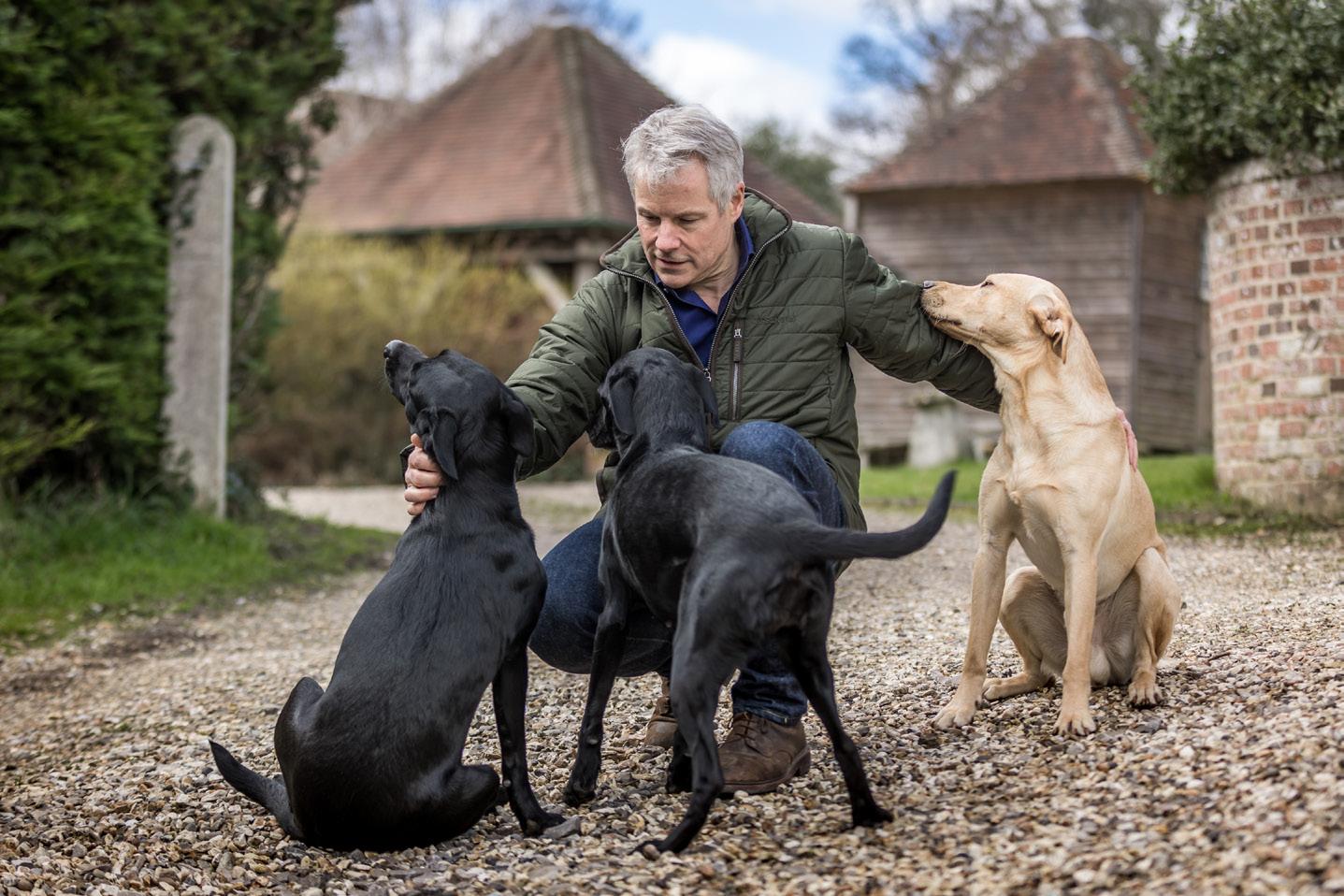
“We were guided by Emma Rice, who was our winemaker at the time, and she said to me, what’s your favourite Champagne? I said Krug. So she said, OK, well, let’s try and make something in the style of Krug, and it evolved from there. But each wine is very different.”
All Angels prides itself on sparkling wines, made with Chardonnay, Pinot Noir, Pinot Meunier and Pinot Gris, that truly reflect their vintage and are given extended lees ageing to add richness and complexity.
“They are full-bodied. We like to make sure that they’ve got real flavour to them,” says Mark.
“We want each vintage to reflect its growing season, and we want the wines to represent the best that we can achieve from our grapes.
“To make sure the grapes we press are optimal, we do a lot of green harvesting. It’s inconceivable that we’d use all the grapes that we harvest in any particular vintage, because that’s not going to give us the best blend.
“We’re never going to release anything unless it’s ready and frankly, if we ever have a bad year, we will just make a reserve wine, not for release on its own.”
All Angels has a strong following, both locally and in London, among restaurateurs and specialist retailers. It has now taken
‘The wines are fullbodied. We like to make sure that they’ve got real flavour to them’
control of its own distribution and hopes to find more listings in the independent trade. Which wines would Mark recommend as a starting point?
“The Classic Cuvée 2014 is an absolutely outstanding wine,” he says. “We’ve still got a good stock of that left and it pairs with most foods. It’s what I’ve described as my default wine.
“That said, the 2017 that we’ve just released is becoming rapidly a favourite with a lot of people. It pairs incredibly well with food: fish pie, lobster, partridge, wild mushroom risotto. I’ve had it with all of those, and it’s superb.
“The other one, which everybody loves, and I’m not just saying that, is the sparkling rosé, a 2018 vintage that we released in June last year [a Rondo/ Pinot Gris blend]. If we’ve come across even half a dozen people in that time that said they don’t like it, I’d be surprised: even people that don’t like rosé love it. You got the big red fruit flavours without that vegetal note that you can get if you produce a still wine from Rondo. It’s an absolute standout wine.”
All of the fruit that goes into All Angels wines comes from its own vineyards, which is a fundamental principle that Mark is determined to stick to. He’s very happy to work with Hattingley Valley, which has been his winemaking partner since the start, and does not feel the need to rapidly expand the estate or build a winery of his own.
“We’d never, ever, ever buy a single grape in. That’s not our game,” he says. “We want the wine to reflect our land, our ecosystem. As we say to people, we know how those grapes have been treated from the day the vine was planted, right
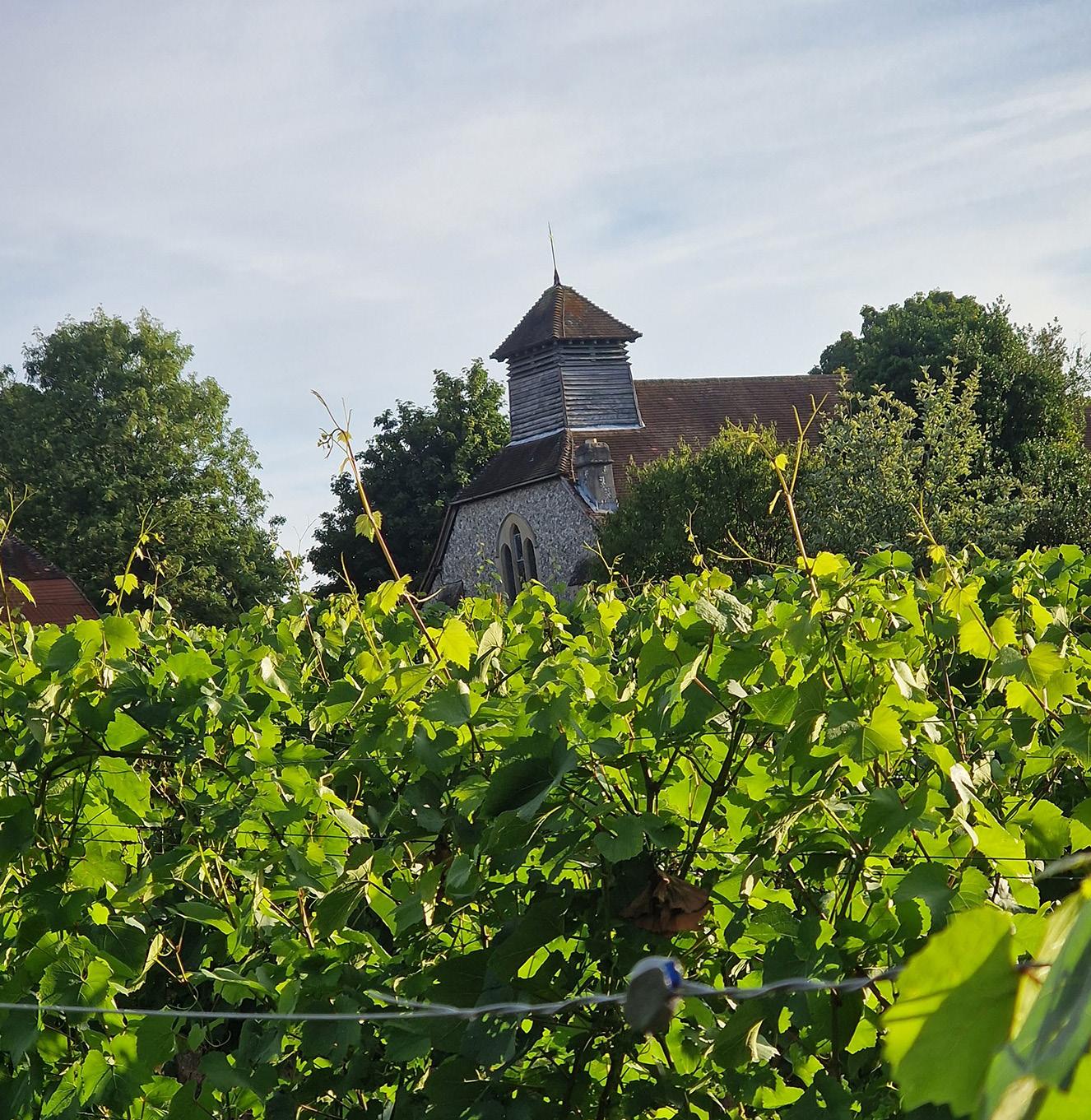
the way through to the day the bottle is opened. And that’s important to us.”
Another thing that’s important is nature.
“We are very keen on ensuring everything we do is done as sustainably as possible, and we support wildlife as much as possible,” Mark says.
“We’ve got tons of wildlife here. We’ve got otters in two sites, which is why we don’t have any carp or golden orfe in one of our ponds anymore. There are eight different species of bat, two extremely rare, one of which roosts in the ground. We love them. They hoover up the bugs in the vineyard.
“At our largest vineyard, we’ve got a quite a big acreage on the other side. It’s slightly north facing, so we decided not to plant there. We actually put a wildflower meadow in, a whole load of trees and wetland wildlife ponds, and when we were digging the ponds out we discovered we’ve got blue clay. So my mind immediately went, blue clay: Pétrus! So as a bit of a laugh, I’m sending someone off to get some Merlot stock and plant that.”
All Angels has form with this sort of experimentation: a sparkling red called Angels 340, made entirely from Rondo, proved to be a cult hit.
“I wasn’t convinced it was a good idea,” Mark admits. “But after two or three years’ ageing in bottle, it turned out to be absolutely superb. A sommelier in New York once said of a wine she was blind tasting, you know, it’s a bit like a bad boyfriend: I keep going back to it, but I’m not sure why. And that’s the description for Angels 340 too. Everyone who tries it says it messes with your head.”
If Mark sounds like someone who’s relishing his change of career, that’s because it’s true.
“Yeah, I’m happy,” he says. “I'm working the same kind of hours that I did before, more days per week – I just don’t get paid for it. I’m just ploughing money into the business. But I’ve also swapped my commute from one hour on the Tube, with my nose stuck next to somebody’s armpit, to three minutes with three Labrador dogs. So it’s not all bad.”
He smiles broadly. You sense that life at All Angels is actually pretty good.
Awine business with a turnover north of £35m might not seem like it’s part of the indie community. But that’s how Jeroboams thinks of itself, both in terms of the way it runs its retail estate, and its relationships with smaller merchants.
As the company, founded in 1985 by Peter Rich, approaches its 40th anniversary, its sales are roughly evenly split between retailing, private client business and its wholesale activities via Jeroboams Trade.
Under the stewardship of wine director Peter Mitchell MW, the company has put together a string of agencies, including Moss Wood from Margaret River, Castello dei Rampolla in Chianti Classico and the pioneering Marlborough producer, Hunter’s. It’s on a mission to offer these wines to indies across the UK and looking for regional wholesale partners to help make that happen.
But Jeroboams has also been busy with its own shops, all of which are in affluent, residential parts of the capital. A rolling refurb programme has given the stores a sunny, airy feel, the light wooden fixtures configured in a way that avoids intimidating customers with an impenetrable wall of wine, and the lighting designed to banish dingy corners.
The estate has been growing, too, with recent openings in Wimbledon village and King’s Road in Chelsea. There are now 10 branches, and more will follow, according to chief executive Matt Tipping.

Its turnover may be massive compared to the average indie. But as Jeroboams it’s honest about the challenges it shares with other merchants, with whom it hopes
Report by Graham Holter
“We’re definitely aiming for two or three more shops,” he says.

“Opening in Wimbledon is really interesting for us. We love our community there. It feels very much like an indie kind of village. We like being in communities within London. And then King’s Road just expands out of the heartland, really. We knew that we weren’t really covering Chelsea very well.
“But at the moment, the way the market is, we’re just taking the foot off the gas. We’re more about waiting for things to
come to us rather than go hunting them out.”
Tipping acknowledges that some wine merchants in the capital are struggling, and owners could be looking for an exit. Might such distressed assets fuel the Jeroboams expansion?
“We’re seeing those coming through, and it’s one route to go down,” he agrees.
“But from my perspective, I’m much more interested in it being a healthy indie scene.
“I’m doing work with The Drinks Trust at
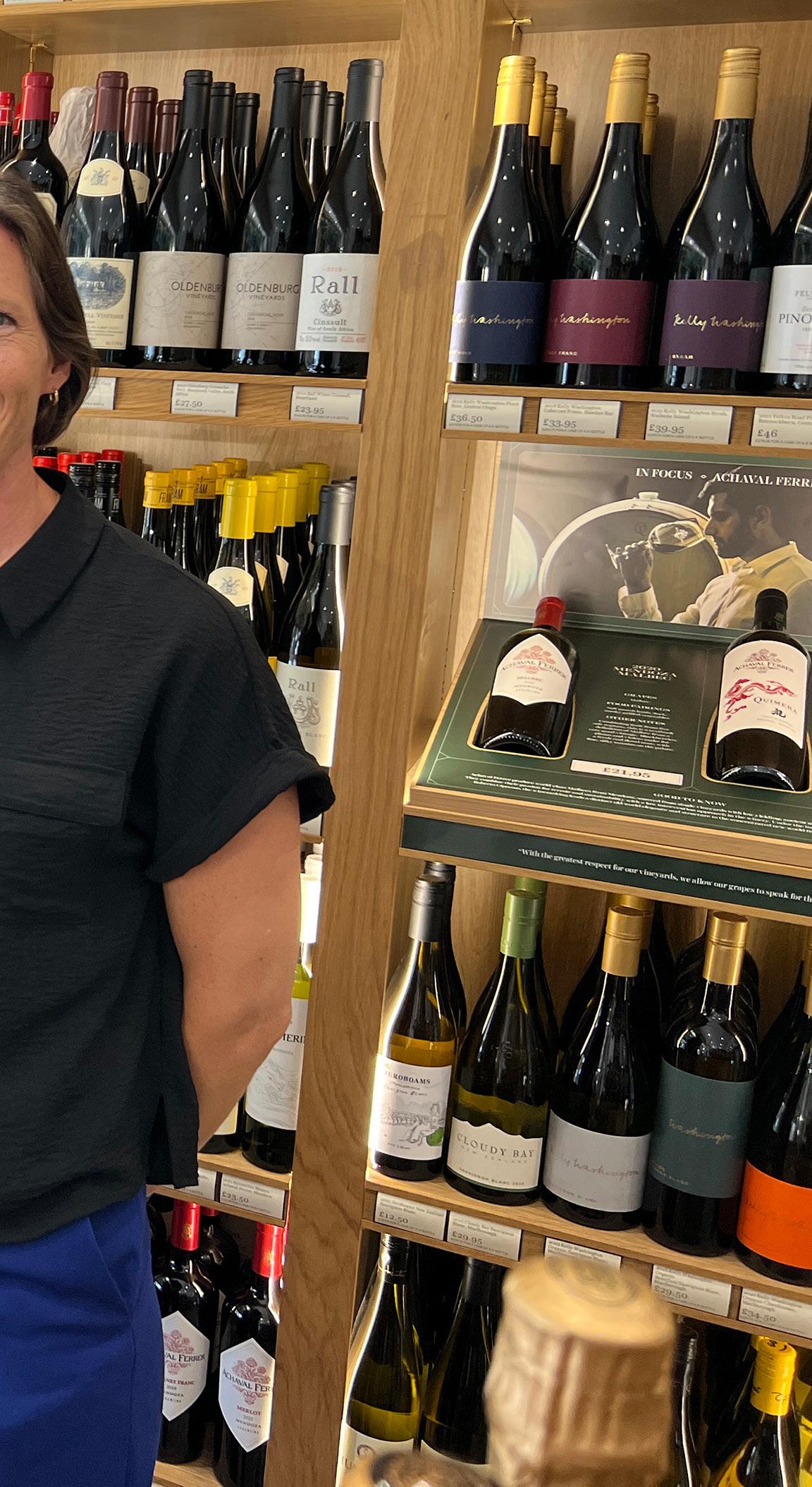
approaches its 40th anniversary, hopes to forge new relationships
the moment around the business advisory platform, which is an idea of getting the industry together and using combined purchasing power to help smaller companies.
“I’d much rather it was a more diverse scene and businesses were standing on their own two feet.”
In its most recent Companies House accounts, for the year to April 2023, Jeroboams made a gross profit of £8.7m
on sales of £35.5m, reinvesting all free cash back into the business and not paying a dividend. But as consumers think harder about discretionary spending, Tipping acknowledges that even Jeroboams must take its share of the pain.
“I think the London wine scene is healthy, and long-term is healthy,” he says.
“What’s difficult at the moment, for us anyway, is not that people coming through the door are not spending money. Actually, if anything, our average spend has gone up. But what we see is there’s fewer people coming through the door.
“I would say people are retreating back to buying wines from supermarkets. With the cost of living, even in these areas, there are people making decisions about where they’re spending their money and how they’re spending it.
“Our very simple reaction to that is, you control what you can control. Lucie [Parker, sales director] has put in some incredible work with the teams in terms of the training and being really clear about what it means when you walk in through the door of a Jeroboams, and what you should expect as a customer.
“It’s relatively easy to get peaks of good experience. It’s hard for it to be consistently high, and that’s what we’ve been working on; making sure the teams are really motivated. We’re giving them more responsibility and taking less central control, so the shops are being run more like an indie.”
In a typical branch, 70% of the wines will be from the core Jeroboams range, with the rest selected by managers from the wider list.
Parker says: “We feel like we are part of the of the local area, and that is a really big part of our ethos. We want to be people’s treasured wine shop.
“There was this article by Mary Portas a few months ago. She was saying, if people are going to shop, they want to go and have an experience that’s enjoyable, but that also gives them something else. You know,
‘We’re giving the teams more responsibility with less central control so the shops are being run more like an indie’
it’s not just a transaction.
“She mentioned specifically that one of her favourite things is going to her local wine shop. Because you have a conversation with somebody. You might have a conversation about wine, or you might not.”
The staff training that Jeroboams is providing goes beyond product knowledge.
“We’ve made some changes to the training already, but we’re about to launch a new training platform that is based online,” says Parker. “We’ve built it with a lady called Lucy [Beckett] from Liquid Education.
“We have a lot of younger people coming through retail. Most of them have some wine knowledge, but not all. So it’s just allowing people to learn from this kind of platform that is relevant to them.
“We realise that the world is changing, and not everybody wants to sit and do WSET. So we’ve created this content where they’ll learn about wine, but they’ll also learn about how to do high-end selling with consumers and tell stories.”
Jeroboams is happy to continue with dedicated off-sales rather than create wine bars on its premises.
“We started as a cheese and wine shop, and more of our shops now have food within them, which is building on that experiential side,” says Tipping. “We’re not going to go down a hybrid route. We feel [with hybrids] there’s often a lack of clarity about what a customer’s walking into, which can be confusing. And more often than not, I see that it’s more of a wine bar than a shop; eventually, that’s the route it goes down. So it’s not right for us.”
‘We share their mindset about exclusivity and we’re well positioned to understand other indies’ demands’
Jeroboams Trade has been “one of the big developments for us as a business over the last few years”, Tipping says.
“The focus historically was more around leisure and travel companies as well as neighbourhood restaurants and goodquality pub groups, those kinds of things. We’ve realised that the range is good. We know customers like the wines.
“We share the mindset that says exclusivity is really important within a region. If we’ve got a wine that suddenly goes into supermarkets, we’ll delist it. We understand that mentality, and we also understand what makes financial sense in terms of having a wine on a shelf, and the margin you need to make. So I think we’re well positioned to understand other indies’ demands.”
Parker adds: “When I joined, the attitude was a little bit ‘we can’t possibly sell to other indies in London, because we are also an indie in London’. My attitude was more like, we know these wines sell.
“There’s a market for them. We’re agents for them, and as long as our pricing allows people to match us and make their margin, there is no problem at all.
“We can offer them some preferential pricing, but also winemaker visits, sample stock, POS material and access to our brand managers.
“They’ll have exclusivity in their region, because we don’t have a sales team north of London. So rather than building our own sales team and spreading ourselves out that way, we want to work with these regional people, and form those partnerships.”
The range is strongest in the new world,

and Italy, and is likely to see more evolution in the coming years, with regional France identified as an area where improvement, and growth, is possible.
Parker says: “As time goes on, anything that we share as an agency we’re trying to go exclusive on or find something [else] that’s ours and only ours. In five years, I’d like to see that the range has got a bit bigger so that we can offer more to our customers, whether they be trade or retail.”
Jeroboams is still owned by Switzerland-based Peter Rich via its parent company Holland Trading, incorporated in Bermuda. Both he and his son, Ed, are said to take a keen interest in the business.
“We see Ed and Peter every month and they’re very much involved,” says Tipping. “I mean, the reason we’re talking about things like giving control to the shop managers is because we’re looking long-
term. We’re making decisions in a difficult market and we want to come out stronger.
“If I was having to hit a quarterly target each time, I’d be making different decisions. I’m not. The idea is that we’re going to be here another 40 years, and we’re going to be true to our beginnings.
“My remit from Peter, and indeed from Ed, is really simple: to run a wine merchant they’re proud of. Part of that pride is knowing that their team is well looked after and happy and motivated, as well as in how the shops look and everything else in the business generally.”
Tipping promises new developments to coincide with the 40th anniversary, which are under wraps for now.
“I think the way to describe the company is that we’re restless, we’re keen, we’re enjoying ourselves,” he says. “There’s a great feeling in the company at the moment, and we’re really keen to just continue exploring what’s possible.”


I’m looking for boring stuff to write about. Plastic bags are too interesting

A
Iregularly catch up with the local rag’s “news”. A scan of the top stories over lunch keeps me up to date with the squirrel spotted on the High Street (sadly found deceased a week later) and the latest congestion in the city.
The high drama of our cathedral peregrines earlier this year (lots of murder but sadly not enough of it involving the pesky pigeons) kept things interesting for a few weeks. However, most recently we’ve been enduring letter upon letter about the bus station. Gerald thinks it’s awful, Reginald thinks we’re lucky to even have one.
In the true spirit of my pub friends (this is the same group of friends that set up a research institute whilst – ahem – a couple of pints down) we now have a competition. Between now and the end of the year we’re competing to get the most boring letter published in the paper.
So far, I’m struggling to think of anything sufficiently boring yet relevant enough to get into print. And this is where I thought that I could bore you all instead with my boring (yet important) talk about plastic bags.
I know. I really should get out more. When Covid hit, I used up the last of our plastic bags and refused to buy any more. Customers are expected to bring their own bags or take one of the many empty boxes we have lying around to transport their purchases home. I won’t buy paper bags, because this is the UK, and it tips it down
with depressing regularity.
“How’s that working out for you?” I hear you ask. As with everything, there are always those that stand there saying “I have loads of bags at home” before, in the literal same breath, asking for another to add to their collection. I can only assume that house clearances are now 90% plastic/canvas tote bags that have been thrown under the stairs, never to be used again.
But not here: we’ve got almost as close to plastic-free as we can. Some of it can’t be fixed by me; food packaging is one example, and one of our suppliers still sends food items wrapped in bubble wrap. But we do try to reuse what we can.
I used to put that bubble wrap in outgoing deliveries as extra protection from the loons chucking the wine around, but then I had a complaint from a customer that it’s not 1993 anymore, so why did his delivery contain bubble wrap? There was, unsurprisingly, no response to my explanation that reuse is always better than recycling. This is something that bothers me about my current wine packaging, which is all recycled and recyclable paper/card, but that mass of cardboard just goes straight in the recycling where it’ll cost carbon to then make something else with it.
Back to the bags. I’ve started keeping a couple of canvas bags at the shop, which I lend out to customers on the understanding they are returned to me. I’ve only lost one so far, which isn’t bad. I’m going to get a few marked up properly with return-to details and see how many I have at the end of the year.
Customers are expected to bring their own bags or take one of the many empty boxes we have lying around
I got this idea from Lyme Regis – shout out to The Seriously Good Wine Company who lent me one of their bags. The bags are returnable to any local independent business. I’m hoping that if I can show that my bags find their way back to me I can then get some of our local indies on board – and stop bag mountains taking over our homes.
Cat Brandwood is the owner of Toscanaccio in Winchester
Tomás Muñoz
Viña Errázuriz
Don Maximiano Errázuriz founded Errázuriz in 1870. Today, the tradition of quality lives on with his descendant Eduardo Chadwick who shares his maxim: “From the best land, the best wine”. Tomás joined the winemaking team in 2020 and is now chief winemaker.
What is the most important element in making a premium wine? Is it the vineyard site or what happens to the fruit in the winery?
Terroir is definitely the most important element. It provides the raw material, the grape, and minimal intervention in our winery results in high-end wines. For us, the Aconcagua Valley has always been the terroir where we believe we can produce the best expression of our wines in Chile.
At Errázuriz, we have studied our terroir for a long time, understanding and identifying what we have. We have a solid technical team and have also worked with expert geologists such as Françoise Vannier-Petit.
We also mapped the soils of Don Maximiano Founders’ Reserve to continue refining in pursuit of the highest quality. This amazing work is yielding excellent results harvest after harvest.
Nevertheless, efforts in the winery are as vital as those in the vineyard. This is why we inaugurated the Don Maximiano Icon Winery in 2010, designed for minimal intervention with a gravity-driven winemaking process, among other features.
How would you summarise what the Errázuriz range aims to offer consumers?
Our goal is to be recognised as the leading Chilean winery, setting the standard for quality and image. With over 150 years of history and six generations of winemaking in the Aconcagua Valley, we are pioneers in the region. Today, we offer a complete portfolio of wines which includes premium wines such as the MAX or Aconcagua Costa ranges, as well as high-quality, affordable options like our Estate range, to our most iconic wines like Don Maximiano Founder’s Reserve and Las Pizarras, acclaimed by international critics.
Does the Aconcagua Valley feel like a place where a winemaker can achieve the best expression of the grapes they work with?
One of the great advantages of the Aconcagua Valley is its transverse structure, which allows for exceptional diversity in the expression of grape varieties. Being oriented transversely, the valley encompasses a range of microclimates and soils that vary significantly from the coast to the interior.




For more information visit hatchmansfield. com Sponsored feature
In the coastal area, the climate influenced by the Pacific Ocean is cooler and more humid, creating ideal conditions for varieties that benefit from higher acidity and slower ripening, such as Sauvignon Blanc, Chardonnay and Pinot Noir. These wines typically exhibit freshness, minerality and vibrant acidity that reflects the impact of the sea. As we move inland within the valley, the climate becomes warmer and drier, with a greater temperature variation between day and night. These conditions are optimal for varieties that require extended ripening and complexity, like Carmenère, Cabernet Sauvignon and Syrah. Here, the wines tend to have more body, structure and depth, with intense and concentrated flavours.
This variation within the same valley allows us to explore and experiment with a wide range of wine styles and profiles, making the most of the unique characteristics of each area.
Ultimately, the Aconcagua Valley offers a rich palette of possibilities to express the diversity and complexity achievable with different varieties. Of course, as with every terroir there are challenges to face, depending on the year, so it’s crucial to have a precise management of the vineyard.
What are your three key wines in the UK?
Don Maximiano Founders’ Reserve (RRP £70.85) is the flagship wine of Viña Errázuriz, representing both our heritage and our dedication to producing the finest Cabernet Sauvignon-based wine. It embodies the essence of our terroir. We’ve made over 40 vintages of this Chilean icon and it represents our legacy of knowledge and expertise in the Aconcagua Valley
We also produce exceptional wines in Aconcagua Costa, situated just 10 km from the Pacific Ocean. The schist soil imparts elegance and verticality to our Aconcagua Costa Chardonnay (RRP £19), for example, resulting in distinct minerality, freshness and tension on the palate. Our Aconcagua Costa Pinot Noir (RRP £19), from the same cool-climate vineyard, is bright and complex with a great persistence and verticality.
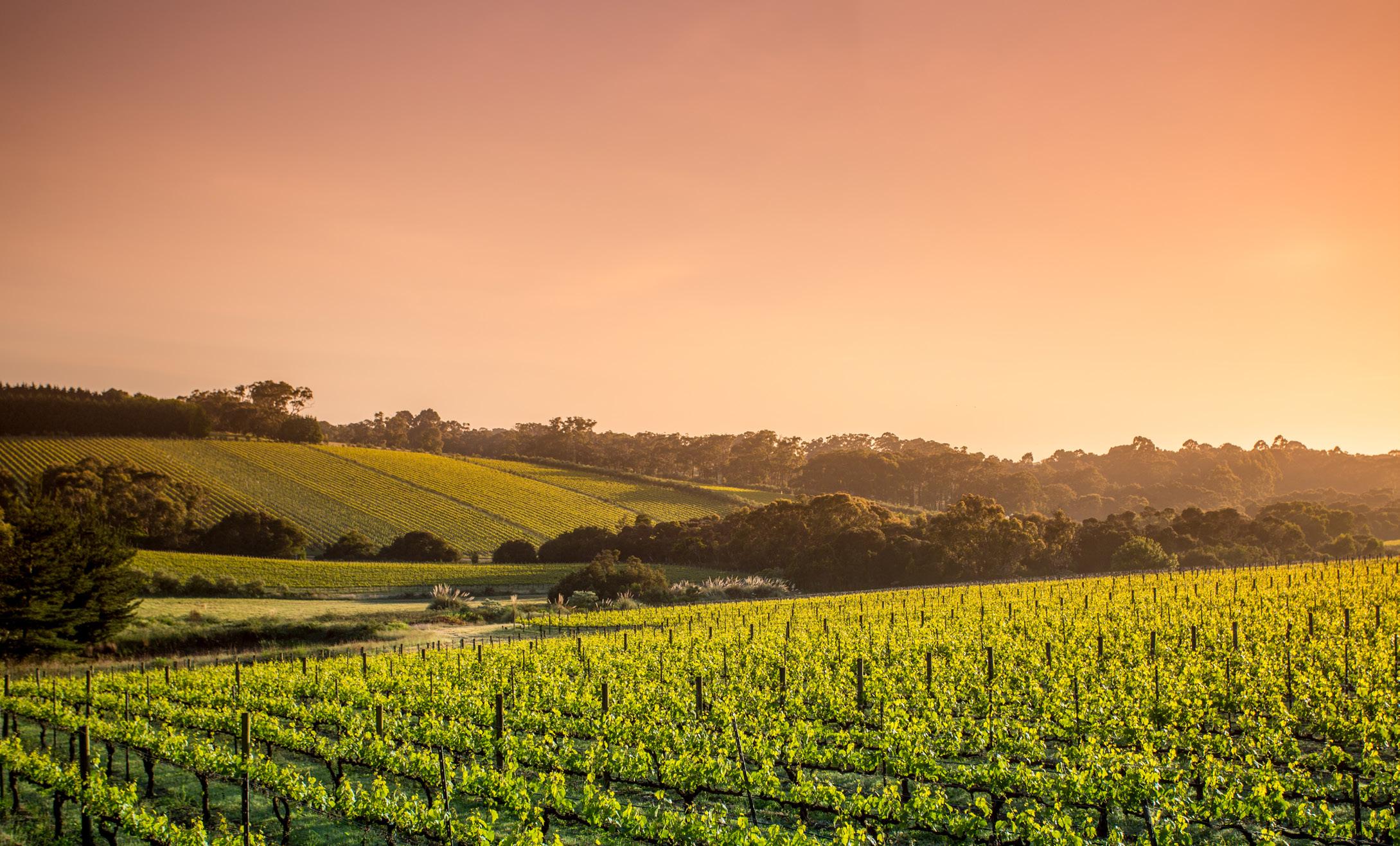
Joe Wadsack leads a memorable al fresco masterclass on London’s South Bank, giving indies a sense of why he finds Australia’s most varied winemaking state so exciting and compelling
Joe Wadsack has recently returned from a nine-day trip to Victoria, exploring how this dynamic winemaking hub has evolved in the 10-year gap since his last visit.
“From my first visit in 1994, I’ve seen the region grow into the modern, sophisticated operation we know today,” he says. On a sunny September afternoon, his extensive knowledge and experience of Victoria is shared with indies over a five-course barbecue and masterclass featuring 16 wines.
To open, Joe jokes that it is his contractual obligation to run the group through Victoria’s 21 subregions in just 10 minutes, an impossible task for such
a multi-faceted region. Joe adds some interesting insight into Victoria’s rich winemaking history, which dates as

far back as the 1850s gold rush. Today, Victoria has the highest concentration of independent family producers in the country.
Despite being Australia’s smallest state, the sheer diversity of the region is unparalleled. The variation in soils, climate, landscape and resulting wine styles is vast.
The first flight is of three ageable nonChardonnay whites paired with ajoblanco, smoked almonds and tenderstem broccoli. It starts with Gracia 2019 by Vinea Marson, an eclectic blend of Mediterranean varieties. Joe says the wine is “inspired by recent work in Friuli, to make unoaked white wine that can age and evolve”.
It’s followed by Tahbilk Marsanne 2018
from Nagambie Lakes. “This wine will keep for 20 years and is just as iconic and classic as Penfold’s offerings, but less than half the price,” Joe says.
The third wine is the historic Yeringberg Marsanne/Roussanne 2018 from Yarra Valley. Joe says: “If you were to pick 10 wineries that have established Australia into what it is today, Yeringberg would be one of them.”
The second flight is focused on the different approaches to Chardonnay from Yarra Valley, Victoria’s oldest winemaking region. Joe explains: “Over many years, the style of Chardonnay in cool-climate Australia has gone from one extreme to another, following trends and fashion, but now we are seeing most producers harnessing their style and sticking to it.”
First up is Yering Station 2021, a wine that Joe observes “holds onto the idea that no malolactic fermentation is the way for Chardonnay, a lean expression that is here to stay, but you either love it or you don’t.”
Next is De Bortoli 2021. “This is one of my favourite Chardonnays in Australia,” Joe says, maintaining that “single-site selection lends typicity, identity and swagger to the wine”.
Last is Rob Dolan White Label 2022. “Rob Dolan doesn’t believe in giving people a small lunch,” Joe says. “This is honest, fullthrottle Chardonnay at a great price.”
Despite the stylistic differences, every wine pairs wonderfully with the course of chalk stream salmon, squid ink tartare sauce, samphire and dill.
Our third flight focuses on coastal vs continental climates for Pinot Noir. “You could certainly dedicate a tasting purely to Pinot Noir from Victoria because there’s so many facets of it,” Joe says.
We start with Fowles Are You Game? Pinot Noir 2021 from Strathbogie Ranges. Joe believes the subregion has the potential for cru-quality Gamay. “When the manbuns and sleeve tattoos of Melbourne’s hipster scene start to push for Gamay, we will
be talking about it as a major variety,” he predicts.
Massale Variety Pinot Noir 2022 from Mornington Peninsula shows that fine Pinot Noir is all about the expression of one place, and Kooyong’s entry-level example rewards you with access to that club for a very modest outlay.
Next is a Mediterranean-inspired curveball from King Valley, Pizzini Pietra Rossa Sangiovese 2021. Joe sets out the huge task that faces producers who attempt to make great Sangiovese outside of Italy, describing it as a “fight”. But Pizzini is making authentic, savoury wines that are unmistakably Sangiovese.
The fourth course is based around new Victoria classics, accompanied by ras al hanout lamb shish with a fermented green chilli sauce. We begin with Tar & Roses The Fog Nebbiolo 2022 from Heathcote. “This is really impressive in both style and price point,” Joe says, comparing it to Langhe Rosso.
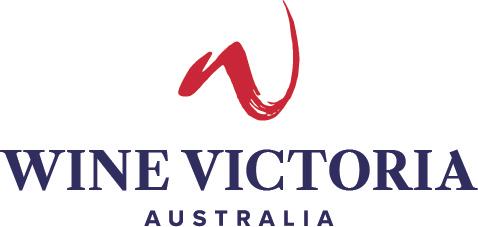
Next, and widely viewed as the wine of the tasting, is Castagna Genesis Beechworth Syrah 2018. “This is one of the best reds I’ve had this year,” Joe says. Munari’s Heathcote Shiraz follows. Joe says: “This is a really good example of Heathcote Shiraz; a wonderfully dry, granite-layered seam of minerality runs right through the wine.”
Next is Patricia Cabernet Sauvignon 2016 by Brown Brothers. It comes from a single high-altitude site in King Valley capable of high quality wines.
The last flight is a sugar spiking indulgence of passionfruit s’mores paired with three Rutherglen stickies. Joe, eager to discuss a subject dear to his heart, says “these three stickies are lyrical, vinous and complex”. The flight includes Stanton & Killeen’s Classic and Reserve NV Muscat and Campbells Rutherglen NV Topaque. A decadent end to a memorable masterclass.
Visit winevictoria.org.au
Penny Edwards
Cellar Door Wines, St Albans
I had no idea that there was such high-quality fine wine coming out of Victoria. I was very impressed with the range of styles and grape varieties. I will certainly be listing more Victoria wine.
John Kernaghan
Liquorice, Shenfield, Essex
I found the event very rewarding, especially Joe’s knowledge and delivery. Australia though, is a difficult sell. The session highlights that even within one region there are so many specific subregions championing one or two key varietals. From that perspective the question therefore is, how do we get the message across?
Louise Oliver
Seven Cellars, Brighton

Victoria is the perfect wine lovers’ region. I think Australia has let the grass grow under its feet for too long, losing ground in the UK. So I am really pleased that with events like this, they are trying to rebuild themselves with UK merchants whilst also showing how food-friendly their wines are. I’ve already ordered the Castagna Syrah – a damn near perfect wine.

not a fine wine film, but a film about wine that’s mostly fine
The movie Widow Clicquot hit UK screens at a time when people may have been looking for a period drama as a form of escapism.
I’m rather keen on all things French, particularly film, so ahead of this release I brushed up on my language skills. I already know all the winemaking vernacular: rosé, terroir, that kind of thing, and was confident I would be able to watch without making use of the subtitles. This I was able to achieve, as there weren’t any. Everyone speaks English. Not only that, everyone speaks with an English accent.
There is a view that English-speaking audiences are put off from watching subtitled films. To maximise commercial success, using a US/UK cast and English language will broaden the appeal, and I suspect many Champagne houses would
support this approach. I certainly welcome the use of English accents and hope other films will follow: if I’m watching a film set in France with English dialogue, I don’t need the actors to speak in a French accent. Widow Clicquot is played by Haley Bennett. She portrays the French character with an English accent and, given she grew up in Florida, it’s perfectly fine.
Now, what really matters to you as a wine industry specialist are the wine references. We’re going to have to allow for artistic licence, aren’t we? Well, actually, no. The producers have done a pretty good job here. The script can be a bit schmaltzy: I refer to early monotone voiceovers and references to Voltaire and have to admit after the first couple of scenes, I was starting to become fearful of what was to come.

Some welcome respite from dimly lit rooms for Barbe-Nicole
The first wine description comes when François Clicquot and a heavily pregnant Barbe-Nicole lie in bed sampling wines, which we’ve all done, haven’t we? He asks what she smells: “Floral. Like our rose garden in June after a rain shower.” There is a long pause whilst he is presumably thinking she has a lot to learn, but she’s not done. “And burning leaves, and twigs.”
She doesn’t say if they’re wet leaves or not, but her reference to twigs could suggest to the informed wine industry expert that she has identified whole bunches in the winemaking process. She might just know her stuff. However, any subsequent discussions about blending are abruptly brought to a close as gloomy men dressed in black lurk around equally gloomy rooms and talk very seriously about things that they think are beyond the understanding of a woman.
The real theme of this film centres on inequality and injustice through the struggle of a woman trying to survive in a male-dominated world. From here on in, there’s little wine talk. We continue through a dual time process: flashbacks of François talking romantic gibberish and rolling around in the mud, then switching to the present as the newly widowed Barbe-Nicole has to meet a boring clerk from accounts in yet another dimly lit room because back then candles were hard to come by and so rooms were dimly lit. We’re being authentic.
Adecade or so ago there were remakes of Wuthering Heights and Jane Eyre that trundled along with long shots of the moors, or a closeup of a raindrop. Both received a degree of critical acclaim but were ultimately lost in time as audiences forgot they existed. Widow Clicquot shares the artistic style of those productions. We move at a pace slow enough to evoke life in the early 20th century, the sense of loss and loneliness conveyed through darkly lit and desaturated production style. Everything works to a satisfactory level. The script is fine, the acting is fine. It’s all fine.
The wine references are passable, yet barely memorable. But that may be the most damning verdict: barely memorable.
The Burgundy producer expects great things from its recently-acquired vineyards in Mercurey and Rully. Managing director Vincent Avenel explains why. In association with Mentzendorff
It’s natural for Burgundy lovers to fixate on the Côte de Beaune and Côte de Nuits. But there’s another part of the region that is rightly starting to claim its share of the limelight.
The Côte Chalonnaise, just south of the Côte d’Or, includes the Givry, Mercurey, Montagny and Rully appellations. When in 2023 Domaine Chanson – one of Burgundy’s oldest producers – bought Chalonnaise producer Château d’Etroyes and its 45 hectares of vineyards, it was a big deal in every sense.
its annual crush. That’s sensible business at a time when climate change makes yields, and prices, hard to predict.
“We didn’t buy it for the brand, we didn’t buy it for the distribution – it was really for the land and for producing Pinot Noir and Chardonnay fruit,” Vincent says. Some of the vineyards needed a little Chanson love, and the viticultural team have been busy replanting and repairing where necessary.

With the purchase, Chanson added some prized Mercurey and Rully fruit to its production – something that MD Vincent Avenel, who spent much of his early career in the Côte de Beaune and Côte Chalonnaise, was excited about.
It also meant that Chanson has gone from a business producing just 25% of its own grapes to one that now farms 50% of
Chanson Rully 2022
But fundamentally, the vines were in good shape and the wines they produce a good fit for the business.
“There were originally seven people in those vineyards; now there are 15 people,” Vincent says. “They had three tractors; now we have five tractors, because we really have to focus on the vineyards – that’s the key. It sounds obvious but sometimes people forget about it.
“Now we’re really focusing on the vineyard, taking care of it, renewing it,
“What I love with this one is that it’s an archetypal style of Burgundy that people usually expect, with apricot, peach, quite exotic fruit, but with also a light nuttiness. There’s a light toast because we use a bit of new oak. When you taste those wines, you are definitely in in Burgundy. It’s a wine with a little bit of opulence and richness.”
Chanson Mercurey 2022
“I don’t like to generalise, but Mercurey wines have usually a lot of fruit and a good grip. It’s not the thin, ethereal type of Pinot. You have flesh and a good structure, but not tannins that are harsh or unpleasant; tannins that give the wine a presence on the palate and the finish. So a wine that gives pleasure but is also serious, not just the easy-drinking Pinot Noir. And that’s what I love. You can surprise connoisseurs with a good Mercurey.”
Chanson Beaune Clos des Fèves Monopole 1er Cru 2020
“This is our iconic appellation, because Clos des Fèves is a monopole. If you look in in all the rankings from the 19th century it has always been considered to be tête de cuvée. It has always been considered to be special terroir. It’s extremely well located. You’re not too high, not too low. You have this balance between the clay and the limestone. You have the right temperature, the right drainage. It’s almost as if it was a Grand Cru location because it’s in the middle of the middle. It is elegant but also has muscles and power. You have a lot of complexity, a lot of finesse. At first it’s very delicate on the palate and then it grows and has very long length.”
making it organic and we’ll see the results in eight to 10 years.”
So how would Vincent sum up the appeal of Côte Chalonnaise wines?
“Well, they are very comparable to Côte de Beaune and Côte de Nuits, honestly. They represent good value for money just because they are less famous.
“For those who want to discover a little bit, to scratch the surface of Burgundy and to go off the beaten path, the wines are amazing. We did a lot of blind tasting with Côte de Beaune, Côte de Nuits and Côte Chalonnaise wines and I can tell you sometimes you can be surprised if you haven’t seen the label.”
Vincent acknowledges that, when it comes to ageing potential and complexity, Côte d’Or wines have few rivals in Burgundy or indeed the world. But he argues that a good Côte Chalonnaise wine can deliver pleasure at five to 10 years old, and still have ageing potential.
“Depending on who produces them, the wines can be amazing,” he says.



In 1994 it became clear that Chilean Merlot wasn’t quite what people thought it was. Half of it wasn’t Merlot at all. It was Carménère.
Although a fellow Bordeaux variety, Carménère is a different beast altogether. It ripens more slowly than Merlot and is typically picked four or five weeks later. No wonder so much supposed Chilean Merlot had emerged rather thin and green-tasting – especially when allowed to over-crop in the Central Valley – before French ampelographer Jean-Michel Boursiquot sorted out the confusion.
The Silva family, whose ancestors arrived in the Colchagua Valley from France in the late 19th century, originally planted all their grapes around their winery. It was only much later, under the stewardship of current managing director Mario Pablo Silva, that the family began bottling wines under the Casa Silva name and exploring terroirs that brought out the best in each individual variety.
In 1998, Casa Silva took a giant leap forward in its Carménère production with its investment in Los Lingues, an estate which felt like it had been tailormade for the variety. Situated on the foothills of the Andes in the Colchagua Valley, it occupies a wind corridor that keeps grapes at consistent temperatures during the day but with the cooler nights that Carménère
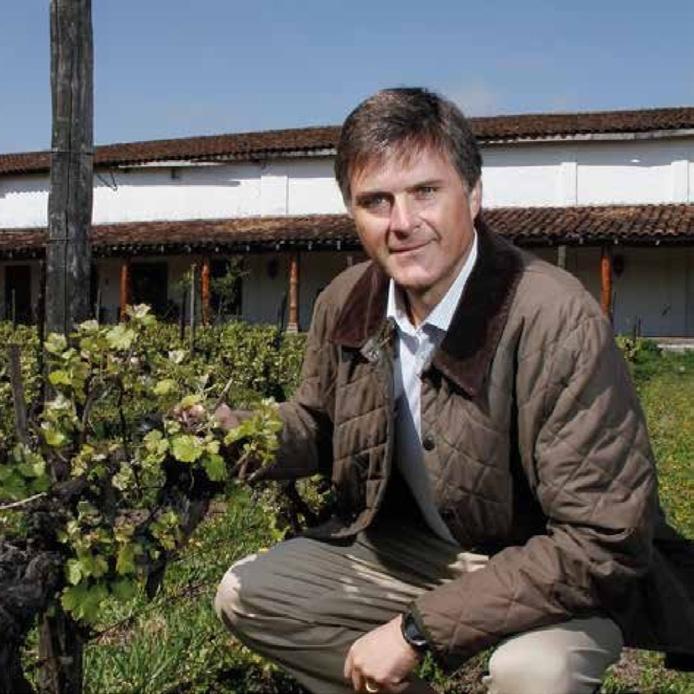

It’s a grape variety that once caused confusion in Chile, but now it’s associated with the country’s most premium wines.
Viña Casa Silva, which has won more awards for Carménère wines than any producer on the planet, presented six examples for a group of indies
craves. The alluvial soils drain well and are low in organic matter.
So well did Los Lingues lend itself to Carménère that it has since been recognised as a DO. Casa Silva has become used to seeing its efforts rewarded: it’s the most award-winning Carménère producer in the world, with more than 350 distinctions in competitions in the past 10 years, and has won Chile’s Best Carménère in the World title four times.
Since Awin Barratt Siegel’s acquisition of Jackson Nugent Vintners earlier this year, Casa Silva’s range – which also includes wines made from Sauvignon Blanc, Sauvignon Gris, Cabernet Sauvignon, Syrah and Petit Verdot, as well as sparkling wines
– has tapped into wider distribution in the independent trade.
But at a tutored tasting for a group of indies, the focus was very much on Carménère, both as a blending component and as a single varietal.
Produced in association with Viña Casa Silva and Awin Barratt Siegel Wine Agencies
For more information visit abs.wine or casasilva.cl
Casa Silva Coleccíon Cabernet Sauvignon-Carménère 2023
This entry-level blend retails for around £12 and wowed the group. Mario Pablo says: “The idea is very simple: to have a very nice, good colour and medium body; to be serious, but not too serious; not too sweet. It’s a different style of entry-level Chilean wine with a little more complexity than you normally find in the market.” Much of that complexity is down to the use of Carménère, but the gentle oak influence on 20% of the blend is also a factor.

Casa Silva Coleccíon Carménère 2023
Mario Pablo says 25% of the wine is aged in French oak barrels and 75% in stainless steel tanks. The Carménère is juicy, with just a touch of moderating greenness, and very soft tannins – “always a plus for the UK market,” as ABS boss Elliot Awin observes.
“Our aim is always looking to be in the middle of the old world style and the new world,” says Mario Pablo. “For me the old world is sometimes too acidic and too oaky. Australian and American wines can sometimes be too sweet. We want fruit, but also complexity.” He says Carménère is a versatile wine with food, and pairs beautifully with Indian curries. It retails for £12-£13.

Casa Silva Terroir de Familia DO Los Lingues Carménère 2023
In Chile, the word “reserva” doesn’t necessarily signify oak ageing and can cause confusion. That’s why Casa Silva prefers to use the Terroir de Familia label though, as Mario Pablo says, “this is a real reserva”. Seventy per cent of the wine, sourced from the older as well as newer parts of Los Lingues, ages in second and third-use French oak barrels for six to eight months. Cold maceration before fermentation helps to moderate the tannin, making this wine, retailing at £15, as soft and approachable as any in the Casa Silva range.

Casa Silva Gran Terroir de Los Andes DO Los Lingues Carménère 2021

“The most important factor in our wine is the terroir,” says Mario Pablo. “This is from the older part of the Los Lingues estate. It’s the most successful Carménère wine in Chile in the on-trade. It has softness, a touch of sweetness, some cinnamon and a touch of coffee. The oak is very well integrated. I think it’s a very good example of Carménère.” The wine, retailing for £30, is made to be enjoyed on release, but Mario Pablo says he has bottles in his cellar from 2000 and 2001 which are still showing well.
Casa Silva S7 Carménère 2022, DO Los Lingues 2022

This spicy and complex Carménère is sourced from various blocks – each just a fifth of a hectare – on the Los Lingues estate, selected for their individual character. The juice from each is vinified separately, in purpose-made 500-litre barrels, before blending. As Mario Pablo explains, this is to allow micro-oxygenation rather than give any wood character. He smiles as he tastes it. “This is a Carménère,” he says. “It’s a very successful wine for us.” In the UK, it’s on sale for £28.
Casa Silva Microterroir Carménère, DO Los Lingues 2019
“This wine is a little different in terms of the concentration of the grapes,” says Mario Pablo. “Here we select the best of the best from Los Lingues. It spends 15 months in French oak and we normally keep it for two years before release.”

Harvesting takes place relatively early, which helps gives the wine its elegance and freshness. Retailing for £38, it has subtle vanilla and a coffee-like note on the finish.
Mario Pablo says: “You can drink it now if you want, but you can keep it for 15 to 20 years and decide when you want to drink it.” Its red cherry flavours will slowly give way to toasty, cinnamon accents.
Peter Foley
Village Wines, Bexley
Carménère is already proving to be Chile’s USP and, because there are so many good examples, that helps with the perception of Chilean winemaking overall. I love Casa Silva’s passion, the commitment to family, the community and the land. It’s great how committed they are to making the absolute best wine they can, drilling right down to small changes in the terroir between interconnected parcels of land. I also think the fact they have invested in DNA sequencing to find the best clones is really interesting.
Rebecca Sunter Symposium, east London
My sense is that there’s an untapped market of consumers who have yet to try this grape, or at least at this kind of quality. Independent merchants are well placed in the UK to introduce customers to affordable, high quality Chilean Carménère. I think it holds appeal for a range of tastes, from fans of Argentinian Malbec to consumers who usually pick old world reds.
I particularly like the ethos of Casa Silva when it comes to sustainability. The are clearly invested in, and passionate about, the sustainable approach they take when it comes to both their winemaking method and their responsibilities toward their workforce and wider community.
John Barnes
The Flying Cork, Bedford
It was a great selection of wines from the entry-level Carménère/Cabernet right through to the Microterroir, which gave a real experience of what high-end Carménère can be. It was fascinating to taste the range and see how the quality gets better and better.
I think Carménère needs to be known more, especially to Malbec lovers who want to try something along similar lines that can match and even surpass some of the top Malbec producers. It’s a hand-sell but you can sell with confidence knowing you’re getting great value for money with some very elegant wines. Definitely a grape to look out for and it has the potential to become a firm favourite among “big red” drinkers.
Lovely wines, great company and people with a strong ethos on sustainability. We will be sure to stock the full range.


Even the creator of the world’s strongest brew isn’t sure which category it’s in
I’ve been going back to basics recently to ponder the question “what is beer?”
The trigger was an online mini media storm about Beithir Fire, made by Edinburgh’s 88 Brewery, which is on general sale through just two online retailers in the UK.
Hard to Find Whisky and Drink Supermarket both bill the 75% abv concoction as the “world’s strongest beer”.
Though it’s been around since 2021, social media attention has only recently been gathering pace, aided by a feature in The Sun last month.
Features writer Tom Bryden sampled the brew in a video in which he said: “For a drink so strong it’s got a good taste to it. It goes down smoothly ... it’s a ‘yes’ from me.”
Curiously, the accompanying text took a less gung-ho stance: “My nostrils felt like someone had stuck a match up them … I felt like I’d swallowed a wasp … It stung, it burned, and it forced my face into all sorts of strange positions as I felt it go down inside.”
The claim to be the world’s strongest beer would almost certainly hold water – though Guinness World Records lists no official record – if we could be certain that’s it’s a beer at all.
“My nostrils felt like someone had stuck a match up them. I felt like I’d swallowed a wasp. It’s a ‘yes’ from me”
And if you’re thinking that’s a cynical journo talking, 88 Brewery’s chief executive Andrew Chapman has doubts of his own when I speak to him, despite the company’s website also carrying the world’s strongest beer claim.
“We’re skirting with the ‘is it a beer?’ dilemma,” he says. “I flip-flop on that question all the time.”
Beithir Fire does begin life as an 18% abv beer, into which new-make grain spirit is blended. It then rests for several months and passes three times through a six-layer filter to remove unwanted sugars and impurities. The resulting bottled product is around 70:30 spirit to beer and more spirit than beer in character.
Each bottle carries a neck-tag warning purchasers not to consume more than 35ml in a single sitting and online sales are limited to a single bottle at a time.
“Distillation is involved, so by the letter of the law it’s not a beer,” says Chapman. “I’d call it a speciality spirit produced from a beer base.”
Beithir Fire and the 88 Brewery are part of the Mayfair Brands stable, a company whose main product is Mayfair gin, and which shortly aims to launch single malts under the labels Dalmahoy and Loch Ness.
The 88 Brewery “beer” was initially made at the request of a distributor in China and, says Chapman, “wasn’t intended to have become as famous or infamous as it has”.
On launch it was liable to spirits duty when sold in the UK, and the rate increased with the tax regime change in 2023, making wide distribution unfeasible.
However, small-order sizes are its natural territory and Chapman says it wouldn’t be a complete waste of time for fearless independents getting in touch if they’re interested in investing in some stock. Hard to Find Whisky currently sells it at £45.95 for a 33cl bottle and Drink Supermarket at £37.99.
“If someone comes in and orders 30 cases, which is 360 bottles, the duty we’d have to pay as soon as the goods leave the warehouse makes it difficult for cash flow, so we don’t actively push the brand in the UK that much,” Chapman says.
“But we’ve got one or two bars that like to stock it and they buy a case from us at a time, and that’s fine.”
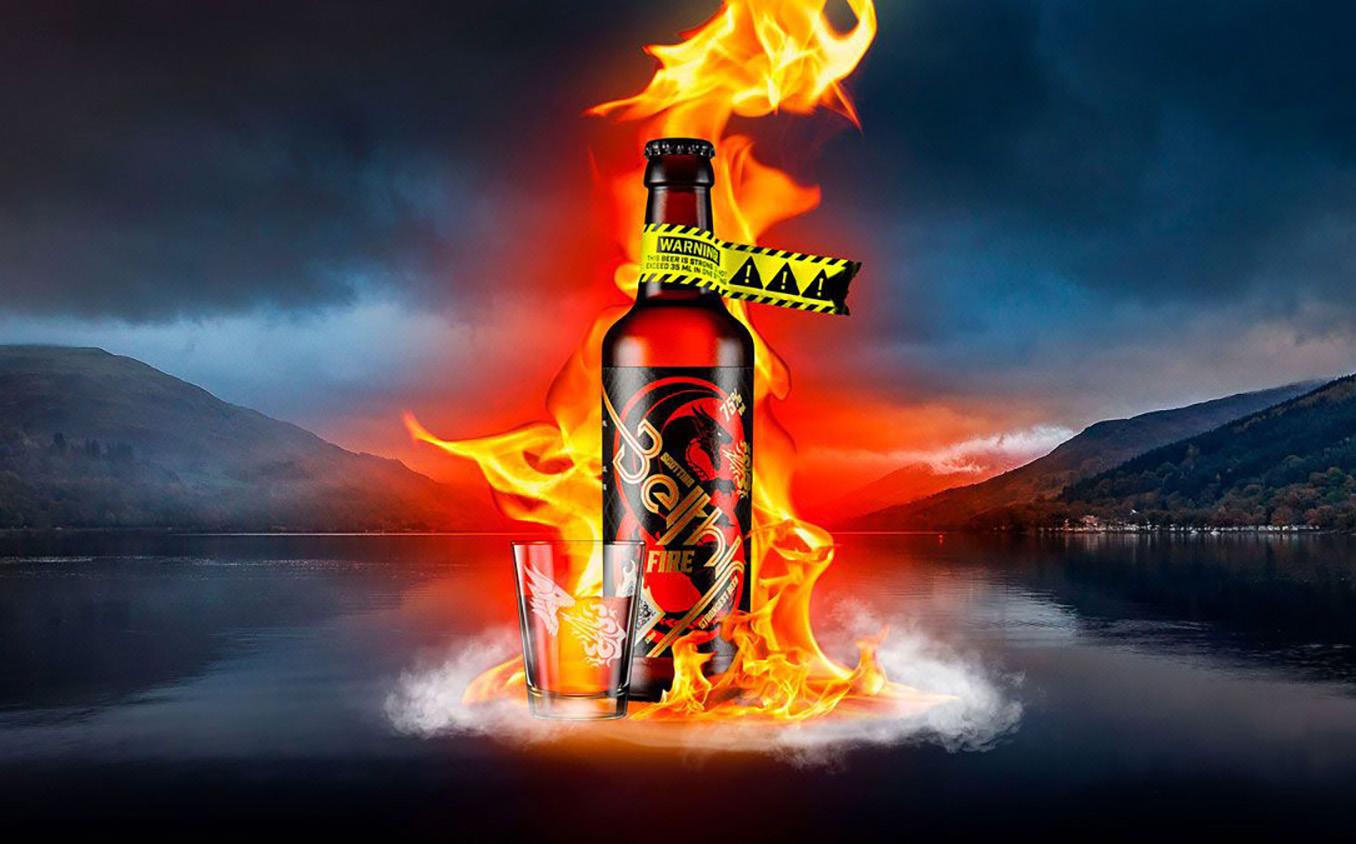
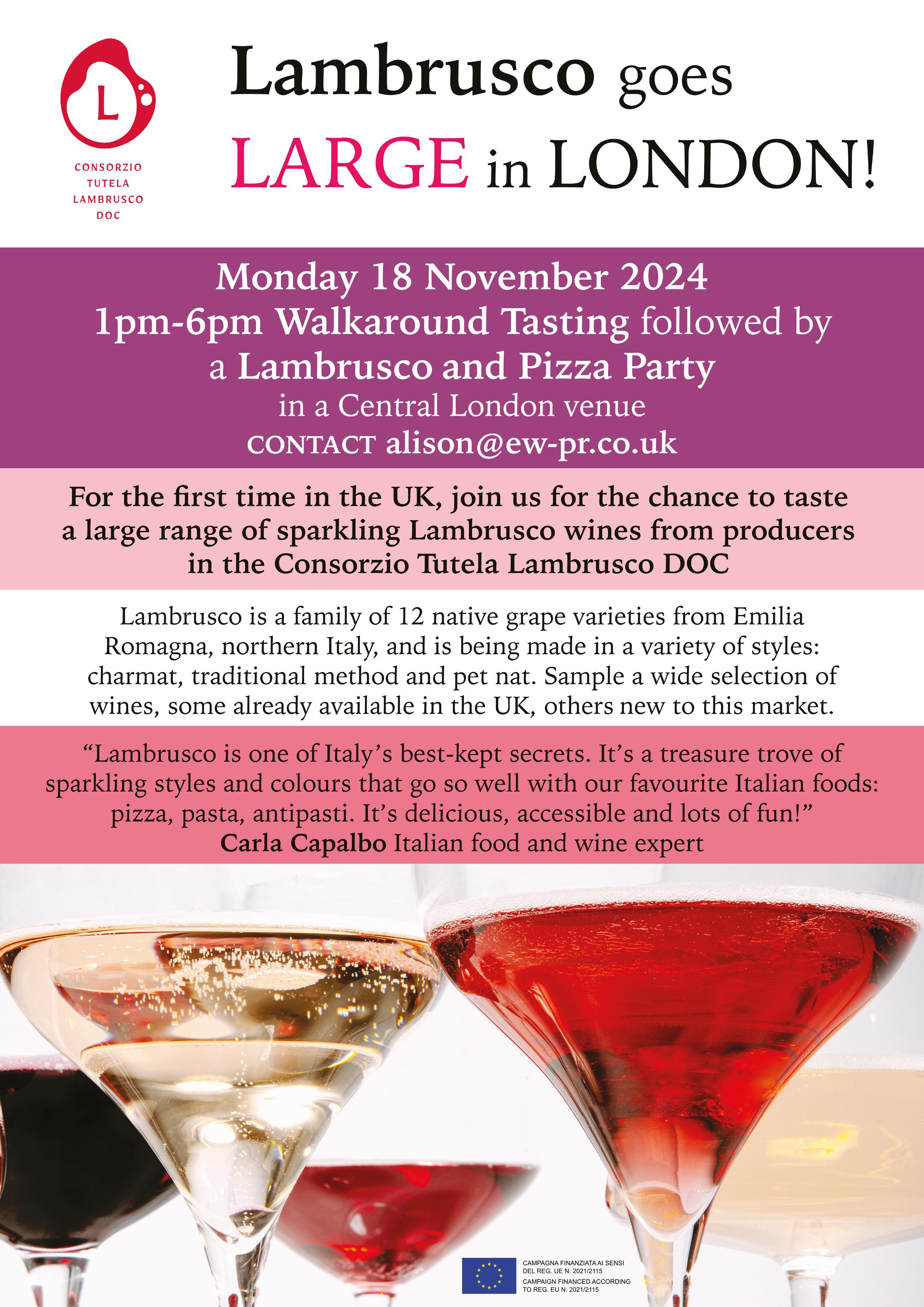
Kerb, Manchester
How big is your Spanish range?
Off the top of my head, we have around seven of each colour or style – red, white, sparkling, rosé and orange: it’s about 35 to 40 in total.
How does that break down in terms of regions and grape varieties? What do you find is doing well for you?
The Catalan wines are doing really well, particularly the orange and the sparkling. Xarel·lo seems like a pretty easy-going grape for people starting on orange wine: it makes a lighter sort of style. We have a Catalan range, Metamòrphika, and they are aged in clay pots, all colours, and they sell themselves because of the packaging in clay bottles.
We have also done well with a Basque wine, a Txacolí from Zudugarai. We did a Txacolí party where we poured it from a great height and it did really well. We get it from Modest Merchant. They do a lot of Spanish wine – we buy quite a lot of Manchuela [Parajes del Valle] from them too. Another importer we use, Otros Vinos, does pretty much an entire list of Spanish wine, mainly Catalan.
It's interesting that you are doing so well with Basque and Catalan wines. Do you think your customers see those places as distinct, both culturally and from a wine perspective?
Culturally, yes they do see Catalonia and the Basque Country as different – they do know about that. But with wine, it’s a bit different. When it comes to Xarel·lo, for example, I feel like as soon as you tell people that it’s the same grape they use to make Cava, it sometimes does put them off. I guess people who don’t work in the wine industry, or who haven’t studied wine, aren’t going to be familiar with the different regions and grape varieties.
But we’re a weird one, because people don’t come in to us looking for a region, they come in for natural wines. We only sell natural wines, and natural wine shops are a lot less common – you can’t get natural wines in a supermarket. So people don’t come in looking for appellations, and that’s because, for whatever reason – either financial or because they
don’t follow the rules – a lot of them [natural wine producers] don’t take part in appellations. Around Christmas time I do try to stock a Rioja, but just one at a time.
Spain does seem to have quite a big natural wine scene. Is that something you find, too?
Spain is quite strong in natural wine, yes. I went to Catalonia to visit some of our producers, including a producer called Partida Creus in Penedès, who are working with regional varieties like Trepat and Sumoll. In Priorat, it was really nice to see the landscape, which is very beautiful. We went to see [Peter] Hodgkinson, an Englishman who makes wine out there, and who has the most beautiful house I’ve ever seen. You start to realise that, because it’s lovely and warm there, you can make natural wine much more easily – there’s no rot to deal

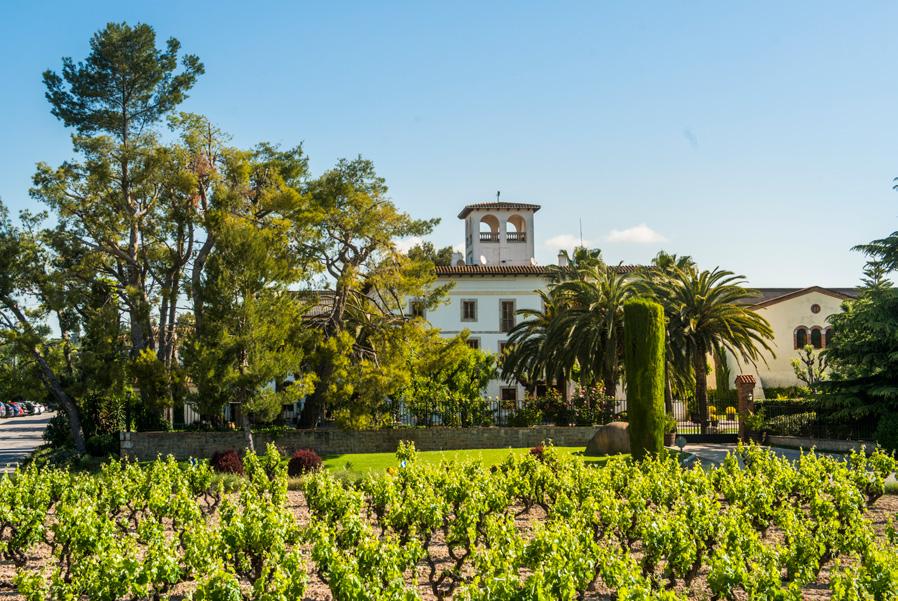
Vallformosa is the fourth biggest Cava producer in Spain, and the first Spanish winery to achieve B Corp certification. Run by pioneering CEO Marta Vidal, it’s working with its 400+ growers to ensure the whole business is focused on driving a sustainable agenda.
The winery also produces a range of still wines from top DOs across Spain including Rioja, Montsant and Terra Alta, and has been at the forefront of innovation in the no and low-alcohol sector. Its portfolio also includes Antich vermouth, a brand with over 100 years of history, known as the first vermouth of Barcelona.
Marta Vidal explains more about the B Corp process – and how it all comes down to teamwork.
What made B Corp a priority for you?
The B Corp certification is holistic in the sense that it covers sustainability but also social and economic aspects of the business, and this was important for us. It is unique in this aspect. As 80% of our current business is international, we were also keen to work on a globally-recognised certification that those consumers would understand.
Did you have to make a lot of changes to the business or put in more investment to complete the process?
We did the B Impact Assessment in July 2023 and received a very good score from the start, so we decided to go through the evaluation process relatively quickly. We didn’t want to do the certification for the sake of it – it had to come from a desire to improve. Between September and December 2023 we worked on a number of quick wins so that we were in a place to achieve certification in spring 2024. We were lucky in that we did not have to invest heavily to reach this point.
What was the most challenging part of preparing for the certification?
It was challenging to gather information from different parts of the business. For the most part, we had all of the elements in place, but we needed to document everything.
It was also difficult to deal with an evaluation process that is not specific to the wine industry and to do this online rather than face to face. We are very used to audits where the auditor comes to the winery and we show them all of the elements of the business, but this was very different. Our director of communications was the person in charge of the whole project as it needed this skillset.
Was it difficult to explain the process to your grape growers, and how involved were they?
It was not easy. The grape growers aren’t close to the process but they have confidence in us. We made sure to explain it in person and it has really helped to bring together the growers as a community, so we are already improving in this regard.
Which areas are you focusing on before recertification in three years? We want to improve in all areas as the main focus for B Corp is a commitment to continuous improvement. We have started to work on our double materiality report and hope to be able to publish a full sustainability report in 2025.
How much are you involved in the B Corp community?
We are just starting out, but we have

already hosted a B Lab team building day at Vallformosa and we are working closely with them. There are around 250 B Corps in Spain now: we were the first winery to gain the certification but we don’t want to be the only one.
What advice would you give to anyone just beginning the B Corp certification process?
It’s very important to have a project manager to ensure changes are implemented and to get the whole team excited and involved. If you don’t have this then it will be impossible to achieve. It needs to be what the whole company wants and for everyone to want to work according to a B Corp mentality.
In association with North South Wines 020 3871 9210 northsouthwines.co.uk

How big is your Spanish range?
We have about 35 – I would say we’re two-thirds red. In white, we sell a lot of Albariño and Verdejo, and small amounts of white Rioja, and we sell Cava quite nicely, and one or two smaller areas. In reds it’s predominantly Rioja, some Ribera del Duero, but not heaps of it; some Garnacha from smaller regions.
What’s your view on Spanish wine as a whole? Do you think it’s heading in the right direction?
I think there’s definitely been an improvement in the quality. There’s much less emphasis on the oak and much more on the purity of the fruit – there’s been an attempt to reflect the fruit rather than the oak. I love our Ribera wines – the Rioja as well – and you can tell there’s been a change in emphasis, particularly with your crianzas.
What about your customers – how do they approach Spanish wine?
Albariño is enduringly popular but the price has gone up and it’s problematic. There’s been a 50% increase in price in a relatively short time. It’s just one of those things, but is putting some people off: it’s heading up to £20 a bottle, and I’m amazed so many people still buy it. We have a lovely Albariño from Thorman Hunt [Benito Santos] and from Richmond. But I’ve got a lovely white from the Basque Country which I’m really taken with. It’s slightly different and lovely. Rioja is just enduring for our customers: it’s something people know, they associate it with a traditional wine. They also like that we have entry-level wines [from Spain] and they’re getting reasonable quality at a good price from Central Spain and La Mancha in the wines we sell.

What wines would you recommend to a customer who has enjoyed the entry-level wines but who wants to take the next step in Spanish wine?
I would move up a price bracket but not too much. In the reds it would probably be from the Rioja region: we’ve got some nice reds and they’re completely unoaked, mainly Tempranillo, such as Bideona Mayela from Rioja Alavesa, and really nice quality. In the whites, we’ve got a really nice Spanish Sauvignon [Bodegas Alceño, Ribera del Segura, Sauvignon Blanc], which is on offer at the moment. It’s a little step up, and an introduction into something else, and it’s a surprise to people to come across a Sauvignon from Spain. Another would be unoaked white Riojas, which we always try to lead people to – and they always come back to them.
Tell us about your Spanish range.
We have about 30 to 40 lines. We start with an entry point from Campo de Borja, and we finish up at Gran Reserva Rioja at the £30 to £40 mark. Our entry point we get from Boutinot, [Viña Borgia, from Bodegas Borsão] – we used to be much bigger with that than we are now: at the moment our under-£10 has all but disappeared, and out sweet spot is £12 to £15.
How does Spain perform in that sweet spot?
In the £12 to £15 range, we’ve got some interesting wines from Boutinot: an absolutely “ripping” Rippa Dori, a Ribera del Duero, and a very good entry-point Rioja crianza.
Does Rioja remain important?
We spread our Rioja out a bit. I don’t like to get too many wines from the same estate, otherwise it makes the buying look lazy: I don’t like to have more than two or three from any one estate. In Rioja, we get Palacio del Camino Real from Vindies, and they do a very good crianza at 12 quid. We get a crianza from Boutinot – they have a very good Spanish range.
What about white wines?

We’ve got a couple of modern-style white Riojas, and Duquesa de Valladolid Verdejo. That’s another tasty one. We do well with Albariño. We’ve got three – two Spanish and one Portuguese Alvarinho. The Spanish ones come from Vindependents [Follas Novas] and Boutinot [Valmiñor].
Have you noticed any issues with the price of Albariño?
Albariño is still an identified wine; customers know what they’re asking for. But I’m just a little bit concerned that producers think they’ve cracked it and they’re nudging the price up. Years ago, the Australians did this. There was a wine called Goundrey Chardonnay, and we were selling it well at £7.99 and then it took off and it carried on selling well and then next time we were invoiced it was £12.99, and in those days that was a huge price and customers suddenly stopped buying it. I wouldn’t like Albariño to go the same way.
In general, how do you feel about the progress of Spanish wine – do consumers understand it better now?
I’ve been in the business for 47 years and I’m just starting to get the hang of it! It used to be very much red-based, because the whites were yellow and you could stand a spoon in them. The popularity drifted away, and now in the last 10 years it’s a go-to for the consumer, it’s resurrected with more modern winemaking techniques, but still keeping the traditional. We’re not ruling out consumers who like less obvious oak: some like it. But we have more customers who like the traditional style. We are quite happy with Spain and it does well for us.
You don’t have your own vineyards, is it easier to work this way?
Winemaking and the business of selling wine takes a lot of time, to run a vineyard requires much more and I don’t have it. I’m proud that the Muro and Villota families allow me to select some of their best plots. I sample the grapes and decide when to start harvesting.
Tell us about the collaboration with Susana Fernandez and Miguel Angel Muro.
I was looking for a great vineyard of Graciano and Maturana and one day in a bar I tasted a 100% Maturana from Muro. It was so well made that I called him the next day. Now together we are producing an 100% Garnacha from a single plot planted in 1904 that belongs to Susana’s family. For the first time we are blending with 10% Grey Garnacha, which is really difficult to find.
How important is the UK market to you and are you influenced by the fashions of consumer taste and style?
It is a very important market with a long history. UK professionals find time for you, and they know how to taste. I love the UK and my family has always been connected with its culture. As for consumer fashion, I am not swayed by that. I look at statistics, which is why I am now producing more white wine, but with the Reserva category. With 59 years and 31 harvests under my belt, I feel like a rebel against some things Spanish winemakers are doing. There are only a handful of people producing wines that will age for 40, 50-plus years, and that is a big mistake.
What are the key things you’ve learned over the years?
From my father I learned the sense of balance and harmony, the finesse of a wine, the capacity of ageing, and to taste great wines from all over the world, otherwise you don’t have a perspective of what you want to do. From Basilio Izquierdo Torres,
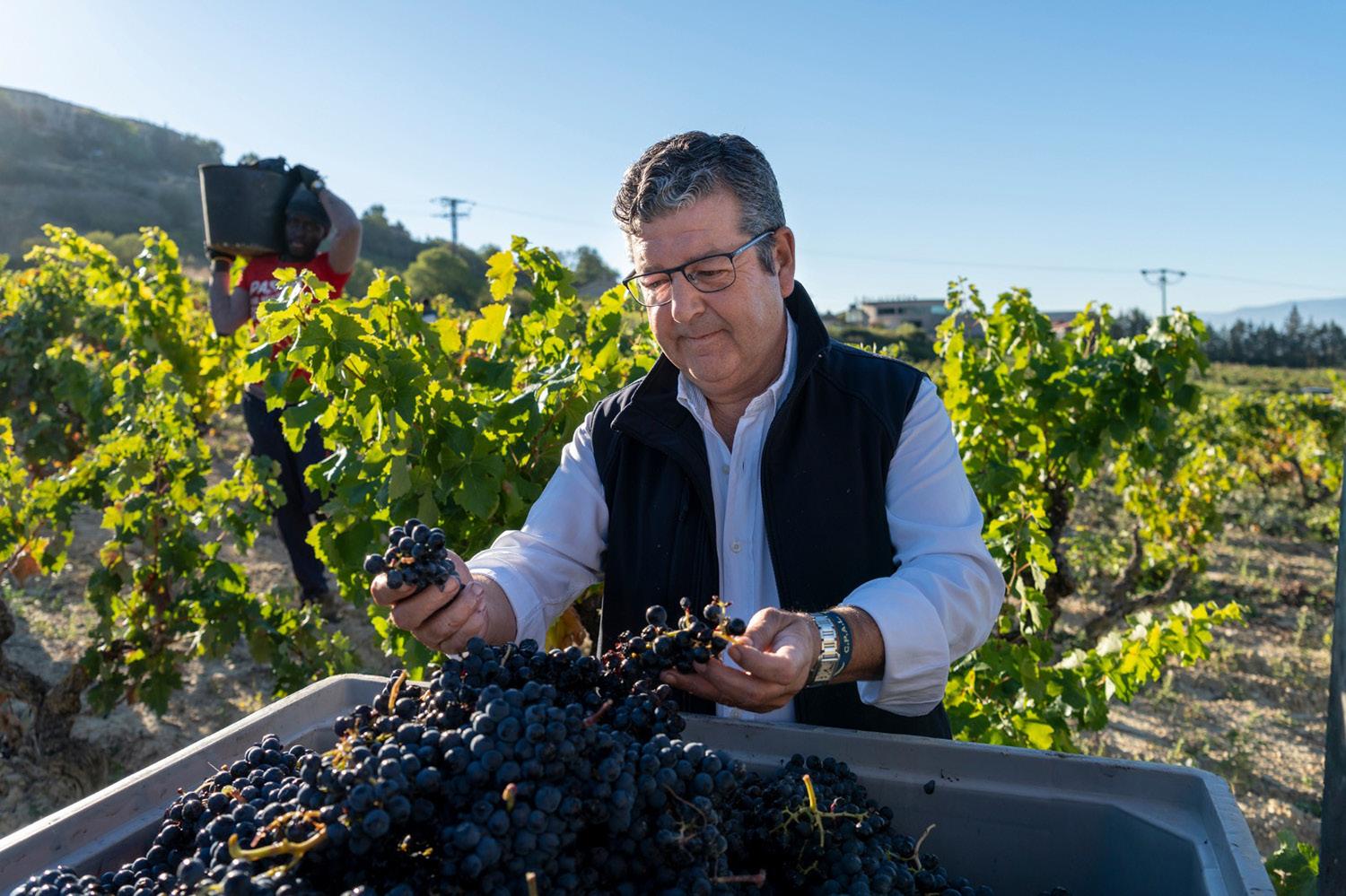
Jesús Madrazo is one of Spain’s greatest winemakers. He is a fifthgeneration member of CVNE’s founding family and his father, José, co-founded Contino in 1973. Technical director at Contino for almost two decades, Madrazo left in 2017 to start his own business.
I learned to work very hard. Sometimes during harvest he gave me the choice to eat lunch or have a 30-minute siesta. I chose the siesta every time!
Are you working on anything new? I have so many ideas going on. In memory
of my father who passed away in 2015, I have just released a Gran Reserva red made from Muro grapes and to follow will be a Gran Reserva White, which is currently ageing in the Muro winery. I might do a rosé, but not in a Provence style.
Jesús Madrazo Rioja Blanco Reserva Ermita de San Gregorio 2021
Hand-selected Viura from a plot of 40-year-old vines, blended with 10% Malvasia from the Villota estate. On the nose it is delicate and very floral with citrus, mandarin peel and a mineral character. RRP £35
Jesús Madrazo Gran Reserva A Mi Padre 2017
Jesús describes the blending process as “the hardest job I ever had to do,” but the result is a classic Gran Reserva Rioja with ripe black fruit, California plums and blackberries. RRP £260 (magnum)
Jesús Madrazo Rioja Num IV 2020
The inclusion of Merlot brings a sweet tannin that balances with the warmth of Garnacha and the rusticity of the Graciano. A powerful nose of red fruits, aromatic bush herbs with mint chocolate and spicy notes. RRP £30
Jesús Madrazo Selección Ribera 2019
A portion of the grapes come from 80-year old vines. This is a serious wine combining power and elegance with a very aromatic nose of ripe black fruit and sweet vanilla. RRP £55
Jesús Madrazo Selección Rioja 2019
A ruby red wine with an intense nose giving hints of balsamic, graphite and menthol.
A fruity plum character, fresh on the palate with long acidity. An ideal pairing with spicy foods. RRP £45





To celebrate the arrival of these fantastic wines, Stu and Will at Frederick's Wine Co are offering a 10% discount for the first 10 new customers to place an order. Email stuart@frederickswine.com or will@ frederickswine.com. Offer ends October 31 and excludes the 2017 A Mi Padre Rioja Gran Reserva magnum.
An innovative new gift pack from the Fladgate Partnership lets consumers see for themselves how well top-quality ports match with premium chocolate
For more information, contact Mentzendorff: mentzendorff.co.uk / 020 7840 3600

The Fladgate Partnership has released its first gift box dedicated to chocolate and port. The Vinte Vinte Chocolate and Port Tasting Box presents expertly curated pairings of deliciously crafted Vinte Vinte chocolate that harmonise with the selected Taylor’s and Fonseca ports.
Vinte Vinte’s master chocolate maker Pedro Martins Araújo, whose work is celebrated and demonstrated at The Chocolate Story at World of Wine in Porto, is not only committed to his craft but also to educating and sharing the story of the cocoa bean.
There’s much to be learnt about chocolate that will interest wine lovers, who will no doubt appreciate the attention paid to sourcing the right cocoa beans from the right terroir – and may be surprised to hear that chocolate also goes through a fermentation process.
“There are many aspects that set craft chocolate apart from all the mainstream commercial chocolate brands that everybody is acquainted with,” says Araújo. “This is the bridge into the wine world because, like wine, chocolate is fermented and, just like with wine, it’s during this process the magic happens.
“The idea behind this gift box is to demonstrate how four very different kinds of port wine pair with four different chocolates,” he says.
“Of all the pairings that can go with port wine, chocolate is the perfect one: it is a match made in heaven.
“I have made the pairings and presented them this way, but it’s not a definitive rule. What really matters is what you like the most, what gives you the most pleasure. That is what it’s about.
“Everybody loves chocolate,” he continues. “We start consuming it from an early age and we have this emotional attachment with chocolate that we may not have with wine, but they are both magical worlds.”
Aware that port wines are more usually enjoyed by the older generation, Araújo is confident that introducing chocolate as a top pairing will broaden their appeal and attract a younger audience.
“Chocolate speaks to everybody from all ages,” he says, “and that is something we must take advantage of, because not only is the Fladgate
Partnership the makers of port, we are also the makers of a craft chocolate brand, and the two products work harmoniously together to reach new consumers.”
The name Vinte Vinte plays on the latitude position of 20˚ north and 20˚ south of the equator, which defines the most ideal environmental conditions for the cacao tree to develop and bear fruit of the highest quality.
“Like our port wines, we take exceptional pride in the origins and quality of the raw ingredients we use,” says Adrian Bridge, the Fladgate Partnership’s managing director. “At Vinte Vinte we know that good chocolate depends on quality cacao, and we take the time to carefully choose our cacao, which has been harvested from the best terroir, sourcing the best quality ingredients. This allows us to have more control in the process, and we can track every stage of the journey our raw ingredients take.”
Port and chocolate pairings can easily be demonstrated in-store as the different chocolates are all conveniently and stylishly wrapped. Another option is Vinte Vinte’s chocolate cups. Araújo originally started making them as part of the tasting experience at the chocolate museum but there are plans to roll them out to the wider trade.
“Basically I make these tiny chocolate cups, we pour the port inside and you drink and have the chocolate. It’s that easy and a delicious and fun way to have a tasting in-store,” he says.
The release of the Vinte Vinte Chocolate and Port Tasting Box may be perfect timing for Christmas, but it would be a welcome gift for port or chocolate lovers at any time of year. As Araújo himself says: “I think this pairing box is the perfect dessert. If you’re going to dinner at a friend’s house and you grab this box you have four different chocolates, from white to very dark, so you’re covered for all tastes.
“We are incredibly proud of the quality of the chocolate we produce and have worked hard on curating the perfect port and chocolate pairings at The Chocolate Story at World of Wine. We are so pleased to finally be able to extend this experience and showcase our expertise in a unique tasting box for all to enjoy.”

The Vinte Vinte Chocolate and Port Tasting Pack contains 4 x 5cl ports and 4 x 25g chocolate bars.
The rich and fruity Fonseca Bin 27 is paired with Classic Dark Chocolate 70%; the full-bodied Taylor’s LBV is to be enjoyed with Classic Dark Chocolate 58%; the elegant and mellow Taylor’s 10-Year-Old Tawny with Classic Milk Chocolate 35%; and the fresh and lively Taylor’s Chip Dry White Port with Classic White Chocolate.
Inside the lid of the box, there is a QR code to take the recipient to an online guided chocolate and port tasting video led by Pedro Martins Araújo.
Krohn port has been a mainstay of the indie trade for decades. New owner WineStone – which bought the brand and its Quinta do Retiro Novo estate last year – shares the brand’s rich history and what makes it special
The Krohn brand comes from Dankert Krohn, who with his cousin Theodor Wiese founded the firm as Wiese & Krohn in 1865, initially focused on exports to Scandinavia. In the 160 years since, it has established an outstanding reputation for its old cask-aged colheitas – or single harvest tawnies – and vintage ports from its flagship Douro property, Quinta do Retiro Novo in the Rio Torto Valley.
The 20ha estate is located in Sarzedinho and is a member of the exclusive group of the region’s properties rated as Class A. More than half of its vines are over 100 years old, giving both great quality and complexity, thanks to the diversity of vines planted back then. North-facing slopes bring freshness in an increasingly hot and harsh climate.
Great importance is attached to a mix of modern technology and traditional winemaking methods. The property’s traditional lagares have not been used for foottreading grapes for more than five years but there are plans to revive them, to work alongside robotic lagares.
WineStone’s Australian chief winemaker is David Baverstock. He has more than 40 years’ experience working in Portugal, having fallen in love with the country


when he first arrived in 1982. He’s since worked for esteemed producers such as Symington, Quinta do Crasto and Esporão.
He'll be assisted in defining Krohn’s future by Mafalda Bahia Machado, a young and driven winemaker from Porto, who has known the area all her life.
Krohn’s UK distribution through Boutinot remains unchanged, as WineStone seeks to ensure that it remains a brand that indies can call their own, dedicated to making high-quality ports.
This Christmas the focus will be on the wonderful 2006 colheita and powerful 2011 single quinta, alongside garlanded vintage ports and a range of tawny and ruby styles. There’s also a new table wine arriving in the UK in October.
Krohn’s history, Quinta do Retiro Novo’s unique location and the experience of its winemaking team are a great recipe for making remarkable wine and helping port drinkers make memories – both today and for decades into the future. This is what Krohn is all about.
Published in association with Boutinot





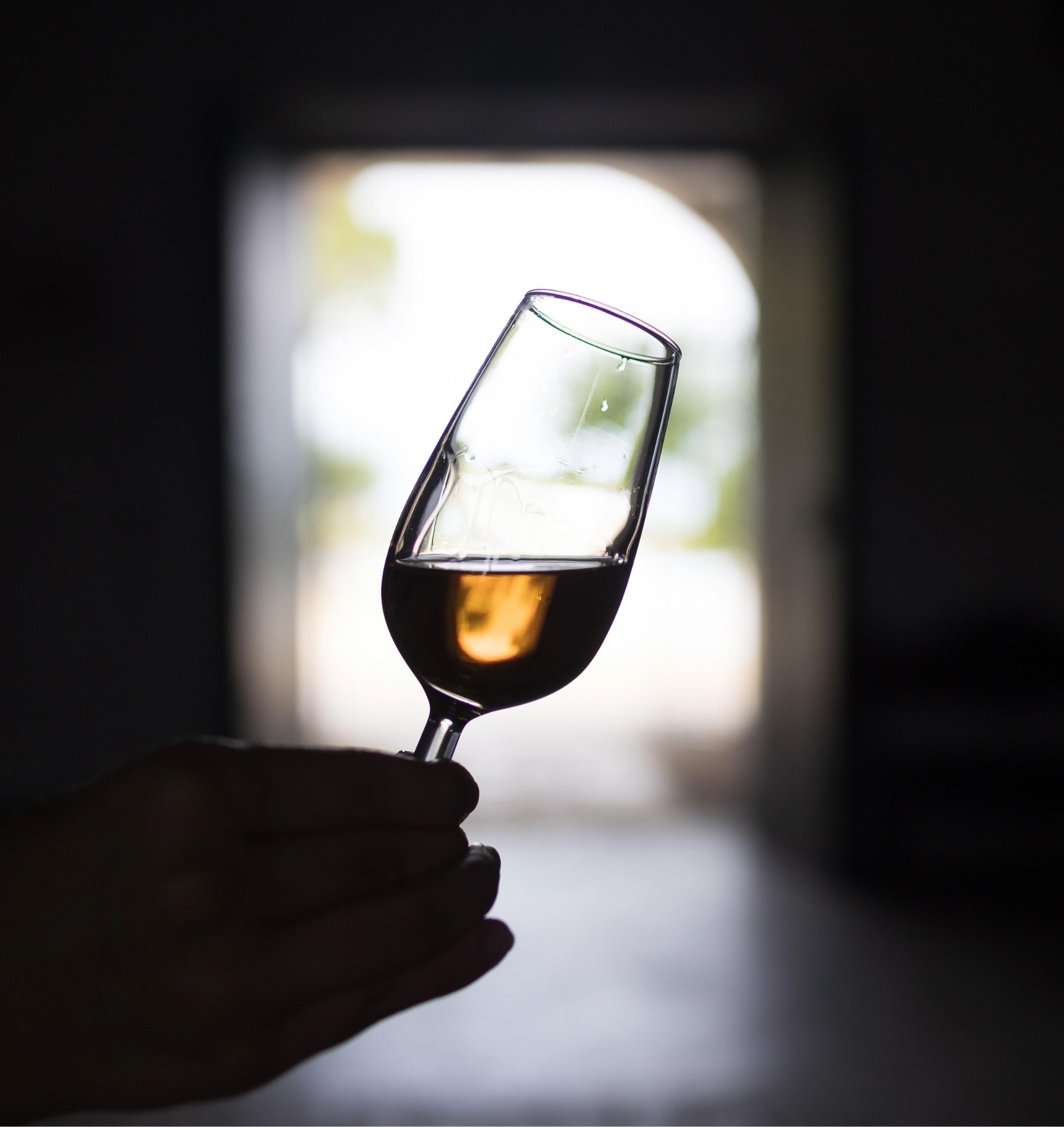
David Williams considers the state of play for port and sherry, starting overleaf
One of the biggest trends in the Douro in recent years has been the rise of ever-more premium fortified styles.
It’s a tale of upmarket growth that bucks the trend of decline in fortified wine. Port may have shed a third of its annual volume sales over the past two decades, but what it has lost in quantity it has very much gained in quality, with a raft of high-end releases that have captured the imagination of consumers worldwide.
The past year has been no exception, with the two biggest British shippers as ever among the leading lights of the premiumisation drive, and with the 2022 vintage being the focus for two particularly exciting premium releases.
While 2022 is not widely hailed as a great vintage (of the big names, only Noval declared a full vintage after a year of intense heat and drought), port shippers are increasingly focused on terroir – and have grown more comfortable with the idea of giving consumers as much opportunity as possible to taste different parcels of vineyard in all vintage conditions.
For the Fladgate Partnership that has led to the introduction of an entirely new vintage wine, Taylor’s Sentinels, which makes its debut alongside the release of small amounts of its established single quinta vintage ports, Fonseca Guimaraens and Taylor’s Quinta de Vargellas, with the 2022 vintage.


Vintages can vary, but the character of the Douro’s quintas is enduring
both complex and harmonious.”
A blend of fruit sourced from four of Taylor’s best and most historic parcels in the Pinhão Valley, Sentinels Vintage Port is “a tribute to the unique terroir” of this Douro tributary, says David Guimaraens, Taylor’s head winemaker. “Each estate contributes its own character to the blend, resulting in a wine that is
While a different proposition to the shipper’s single quinta wines – it’s effectively a mini-vintage port – the intention is that Sentinels will, like the single quintas, be released only in years when a full vintage is not declared.
Fladgate’s great rivals at Symington Family Estates, meanwhile, have used the
What the port industry has lost in quantity it has very much gained in quality, with a raft of high-end releases
2022 vintage to make only the fifth-ever vintage of their “micro-terroir” bottling from their famed Quinta do Vesúvio estate, Capel do Vesúvio.
Head winemaker Charles Symington says: “At Quinta do Vesúvio there were three micro-terroirs within the estate that sung beautifully in 2022. These were the three plots of vineyard that contribute to the limited-edition Capela da Quinta do Vesúvio Vintage Port.
“We only make this wine when these vineyards produce the power, structure and refinement required to create a standalone vintage port that expresses the unique characteristics of these vines.”
The wine joins the single quinta vintage ports Quinta do Vesúvio and Dow’s

Quinta da Senhora da Ribeira as the company’s representatives from what the company called “one of the most challenging” vintages in the Douro’s history.
Other notable 2022 releases include Quinta do Noval, Quinta do Noval Nacional and Quinta do Passadouro from the Noval stable; Sandeman Quinta do Seixo, Porto Ferreira Quinta do Porto, and Offley Vintage from Sogrape; and Kopke Quinta de São Luiz, Burmester Quinta do Arnozelo, Cálem 2022 and Barros 2022 from Sogevinus.
As ever, however, much of the innovation in port is happening in the aged tawny category, where shippers have continued
to draw on their stocks of often very old wines to launch new products with strong appeal to collectors and shoppers looking for bottles to mark significant anniversaries and birthdays.
The trend was given an extra boost in 2020 when the Port & Douro Wine Institute gave the green light to a new age-dated category, 50 Year Old Tawny Port, to add to the existing, 10, 20, 30 and 40 Year Olds. And this year saw the Symington family make their first foray into the half-century category with the release of Graham’s 50 Year Old Vintage Port. The wine is based on two main components: one, from 1969 known as
CAS Reserve, originally set aside by Peter Symington to mark the birth of his son, the current head winemaker Charles (aka CAS); and the other featuring wines from 1970 and 1973 that were blended in 1982. Another eye-catching top tawny release came from the oldest port house around, the Sogevinus-owned Kopke, which launched its Library Collection in the spring.
A set of three bottles stylishly housed in a wooden case designed to look like a book, the Collection includes a Very, Very Old Tawny, which is a blend of wines from 1890 to 1937, alongside a 100-year-old Quinine (a blend of port and quinine) and a similarly aged port-based vermouth.

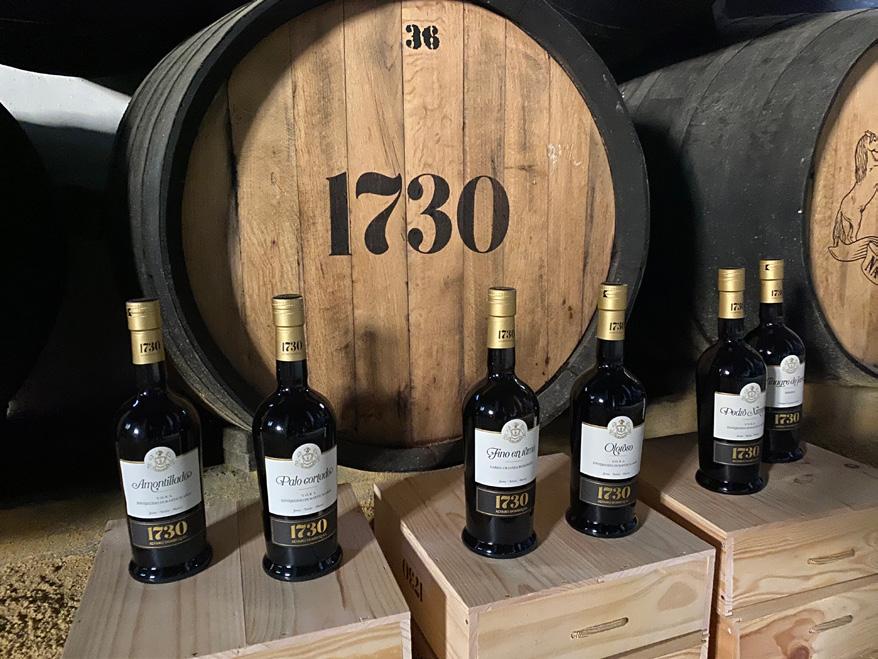
Bodegas Álvaro Domecq is owned by renowned picador Álvaro Domecq Romero. It’s been two decades since he acquired the almost mythical soleras of the celebrated 19th century female winemaker Pilar Aranda, establishing a company with a firm identity that produces some of the most appreciated wines in the world.
Ana Real has been the winemaker at Álvaro Domecq since 2012 where she directs the harvest and fermentation processes. It’s a task she approaches with the same dedication as Aranda herself.
“Being an oenologist in a Jerez bodega is a great responsibility, as one inherits exceptional wines crafted by previous oenologists,” says Real. “I am inspired to maintain and, where possible, enhance their quality and personality, particularly in biologically-aged wines.”
Real is the third generation of winemakers in her family. On completion of her chemistry studies, she started working in the family business, a laboratory specialising in wines and other beverages. “Under my father’s tutelage I learnt the art of winemaking whilst advising numerous wineries that did not have an inhouse oenologist,” she says.
At Bodegas Álvaro Domecq, respect for tradition is key, but not to the detriment of social and environmental change, as Real explains. “During the years when Pilar Aranda managed her winery, it was indeed a world where only men were working in the sector. However, in my generation, many women had already entered various professions that had traditionally been male-dominated and I must say that I have never felt marginalised in this profession for being a woman.”
Over the years Real has witnessed a change in climate, which has brought harvest time forward from the beginning of September to mid August. Regardless
of this alteration in the vineyard, the cellar routine remains a constant with the wines “sleeping” in American oak barrels to further enhance their aromas and flavours. The creation of sherry continues, as Domecq says, “poco a poco”.
“The solera and criadera system was invented by the Jerezanos in order to have the same type of wine of the same quality,” Real says. “When we are going to bottle a wine, we take out the oldest one from the solera. What we have taken out of the solera, we replace with the first criadera and so on until the last criadera which is then filled with the wine of the year, which is the youngest vintage.
“Inside a butt you can have a mixture of wines that are over 100 years old with wines that are two or three years old.”
What would Real say to consumers yet to discover and appreciate sherry? “I would tell them that the wines of Jerez are the finest wines in the world,” she says. “They are intense and flavourful wines, which is why they may be slightly more challenging to drink.
“I would recommend that they begin with cream or medium-style wines and gradually accustom their palate until they reach the dry wines. When food possesses an intense flavour, it is necessary to accompany it with a wine that is equally intense, and in this regard, sherries are unrivalled. I would also tell them if sherry is a classic, it is due to its excellence. Only truly exceptional things become classics.”
The 1730 collection is made up of five wines in the VORS category, a qualification that applies to wines with an average age of at least 30 years, certified by the Consejo Regulador with labels given to a production of a maximum 1,000 bottles. The range also includes a speciality vinegar with a roundness and flavour designed for haute cuisine.
The AD collection also comprises five wines and a vinegar. This collection pays homage to Domecq’s love of horses, with illustrations of the magnificent Andalusian dancing horses on the label.
The intense and elegant Veragua and Duque Veragua brandies take their name from the title granted by the Crown to the grandson of Christopher Columbus.
The first 10 Wine Merchant readers to place an order will receive a 10% discount.
Email stuart@frederickswine.com or will@frederickswine.com frederickswine.com

The category is hopeful of recruiting consumers with fewer preconceptions
Ahighlight of the year for this correspondent was the opportunity to taste, blind, around 40 samples of the best fino and manzanilla sherry brands at a tasting organised by The World of Fine Wine magazine in the spring.
The tasting showed why these dry wines of Jerez, Puerta and Sanlúcar Barremeda are still considered, in the words of Peter Sisseck of Dominio de Pingus (and latterly of new-wave sherry producer Bodega San Francisco Javier) “Spain’s finest white wines”.
Among the standout performers for me were Osborne La Honda Fino En Rama; Tio Pepe Fino Tres Palmas Fino; Bodegas Yuste Conde de Aldama Manzanilla Pasada; Sanchez Romate Fino Perdido 1/15 Butts; Barbadillo Manzanilla Pasada Solear En Rama (Saca de Invierno 2023); and a pair from Equipo Navazos: La Bota 120 de Manzanilla Pasada and I Think Manzanilla En Rama (Saca de Mayo de 2023).
The last of these, originally launched by a group of friends led by sherry enthusiast and writer and criminology professor Jesús Barquín, was a star performer in what was a good year for sherry at this year’s Wine Merchant Top 100 competition, with the Alliance-imported brand walking off with a Best Value Fortified Wine Trophy, while another sherry – Valdespino VOS & VORS Collection Oloroso Don Gonzalo VOS NV –took home the Best Fortified Trophy.
That sherry is capable of hitting spots that other wines can only dream of – and at sometimes absurdly low prices – is hardly
news to anyone working in the wine trade, of course. But there are hopes that the message is finally getting across to a wider audience, too. The mini-boom enjoyed by sherry during Covid may have flattened out – but the Consejo Regulador Jerez-XérèsSherry is convinced that a generational changeover is starting to bear fruit, with the quality of the dry wines being key to a reputational makeover.
“Most consumers would identify sherry with sweetness,” says consejo president César Saldaña. “But what we are seeing is the dry styles gaining more share of total consumption. If there’s a word to describe sherry, it’s diversity. There are different styles, all of which are based on the beautiful weather we have that allows us to grow beautiful vineyards.”
Much of the Consejo’s focus and marketing budget is targeted at its annual International Sherry Week, which has its 10th anniversary this year, and which has swelled to include more than 20,000 events in 300 cities across 40 countries since the first event in 2014, all aimed at “highlighting
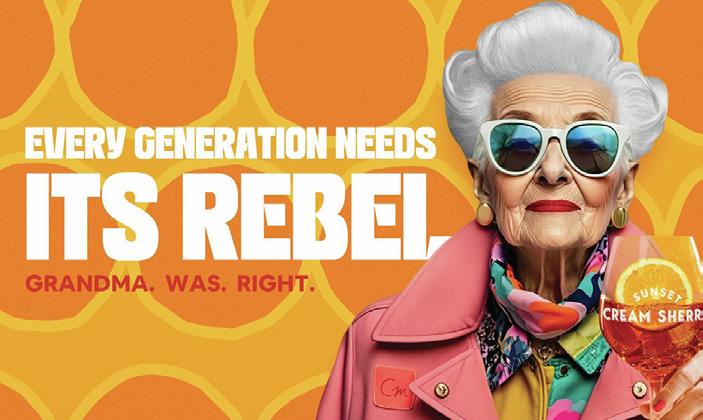
This year’s marketing campaign
the versatility and richness of sherry, appealing to a broad spectrum of wine enthusiasts,” according to the consejo. This year, however, marks the arrival of a bold new approach to promoting the event in the UK, with the launch of a new ad campaign to support the message, “Isn’t it time you reconsidered a classic?”, in which the consejo attempts to turn the rather clichéd idea about its traditional audience on its head.
Designed by London brand and marketing strategist Chelsea Co, the ads feature a brightly dressed older woman in sunglasses beside the strapline: “Every generation needs its rebel: Grandma was right.”
The campaign represents a concerted effort to skip over a generation of drinkers who have been largely unable to see past sherry’s association with their parents and grandparents. “Most of Generation Z or even millennials simply do not have any image of sherry,” Saladaña says. “Probably people in their 40s or 50s think sherry is something their parents would drink long ago.
“Consumers in their 20s and 30s maybe have never tried sherry at all. This presents a new opportunity to reach people who don’t have any misconceptions about sherry. For them, the world of sherry is new to discover. This is an opportunity for us because it’s not about explaining what sherry is not, but explaining what sherry is.”
As well as highlighting sherry’s value and versatility, the campaign, and events at International Sherry Week, will include a range of perception-challenging food matches and serving suggestions, from a “cream sherry sunset” mixer (“cream sherry over ice in a generous tumbler or wine glass, with a slice of orange”) to Fino & Tonic, via tips such as sharing a ploughman’s with oloroso (“served chilled in a generous glass, oloroso, with its toasty nutty notes, pairs well with cured meats and cheeses”), “aromatic curries” with amontillado, and “classic fish and chips” with fino and manzanilla.
Roddy really is the hero of the piece. Roddy, bottle-bottom specced Roddy who invented our till system – which is, if you’re wondering, a troupe of highly-trained mice sitting in boxes which look like processing units. Some were in the Disney classic Cinderella (1950). Roddy moved into EPOS systems from the Ghostbusters (1984)-suited squad who bravely millennium-proofed our fridges and hoovers so they didn’t run amok with Millennium Noncompliance (1999), back in the days when anyone could make a buck from fear, not just friends of the Tories. Out they went, these enterprising souls, Sonic Screwdriver (1968) in one hand and stethoscope in the other, breathing heavy sighs and beating stickers with Aztecthemed Bugs to hoovers and fridges and toilet doors and staircases. The Williams Fridge had one, before it started leaking white blood and humming about “the good of the corporation”.
We send WhatsApp messages to each other, me and Roddy. Mostly the message “till isn’t opening please make it open” or “blue screen of death is this it??” – basically when one of the mice rebels and starts crying white blood and murmuring about

Phoebe Weller of Valhalla’s Goat in Glasgow knows exactly who to call when the shop’s hardware starts to malfunction or the till mice decide to misbehave
products to the system or exchanging goods for cash, and he’ll come by when he can.
And what a hero he is when he comes in! And what a hero of the piece he is! Arriving with his piece wrapped in tinfoil and then Greaseproof Paper (do you need Greaseproof Paper? Check out www. greaseproofpackaging.co.uk and help fund my January holiday to the Caribbean!), or Greaseproof Paper and then tinfoil depending on which way round your time is going or which end of the activity you are engaged in.
TEuropean Working Rights violations and drinking the sample bottles of port in the cellar.
He logs in and tasers the mice from afar, usually, or tells us to stand on Kelvinbridge with a scanner and a bottle of pet nat under a full moon repeating “Treguna Mekoides Tracorum Satis Dee” (1971). When that doesn’t work he says we’ve Been Meddling, for example adding new

he contents of the Amazing Piece remains a mystery because Roddy is very private and doesn’t like people watching him eat, which is cool, and cool too because Mysteries are cool! On the advice of another merchant at a Wine Merchant round table we have recently instituted a Mystery Barrel on the shop floor. Upon it we brown-bag up ANY OLD SHIT and label with a Nice Price and a Catchy Name, on regulation VG Post-its. My personal favourite Catchy Name was FRUITY FRUITY TOOTY KAPOOTY HONEY £30, which included two fruit beers, two CBD cans of something and a dusty craft mead.
The mystery wine has been less of a success. Maybe one of the rebellious till mice has told the customers that they’re all that Vibrating Sherry/not Sherry bought pre-pandemic in a moment of arrogant retail whimsy.
“The barcode machine’s fucked,” Roddy says, balling up his finished Amazing Mystery Piece wrappings and striding out of the shop with it under his arm, briefly examining the wares on the Mystery Barrel, lingering at the WHAT’S HOP AND WHAT’S NOT £32 bag but deciding against it.
He’ll be in touch.
September crossword winner
Congratulations to Cat Brandwood of Toscanaccio in Winchester, who is the winner of the sixth Wine Merchant crossword.
The prize is a bottle of Mad Bird Reposado Malbec, kindly donated by the generous souls at Barton Brownsdon & Sadler.
Solution to Crossword No 6
This is an opportunity to taste wines from Nova Scotia’s finest producers, including Benjamin Bridge, Avondale Sky, Lightfoot & Wolfville and Luckett Vineyards.
Masterclasses will be presented by wine writer Jamie Goode and a Nova Scotia winemaker.
Registration and details via anny@ westburycom.co.uk.
Monday, November 4
Mary Ward House 7 Tavistock Place
London WC1H 9SN

Delivery time How I hate shifting boxes Wish it was Sunday
Answers to questions on page 20
1. Portugal
2. (c) 1973
3. Fino and amontillado
4. East Sussex
5. Helen McGinn
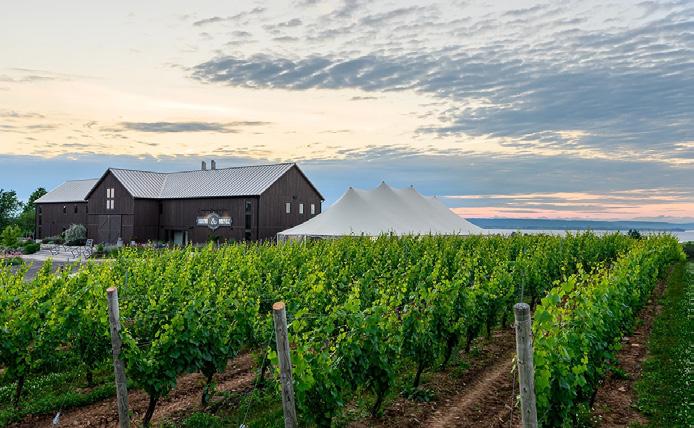
Not much detail about this one as we go to press, but the Bourgogne Wine Board is eager for independents to join a masterclass about a wine style that’s growing its profile as interest in fizz widens out from the usual suspects.
For more information contact aloisel@ hopscotchgroupe.com.
Monday, November 4
Asia House
63 New Cavendish Street
London W1G 7LP
This event offers the chance to explore the 2022 vintages from more than 100 members of the Union des Grands Crus de Bordeaux.
It will feature producers from Médoc, Graves and Pessac-Léognan, Sauternes, Barsac, Saint-Émilion and Pomerol.
To request an invitation, contact celine@ otaria.co.uk.
Tuesday, November 5
RHS Lindley Hall 80 Vincent Square
London SW1P 2PB
This tasting is being held to celebrate the 50th harvest of Chianti Classico producer Querciabella.
Winemaker Manfred Ing will be joining the Armit Wines team to navigate through its range of Super-Tuscans and singlevarietal Sangiovese, showcasing current releases and the new vintage of its Chianti Classico Gran Selezione.
Contact your Armit account manager, or email events@armitwines.co.uk.
Tuesday, November 5
Jamie Oliver 6 Catherine Street London WC2B 5JY

The signature red and white tops on bottles of Austrian wine have become an increasingly familiar sight on UK shelves in recent years.
Indies can expand their Austrian wine horizons even further when the generic body hosts masterclasses in Edinburgh and Manchester.
Registration via markets@austrianwine. com.
Wednesday, November 6
National Museum of Scotland Chambers Street
Edinburgh EH1 1JF
Friday, November 8
The Beeswing 24a Minshull Street
Manchester M1 3EF
Writer and broadcaster Joe Wadsack will host this Zoom masterclass to highlight the breadth on offer from the Australian region.
Attendees will receive samples of: Yering Station Chardonnay 2023, Yarra Valley; Tahbilk Marsanne 2017, Goulburn Valley; Fowles Are You Game? Pinot Noir 2021, Strathbogie Ranges; Castagna Genesis Syrah 2018, Beechworth; Brown Brothers Patricia Cabernet 2015, King Valley; and Stanton & Killeen Grand Muscat NV, Rutherglen.
Limited to 60 places: email sabrina@cubecom.co.uk.
Thursday, November 7

The masterclass will be hosted by Andreas Kubach MW and offers the opportunity to explore new, terroirdriven styles of the Spanish region’s wines.
Information and registration through astrid@spritzmarketing.co.uk.
Thursday, November 7
St James’s Room
67 Pall Mall
London SW1Y 5ES

Zoom link supplied on registration
A chance to try medal-winning Austrian wines from the 2024 IWSC, alongside latest releases from the Neusiedlersee DAC and Niederösterreich.
Register interest with astrid@ spritzmarketing.co.uk.
Monday, November 11
The Stables
40 Earlham Street
London WC2H 9LH
This tasting will bring all the latest releases to London, covering most of New Zealand’s wine producing regions and including wines from the 2024 vintage.
The self-pour event will have wines laid out by variety, vintage, region and price point.
All the wines included are produced in accordance with one of New Zealand’s recognised sustainability programmes. Contact sarahs@nzwine.com.
Tuesday, November 12
St James’s Room
67 Pall Mall
London SW1Y 5ES

The Thorman Hunt team invites indies to celebrate its Rhône wines at this London tasting.
The 2023 en primeur wines will be on show along with an edit of “drinking vintages”.
The producer line-up includes Jean-Luc Jamet, Lionel Faury, Yves Cuilleron, Laurent Fayolle, Vincent Paris, La Soumade, La Collière, Chaume-Arnaud, Les Pallières, Marcel Richaud, Burle, Domaine des Bernardins, Roger Sabon, Charbonnière and Vieux Télégraphe.
For more information contact lucy@ thormanhunt.co.uk.
Wednesday November 13
St James’s Room
67 Pall Mall
London SW1Y 5ES
Join the Crus Bourgeois team to celebrate the 2020 classification and learn more about the upcoming 2025 one.
Armelle Cruse, vice president of the Alliance des Crus Bourgeois du Médoc, will be presenting a selection of wines from the 2022 vintage, the final year of the 2020 classification.
Wines from across the three-tier system – Cru Bourgeois, Cru Bourgeois Supérieur and Cru Bourgeois Exceptionnel – will be on taste.
Register with jo@bellevillemarketing. com.
Thursday, November 14
St James’s Room
67 Pall Mall
London SW1Y 5ES
The Consorzio Tutela Lambrusco DOC is hosting a tasting in the UK for the first time.
The walkaround tasting will run from 1pm-6pm and showcase more than 100 wines from 80 producers. It will be followed by a Lambrusco pizza party with chef Theo Randall in the evening.
Email registration requests and favourite pizza toppings to alison@ew-pr.co.uk.
Monday, November 18
Theo Randall at the Intercontinental 1 Hamilton Place London W1J 7QY
The Brunello di Montalcino consorzio hosts a trade-only presentation of the 2020 vintage and 2019 reserve wines before an official launch in January 2025.
More information from walter@ walterspeller.com.
Wednesday, November 20 Central London TBC
This is the fifth annual tasting of wines from the selection made by Tim Atkin MW.
Atkin will lead a masterclass exploring the region’s history, climate, terroir and commercial opportunities, followed by a tasting, including his picks for “Ribera del Duero on a budget” and “unrepresented
producers to watch”.
To register email rdd@cubecom.co.uk.
Wednesday, November 20
10-11 Carlton House Terrace London SW1Y 5AH
A whistlestop tour around Armit’s North and South American producers includes Bien Nacido and Solomon Hills in California, Mendel Wines in Argentina and Oregon’s Beaux Frères.
Registration via events@armitwines. co.uk.
Wednesday, November 20
Compagnie des Vins Surnaturels
8-10 Neal’s Yard London WC2H 9DP
This guided tasting of wines from Switzerland’s signature grapes will be led by Stefan Neumann MS and Sarah Abbott MW.
It will be a rare UK opportunity to learn about the country’s alpine terroir and native varieties, which account for over a third of Swiss vines.
Guests will sample nine wines made from Chasselas, Petite Arvine, Amigne, Cornalin, Gamaret, Plant Robert and more. Contact beaton@mastersofwine.org.
Thursday, November 21
Institute of Masters of Wine 6 Riverlight Quay
Kirtling Street
London SW11 8EA
12-14 Denman Street London W1D 7HJ
0207 409 7276
enquiries@louislatour.co.uk www.louislatour.co.uk

@louislatouruk


Cognac Frapin, still in family ownership, can trace its history all the way back to 1270. Uniquely, Cognacs are made entirely on the family’s 240ha estate which includes Château de Fontpinot, the only Cognac house in Grande Champagne that can be called Château.
Solely located in the Grande Champagne area, its distillery ageing warehouses, and roof were designed by the famous Gustave Eiffel.
Consistently a winner in numerous spirits awards, Frapin is a step above due to its longer than expected ageing requirements.
Château Fontpinot XO 100th Anniversary: Cognac of the Year 2023 – ISW
This XO Cognac is the fruit of long ageing, in its dry cellars, which gives it a subtle, complex and refined bouquet of wildflowers, candied fruit and rancio notes.
For more information, please contact sales@louislatour.co.uk or scan the QR code.


info@hatch.co.uk www.hatchmansfield.com @hatchmansfield


The Links, Popham Close Hanworth Middlesex TW13 6JE 020 8744 5550 orders@richmondwineagencies.com

@RichmondWineAG1

@richmondwineagencies
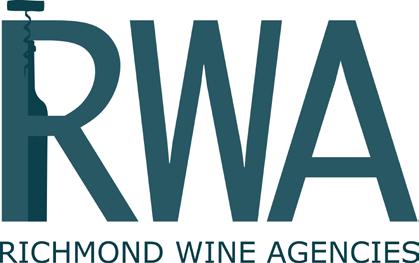
We are now taking orders for all your corporate gift pack requirements for Christmas, featuring Borges Ports, Marques de Riscal, Nyetimber, Vite Colte and Château d’Esclans
Contact Mark, Julia or Tim for pricing and offers. RRPs from £16.99
... And ask us for a copy of the RWA Winter Brochure if you don’t normally receive one, in which you can explore our range of wines with an RRP of UNDER £10. Active October 1 – December 31

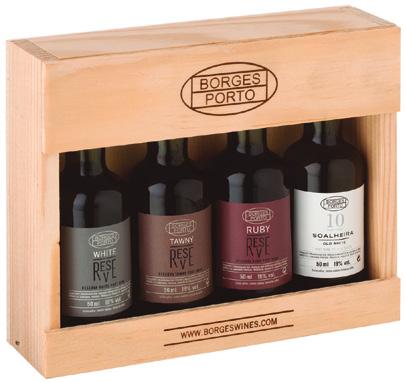
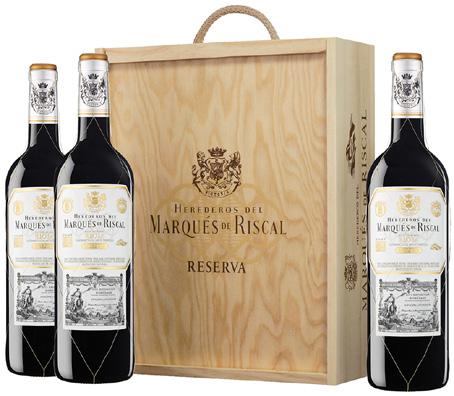

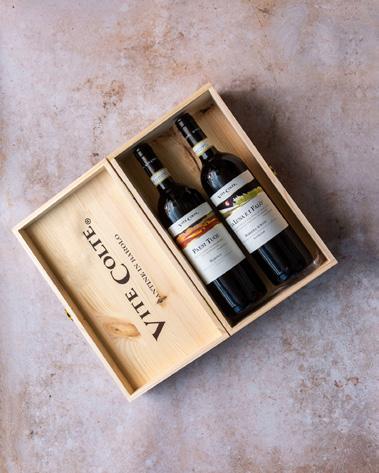
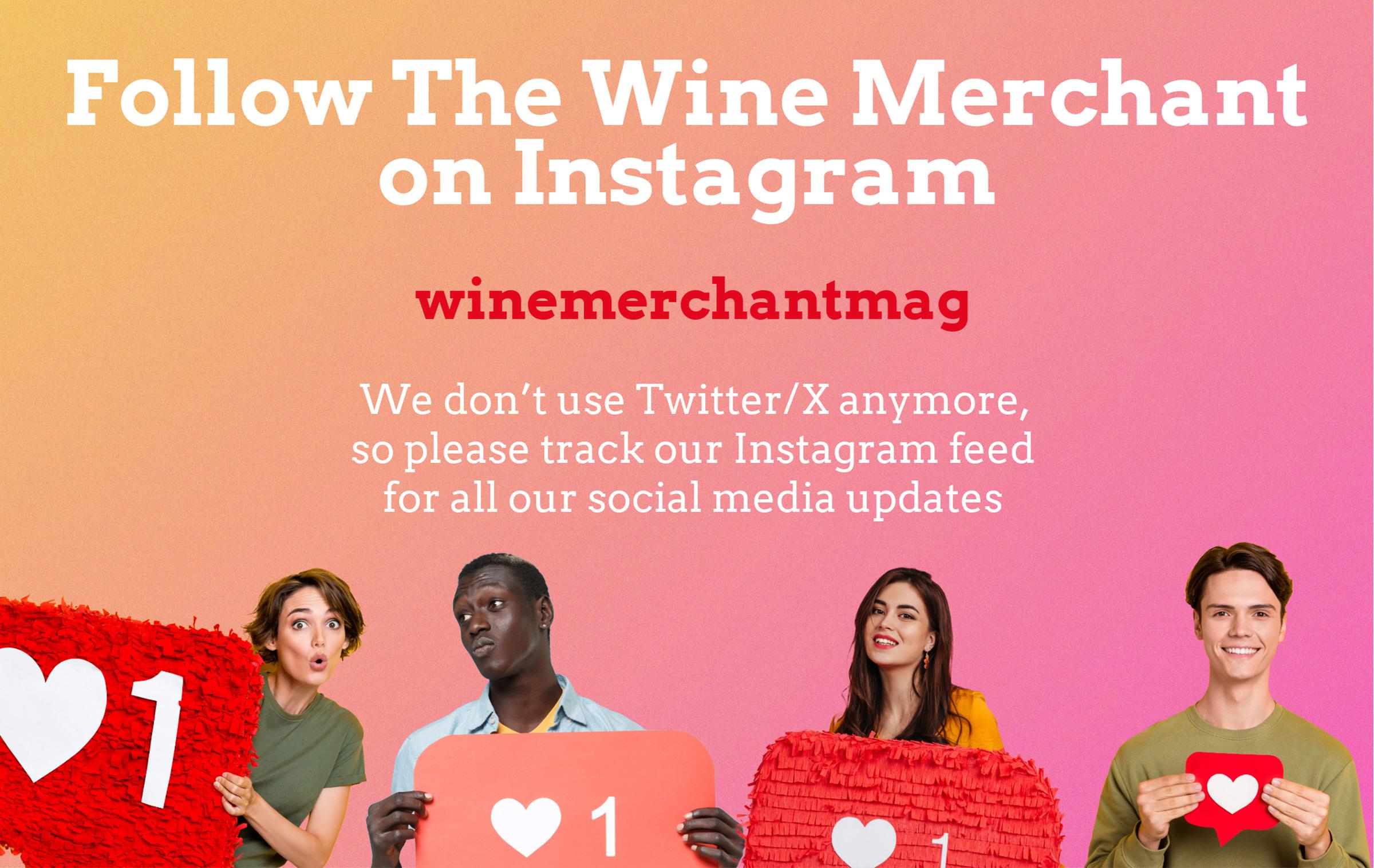
28 Recreation Ground Road
Stamford Lincolnshire PE9 1EW 01780 755810
orders@abs.wine www.abs.wine

@ABSWines


hallgarten wines
Mulberry House Parkland Square 750 Capability Green Luton LU1 3LU 01582 722 538
sales@hnwines.co.uk www.hnwines.co.uk



@hnwines


Leaves are falling and the nights are drawing in - it’s the perfect time of year to enjoy some of our very special fortified wines, either from Australia, famous for their Muscats of Rutherglen, or, more traditionally from Portugal. Contact your Account Manager for more details .

STANTON & KILLEEN RUTHERGLEN TOPAQUE NV
White gold with aromas of quince jelly, cumquats and dried fruit. The palate has notes of zesty lemon peel and butter menthol which combine to reveal a very silky mouthfeel & long finish.

Bright amber gold, copper tints. Fresh raisin fruit backed by subtle oak characters. Luscious mouthfilling raisined fruit combine with the oak flavours to produce a wine of great length.

With a beautiful ruby color, this wine shows excellent aromas of red fruit with some notes of spice and cocoa. Big on the palate but with round tannins. Complex bouquet and a harmonious and long finish.
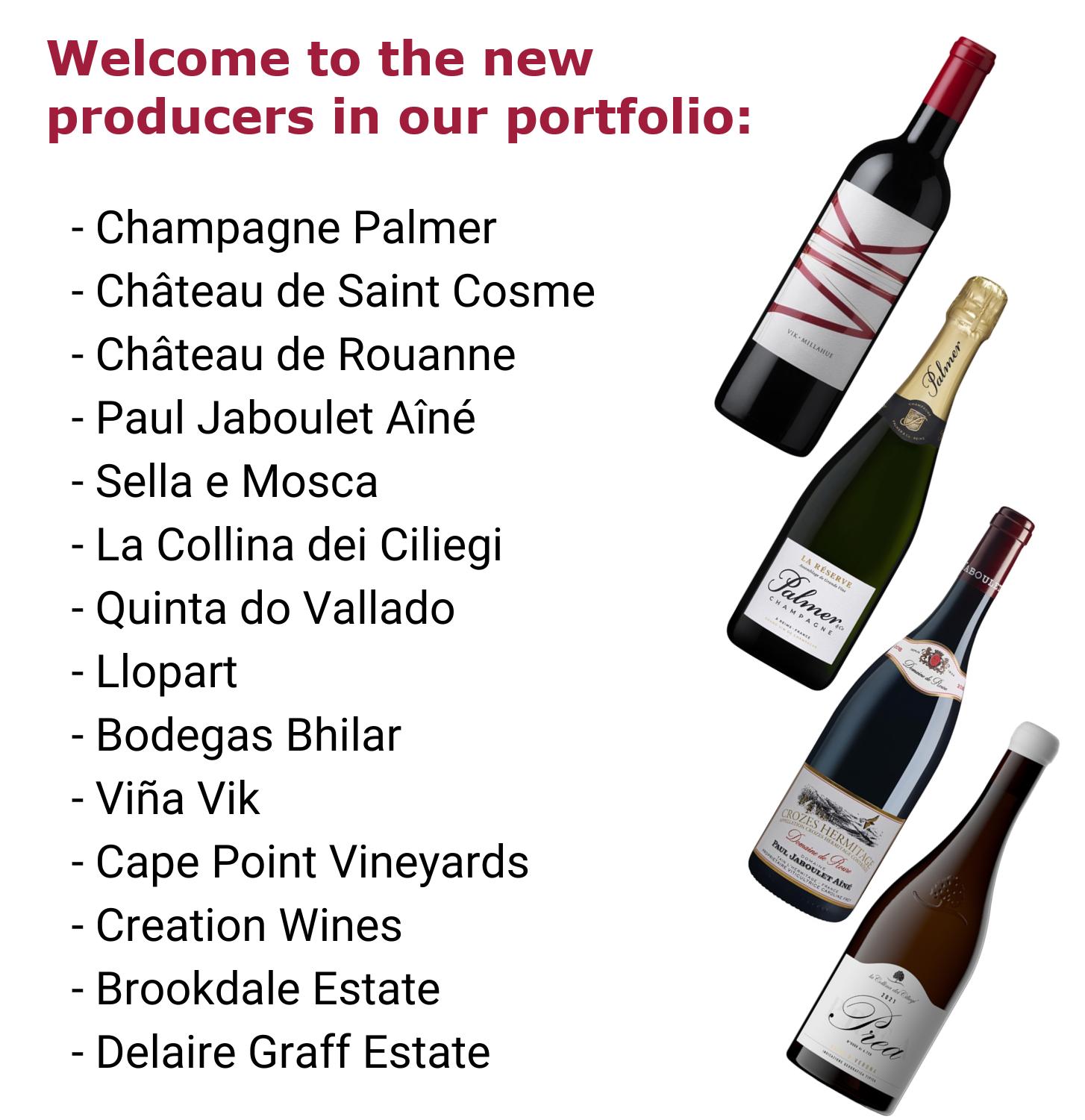
The Woolyard
52 Bermondsey Street
London SE1 3UD
020 7840 3600
info@mentzendorff.co.uk
www.mentzendorff.co.uk




From the makers of Taylor’s and Fonseca Ports, comes the UK release of the Vinte Vinte Chocolate and Port Tasting Box. The houses first ever dedicated Portuguese chocolate and Port wine gift box, which offers expertly curated pairings of deliciously crafted Vinte Vinte chocolate that perfectly harmonise with selected Taylor’s and Fonseca Ports.
buckingham schenk
Unit 5, The E Centre
Easthampstead Road
Bracknell RG12 1NF
01753 521336
info@buckingham-schenk.co.uk
www.buckingham-schenk.co.uk


@BuckSchenk
@buckinghamschenk



From the picturesque area of Montepulciano in Tuscany, Lunadoro is based in the Natural park of Val d’Orcia which is considered one of the most beautiful stretches in the area.
The state of the art cellar, Pagliareto in Valiano di Montepulciano, has 40 hectares of exceptional vineyards making it a true corner of paradise.
This trio of reds crafted from Sangiovese, Merlot, Canaiolo and Mammolo grapes, make these Tuscan reds truly exceptional in both flavour and authenticity.
3 wines available: Rosso di Montepulciano; Vino Nobile di Montepulciano & Vino Nobile di Montepulciano Riserva



4 Pratt Walk, Lambeth
London SE11 6AR
0207 735 6511
www.thormanhunt.co.uk

@thormanhunt
sales@thormanhunt.co.uk
Please RSVP: vanessa@thormanhunt.co.uk
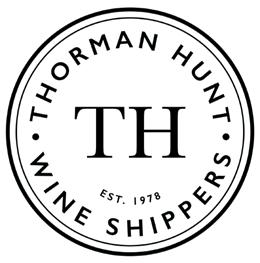
walker & Wodehouse
109a Regents Park Road
London NW1 8UR
0207 449 1665
orders@walkerwodehousewines.com www.walkerwodehousewines.com


@WalkerWodehouse

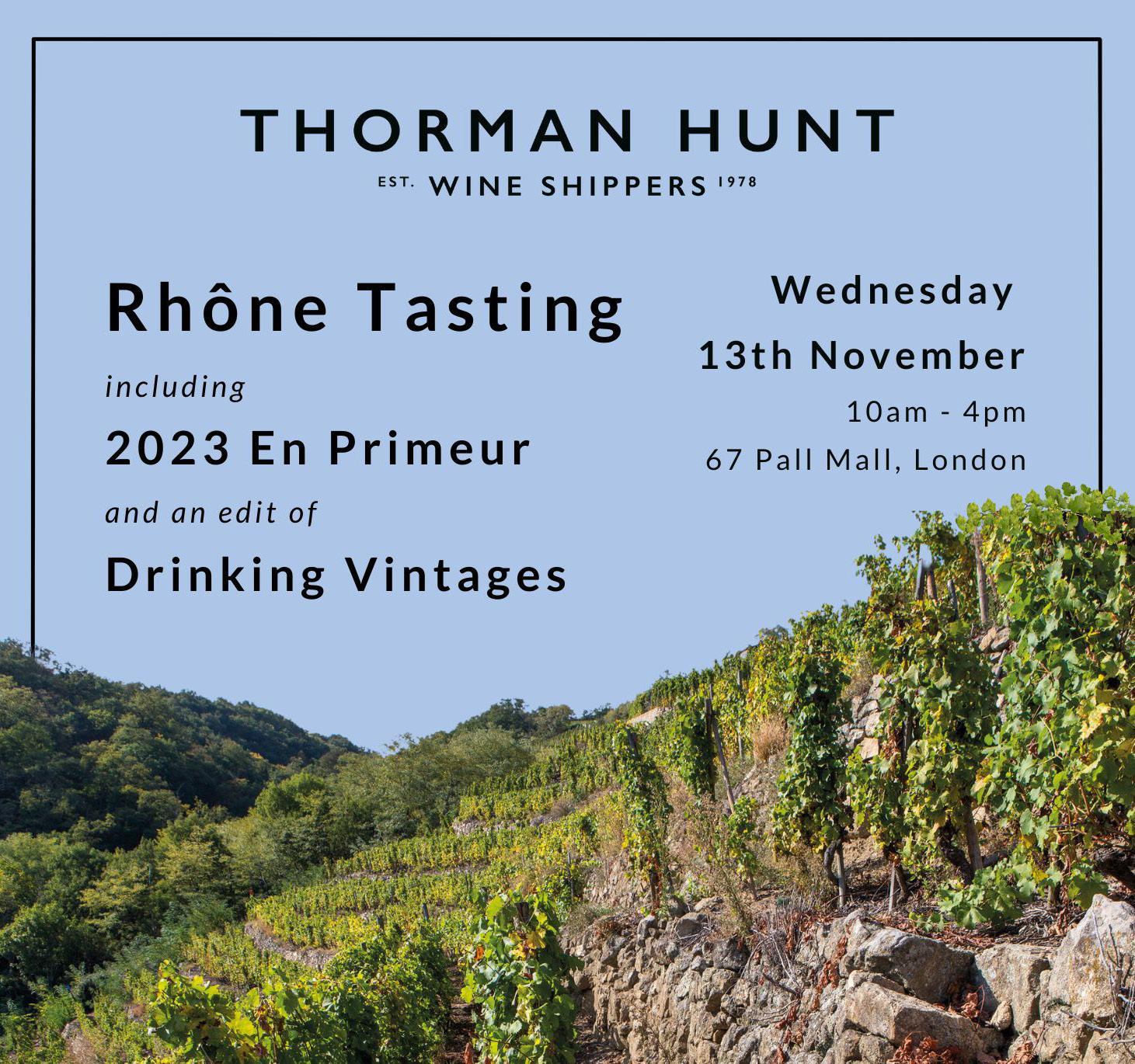
Available now: RocknRolla Pinot Noir from Shannon Vineyards
Walker & Wodehouse is delighted to offer a limited number of the highly sought-after RocknRolla Pinot Noir, from our friends at Shannon Vineyards.
Based in Elgin in the Western Cape, Shannon produces exceptional wines, influenced by the vineyard’s mesoclimate. Cold air that is generated up at the mountain peaks drains down to the vineyards below via the Palmiet River, shrouding them in a blanket of mist.
This single-vineyard Pinot Noir features in Tim Atkin MW’s 2024 South Africa Report with a score of 95 points.
In the words of winemaker Gordon Newton Johnson, “it’s a RocknRolla!” – a name which perfectly describes its consistency year on year.
Talk to your account manager to request an allocation.

Fells House, Station Road
Kings Langley WD4 8LH
01442 870 900
For more details about these wines and other wines from our awardwinning portfolio from some of the world’s leading wine producing families contact:
info@fells.co.uk www.fells.co.uk

@FellsWine

je_fells


69 High Street
Banstead SM7 2NL
07798 900127
info@keywinecompany.co.uk
www.keywinecompany.co.uk
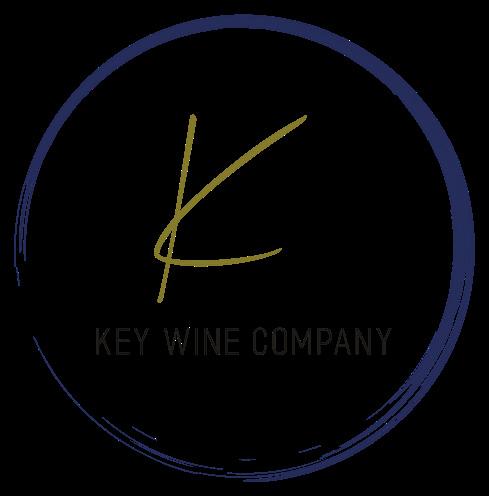

delibo wine agencies
The Old Pigsty, Rose Cottage Church Hanborough OX29 8AA 01993 886644
orders@delibo.co.uk www.delibo.co.uk
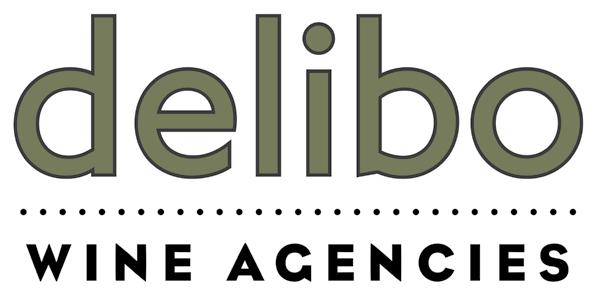
Fabulously elegant and delicious Bulgarian wines – in fact, they are so good they appear impossible … maybe you have entered the …
From the banks of the Danube River – Chateau Burgozone
Cool river breezes, calcareous loess soils, low yields, plot-by-plot varietal planting and harvesting: we are excited to present wines for the next generation of family-owned, estate-grown and bottled wines from Bulgaria, a country with a wine heritage of over 3,000 years. Burgozone is rated the #1 Viognier producer in Bulgaria, with fine Pinot Noir, Chardonnay and Cabernet. The Marinova family are also leading the way in re-establishing the indigenous Gamza and Tamyanka varieties.
Central and Eastern Europe is one of the fastest-growing categories for the independent sector.
Contact Delibo Wine Agencies for information and samples
The computer system for drinks trade wholesalers and importers 16 Station Road Chesham HP5 1DH
sales@vintner.co.uk www.vintner.co.uk





020 7720 5350
order@libertywines.co.uk www.libertywines.co.uk

@liberty_wines



Toro native Álvar de Dios Hernández grew up among his grandfather’s old vineyards in El Pego. Before becoming the custodian of these vines in 2008, Álvar spent several years in Sierra de Gredos, working with Fernando Garcia and Dani Landi. The area underwent a winemaking revolution at this time, which led to Álvar and others adopting a more Burgundian approach to production by focusing on single vineyards and “village” wines. In 2014, Álvar founded his eponymous winery and, in 2015, purchased additional old vineyards in nearby Arribes del Duero. He now farms 12 hectares of biodynamic and organic vines in the villages of El Pego, El Maderal and Villadepera.
Álvar’s characterful, elegant wines are all labelled as Vino de la Tierra de Castilla y León to give him the freedom to work outside of the Toro and Arribes del Duero DO requirements. His single-vineyard white wine Vagüera is made solely from Doña Blanca grown in El Maderal at 950 metres above sea level. It is fermented in 225-900 litre oak barrels with indigenous yeasts prior to ageing for a minimum of 12 months. Álvar’s single-vineyard Aciano is a 100% Tinta de Toro, wholebunch fermented before 12 months’ ageing in oak foudres then six months in concrete. It is sourced from Álvar’s oldest, ungrafted vineyard, planted in 1919 in El Pego and named after his grandfather.

top selection
23 Cellini Street
London SW8 2LF
www.topselection.co.uk info@topselection.co.uk
Contact: Alastair Moss
Telephone: 020 3958 0744


@topselectionwines
@tswine












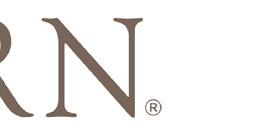


Charles Back is third-generation owner of Fairview, one of South Africa’s oldest and most admired wine estates. The business is known as much for its ethical approach to social development, sustainability and conservation as for the quality of its wines – and cheeses.
What’s the first wine you remember drinking?
KWV Steen. I was young and helped myself to a leftover bottle from my parents’ lunch with catastrophic effect. I was severely reprimanded and at a very early age learned to use alcohol responsibly.
What job would you be doing if you weren’t in the wine trade?
My great-grandfather was a flour miller in Lithuania; my father a wine and cheese maker. I share this passion to add value to agricultural products, which I believe adds value to people’s lives. I have stayed true to my roots. So I would probably have still been a cheese maker … or added value to some sort of agricultural product.
How do you relax?
Rucking – I suggest you google for more info. It’s the best exercise for ageing
winemakers. I also enjoy going off the beaten track. One of my best experiences was driving from the Cape to the Ethiopian border and back.
The best book you’ve read recently?
Outlive by Dr Peta Attia. I regret not having read this book many years ago as I am sure I would have done things differently and perhaps added extra years to my lifespan.
Give us a TV recommendation.
A year or two ago I tried to watch Escobar; I gave up because of the violence. I have recently started watching The Bear on Disney. This is so well done that I almost feel like a spectator rather than a viewer.
Do you have any sporting loyalties?
I am passionate about South African sport. It is amazing what a unifying effect sport and sportsmen can have on our society. Siya Kolisi is an amazing individual and epitomises what South Africa can become.
Who’s your favourite music artist?
Jim Croce is one of them. I enjoy any balladeer from Bob Dylan and Leonard Cohen all the way through to the new ones who have stories to tell.
Who’s your favourite wine critic?
Anyone that does the tasting blind. If all the wine ratings in the world were done unsighted, we would get a completely different pecking order. I often find it frustrating to deal with perception rather than quality, but this is just my opinion.
What’s your most treasured possession?
I am at that age where you are starting to lose friends. In Afrikaans there is a saying, “hulle kap in ons bos”. My translation: “They are felling in my forest”. If you do not have health the rest is insignificant.
What’s your proudest moment?
To have won South African Farmer of the Year was a big deal to me. Our country is endowed with very passionate and extremely competent farmers that survive difficult conditions without any government assistance. I still do not think I deserved that award. I was also very proud when Fairview beat the French in the World Cheese Awards for Camembert. You can imagine how it felt as an African to beat a French cheese producer.
What’s your biggest regret?
Probably that I spend most of my time at work. I should have spent more time with my children and had more time for myself and the people around me that I care for.
Who’s your hero?
Nelson Mandela. As times progress it becomes clearer the massive role he played. This type of statesmanship is seriously lacking at the moment with what is going on in Russia/Ukraine and Israel/Gaza.
Any hidden talents?
I love entertaining children with silly stories. I often think if I had the time and the talent to draw, I would have loved to publish kids’ storybooks.
What’s your favourite place in South Africa?
Swartberg Mountain Pass on a bicycle. I try and cycle it every year, but it is getting harder each time. It is a very special place which combines a feat of engineering with natural splendour.
If we could grant you one wish …
I am a very restless person, always on the search for new products, opportunities and challenges. It would be great if this decreases over time.
